
TWO ON AND WITH
4 May 2024By Fan Wu & Jeremy Laing
Jeremy Laing appears in blue, Fan Wu speaks in violet.

By Fan Wu & Jeremy Laing
Jeremy Laing appears in blue, Fan Wu speaks in violet.
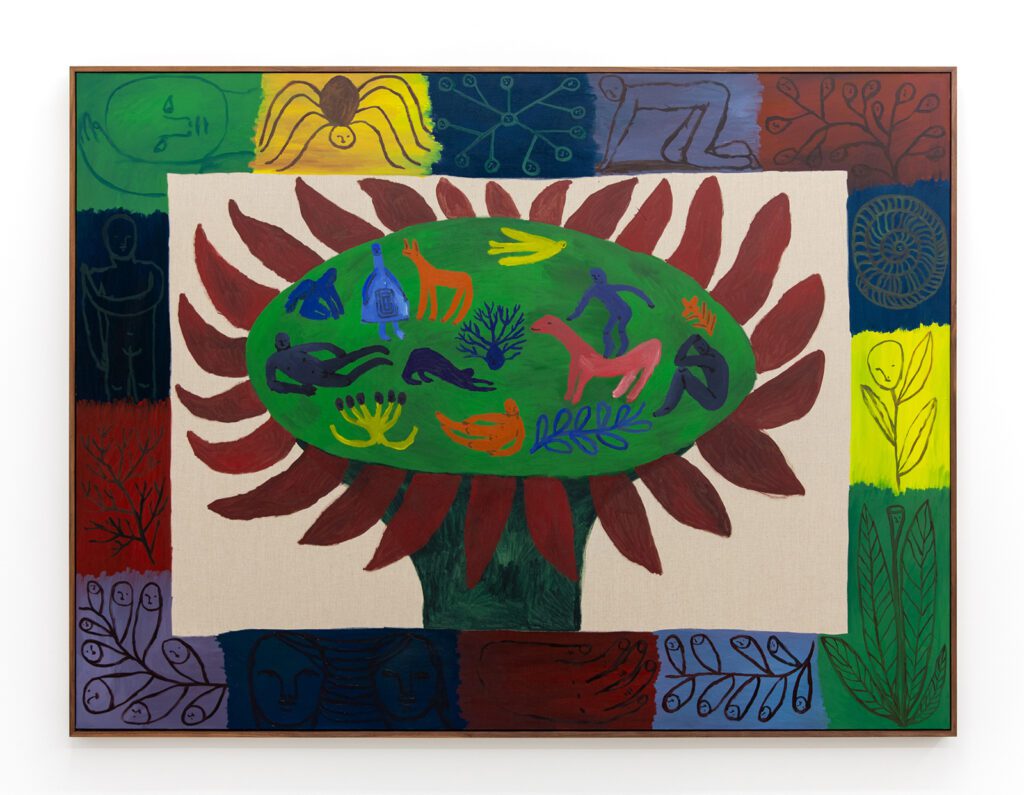
By Michael Thompson
The final scene of William Dear’s academy award–winning Harry and the Hendersons (1987), sees patriarch George Henderson, played by John Lithgow, lead his family into a dense wood situated atop a secluded mountain range. They’ve fled here in an effort to escape a pursuing tail of journalists and covert government agents who are eager to capture the family’s illicit cargo: a giant sasquatch named Harry. After it proves difficult to hide Harry in their suburban Seattle neighbourhood, the Hendersons rush him into the mountains in an attempt to return him to a more suitable home. In this culminating scene of the film, Harry drifts listlessly into the woods, heartbroken by his forced departure from the Henderson family, who watch on in a tearful goodbye. Suddenly, the panoramic shot is interrupted, and the forest closes in around Harry as members of his sasquatch family magically reveal themselves from the foliage, granting viewers a happy ending by assuring that all is now right as Harry has returned to his true home. This cast of mythic forest creatures has the added function of calling perception into question. Rewinding the film reveals that they were in the scene all along, made imperceptible simply by the focus our attention gives to the characters we know. The scene proposes that a world of impossibilities can be found all around us, if only we knew where, or indeed how, to look.
Continue Reading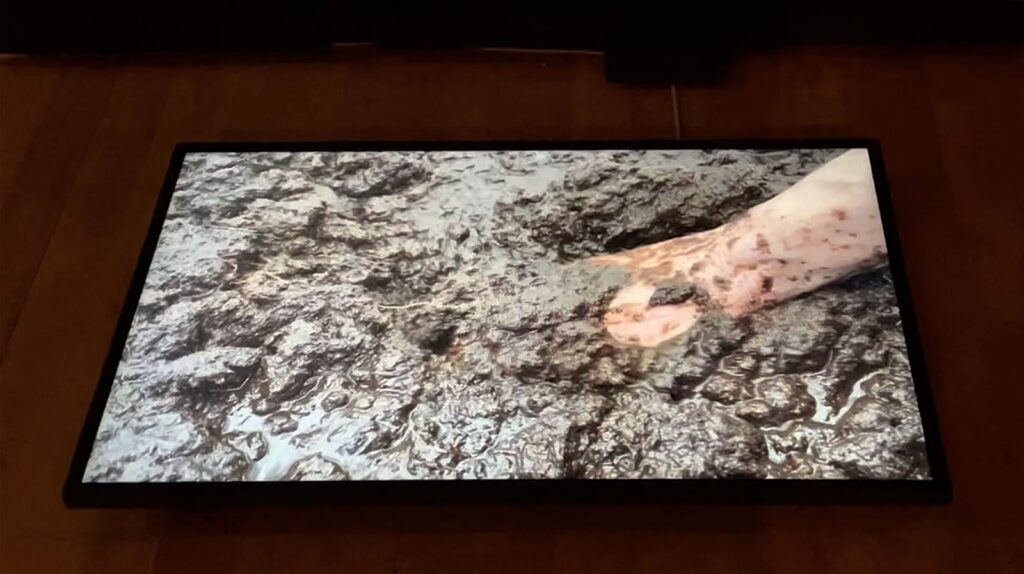
By Lindsey french
“The sound is incredible. I knew I might never hear anything like that again.” As artist Tracy Peters describes this to me, I try to imagine the squelch of snowshoes pressing into a dense mat of waterlogged Sphagnum moss. The artist is telling me about her recent research trip to Store Mosse National Park, the largest protected bog in Sweden, where she spent three days during the autumn of 2022 walking among acid-loving plants, submerging film and photo paper below the wet surface, and making audio and video recordings. She sends me a video from the resulting exhibition in Stockholm: it depicts her hand reaching into wet soil, submerged, then gliding through the peat while mismatched audio of footsteps sonically tell me more about the surface of this landscape than what I can visibly see.
Continue Reading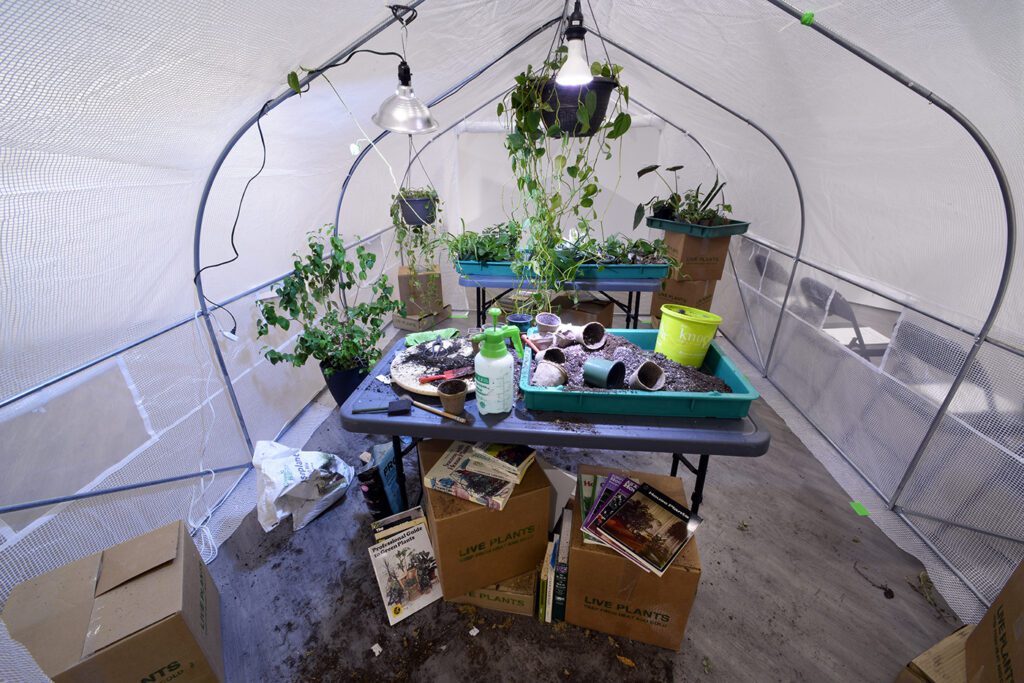
By Jera MacPherson
Last October, I procured a new house plant under unique circumstances. A small Hoja specimen was transferred into my care at the Art Gallery of Regina during a free plant adoption project by artist Alyssa Ellis. During the exhibition’s run, visitors were asked to symbolically enter into an interspecies social contract with their new plants, signing a formal agreement hinged on reciprocal notions of care. Even though the exhibition has long since closed, the themes of the show become ever more imposing—not unlike the plant that continues to grow in my care.
Continue Reading
By Ido Radon
What more can be written about what has already been said? Before these fingers so much as touched the keyboard, the discourse ran thick around Alibaba Conundrum, an exhibition at Griffin Art Projects by an artist duo of the same name. So many words had been said and written by the artists Ali Ahadi and Babak Golkar, curator Lisa Baldissera, and invited panel respondents, that even the gallery checklist was layered with further descriptions and explications beyond the usual fare.
Continue Reading
By Anqi Shen
I can’t say for certain why Parastoo Anoushahpour’s recent film The Time That Separates Us (2022) absorbed my attentions. In the spring, I found myself on the edge of the University of Toronto’s St. George campus in Innis Town Hall, a cinema and lecture theatre. I was compelled to take out my notebook in the dark to record some thoughts: Story of the Ammonites / Lot’s daughters—The key to taking a selfie is to take just one—’Valle’–Yes—There–English—Not everything is meant to be written—All memories become important—A light hand / a Heavy Land.
As part of a 2023 Images Festival screening series called Passages, Anoushahpour’s film was screened alongside the works of Iranian filmmakers Naghmeh Abbasi, Siavash Yazdanmehr, and Rojin Shafiei. Collectively, these works spoke to each other in Arabic and Farsi, between modes and metaphors. I tried to understand the language between them. Shot in Jordan and Palestine, The Time That Separates Us is grounded in the land and the mythologies around Lot’s Wife and the Pillar of Salt. In the film, an intimacy of thoughtful and honest intentions is foregrounded in the exploration of the film’s subjectivities in a heavily mediated landscape.
A couple of weeks after the screening, during a trip to New York City, I reached out to Anoushahpour to ask if she would be open to talking about her work. The Toronto-based filmmaker and artist spoke with me from Athens, Greece, where she was at the time. Our conversation meandered between ideas I had sent her in an email, and we spoke about elements of craft and process—not in a way that would explain certain artistic decisions or meanings, but to more insightfully navigate why I came away feeling so touched by her work.
Continue Reading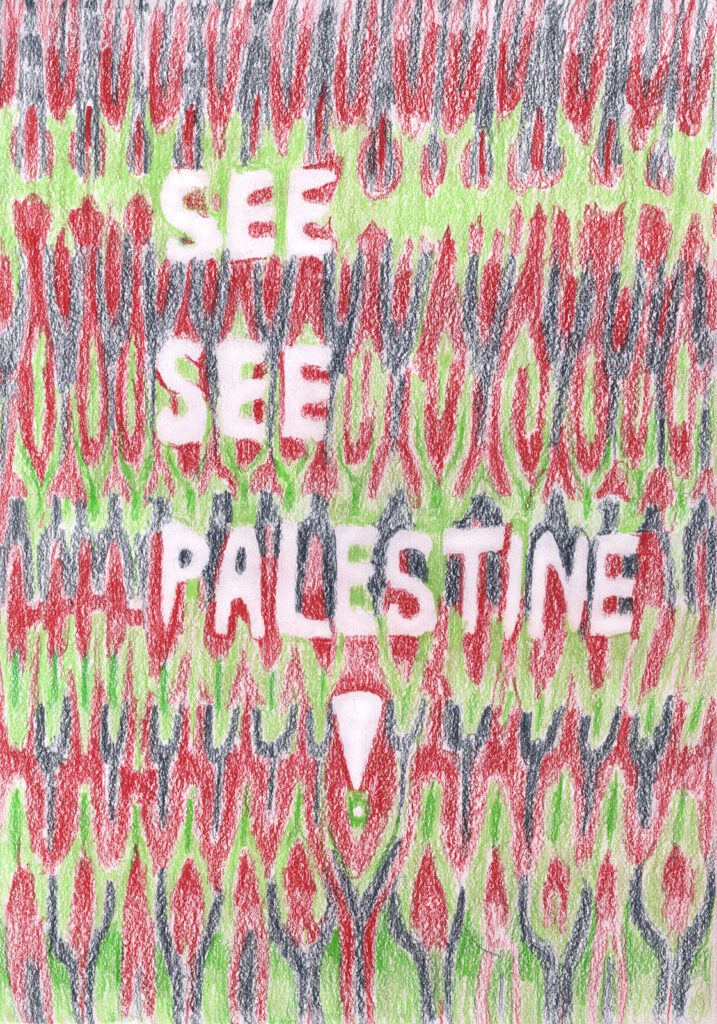
By Amanda Boulos
When I’m chanting for justice, peace, a ceasefire, and mercy for Palestine and Palestinians at protests in Toronto, I catch myself mixing up the carefully constructed asks. I blame this on my grief—my cold body marching for hours at a time. I think about these mix-ups and how perhaps the variations on these chants, many of them over 30 years old, will help someone to finally hear what I’m saying. These mix-ups—or, as I sometimes like to call them, lip slips—allow me to take a different cognitive path to the part of my brain that keeps me living and creative, the part that works on healing.
Continue Reading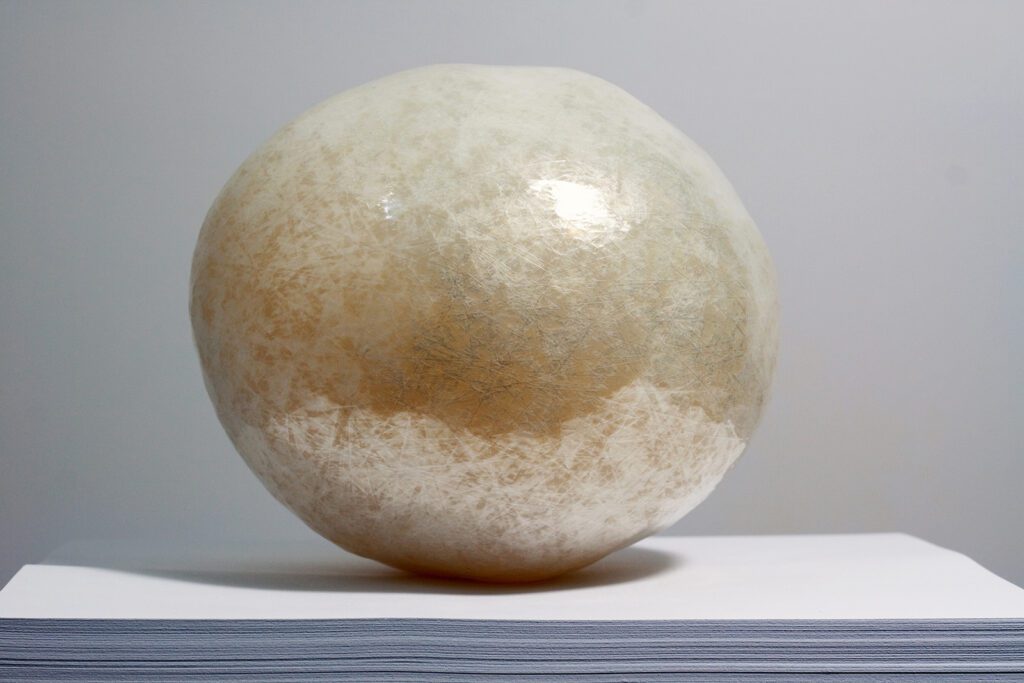
By sophia bartholomew
At sunset, in the calm before a torrential downpour, I spoke with artist Hyang Cho inside the makeshift studio she’s set up inside her garage in Guelph, ON. We talked about her most recent exhibition, Certain Things from Uncertain Moments, which ran from January 14 – March 11, 2023 at YYZ Artists’ Outlet, and reflected on using time as material when creating sculptural work, the relationship between time and boredom, and the near-geologic sedimentation of her varied material accumulations. She walked me through the differentiation she makes between “collecting” and “saving,” and why she always “pauses” her projects rather than “ending” them. We discussed the subtle variations in mass produced objects like glass jars and plastic bags, and whether or not materials can ever truly be transformed. In Cho’s process, a book always remains a book, even after it’s been torn up, mixed with glue, and turned into a rock-like lump of papier mâché—and through our conversation, she also convinced me that sometimes tearing a book apart is more pleasurable than reading.
Continue Reading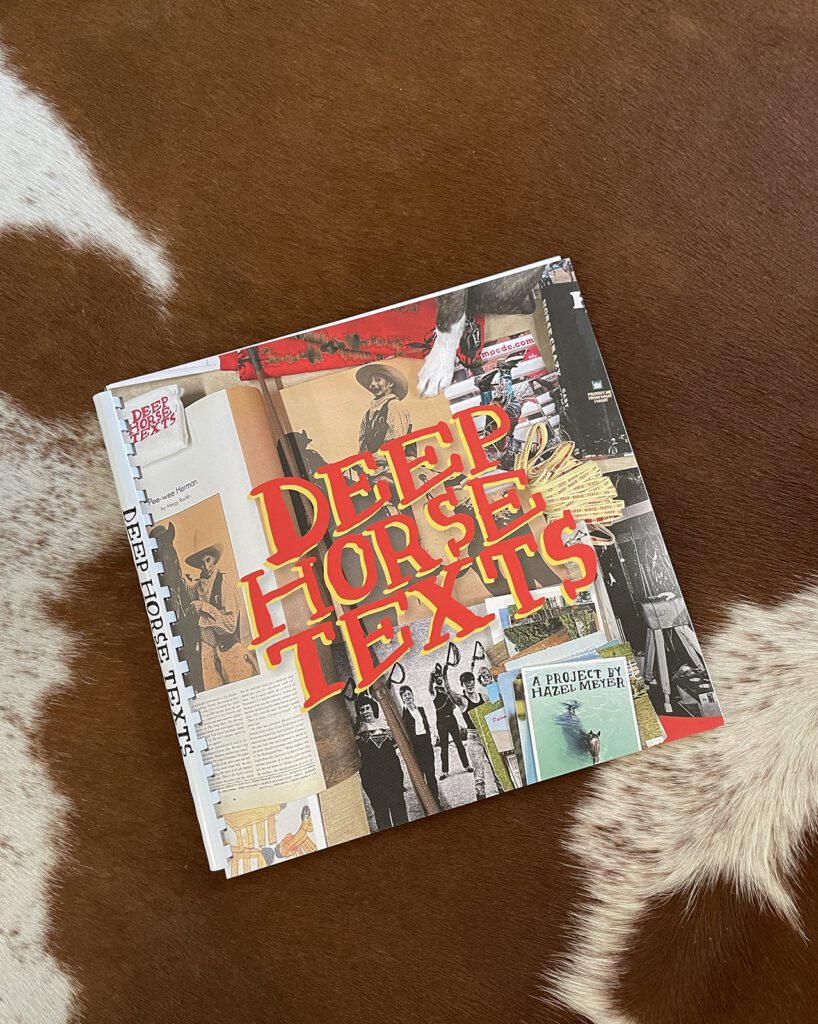
By Maeve Hanna
Continue ReadingDeep Horse Encounter #1: M Meets her First Horse Girl
SYNOPSIS: In this pulp fiction fantasy from the series “Cuntry Lavender Menace” M, your typical futch-leaning dyke writes undelivered letters to J, pondering whether or not she’s a “Horse Girl.”
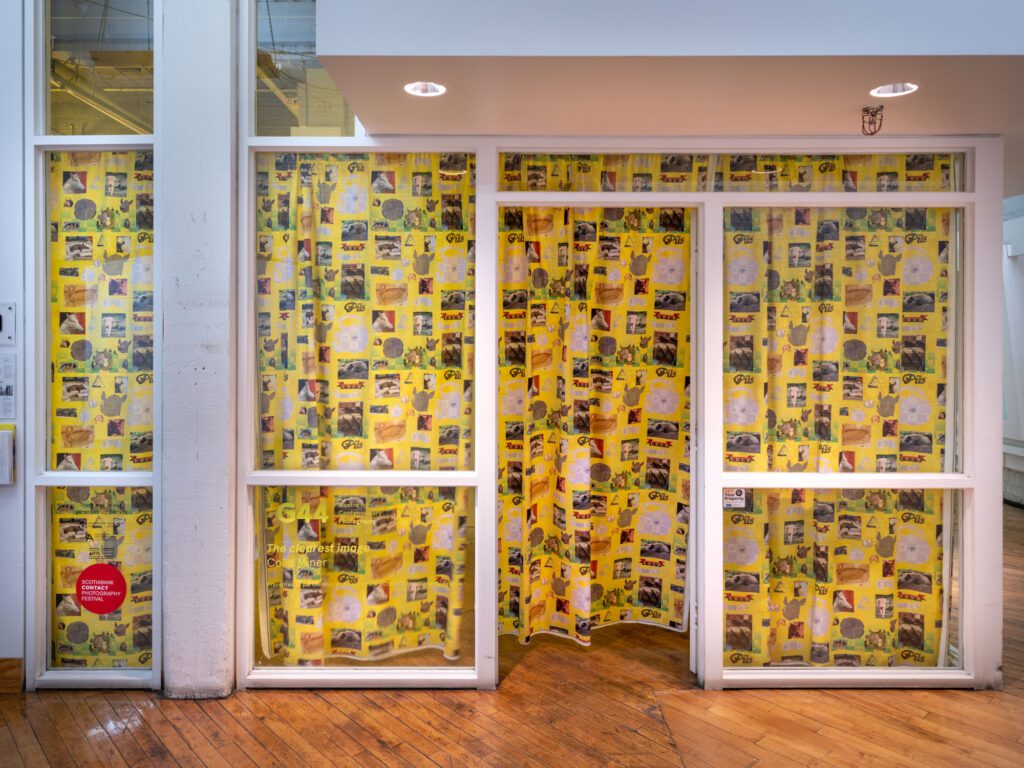
By Jonathan Scott
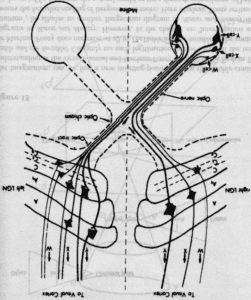
The clearest image is a fucking mess. Holes are cut in and through walls. The crap that came out swept together with the other detritus from the installation into little piles around the space. A deathtrap of electrical cables lay strewn on the floor, excretions from the neon-light entrails which spiral to infinitude. A polluting vibration of sound embroils itself with the feeling of controlled unruliness. A patient kind of anger tightens the air as if we’re waiting for something to happen, but unsure if we’ve just missed it.
Continue Reading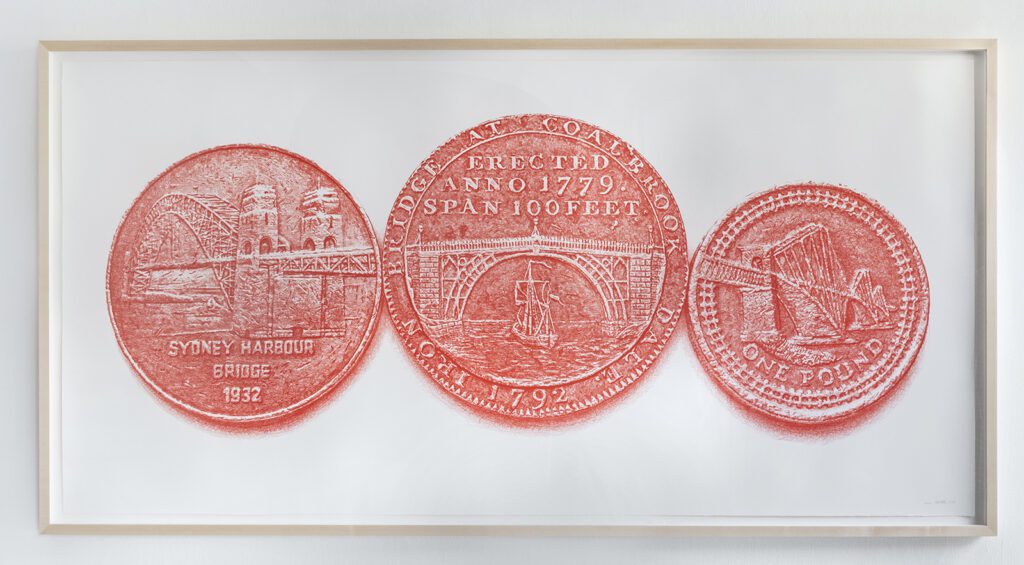
By Erika Verhagen
I went to Niagara Falls, Ontario and all I got was this lousy coin. Well, no, actually, it was in the thick of the manufactured thunderstorm at the Rainforest Cafe where I begged my roommate for a loonie to trade in at the gift shop desk for a single American penny. I walked over to the great touristic crank machine, inserting the penny to receive in return a flatter, more oblong coin sporting a new copper vista: Niagara Falls’ Rainbow Bridge behind a posed cheetah with a body like Tony the Tiger and a face like the Cheshire Cat (years of evolution, and all he got was this lousy grin). My newly minted coin featured two of the three most popular iconographic features of currency: animals and infrastructure, but without the third: a bust on the coin’s obverse. What then, is my suggestion? A dignified portrait of Cha! Cha!, the Rainforest Cafe’s iconic red-eyed tree frog.
Continue Reading
By Nawang Tsomo Kinkar
Toni Morrison wrote that fiction “is a product of imagination—invention—and it claims the freedom to dispense with what really happened, or where it really happened, or when it really happened, and nothing in it needs to be publicly verifiable, although much in it can be verified.”1 After watching Seaview (2015), The Translation is Approximate (2021), and Farzana (2021), three short films written and directed by Zinnia Naqvi, I found myself at a crossroads, unable to distinguish right from wrong, true from false, or fact from fiction.
Continue Reading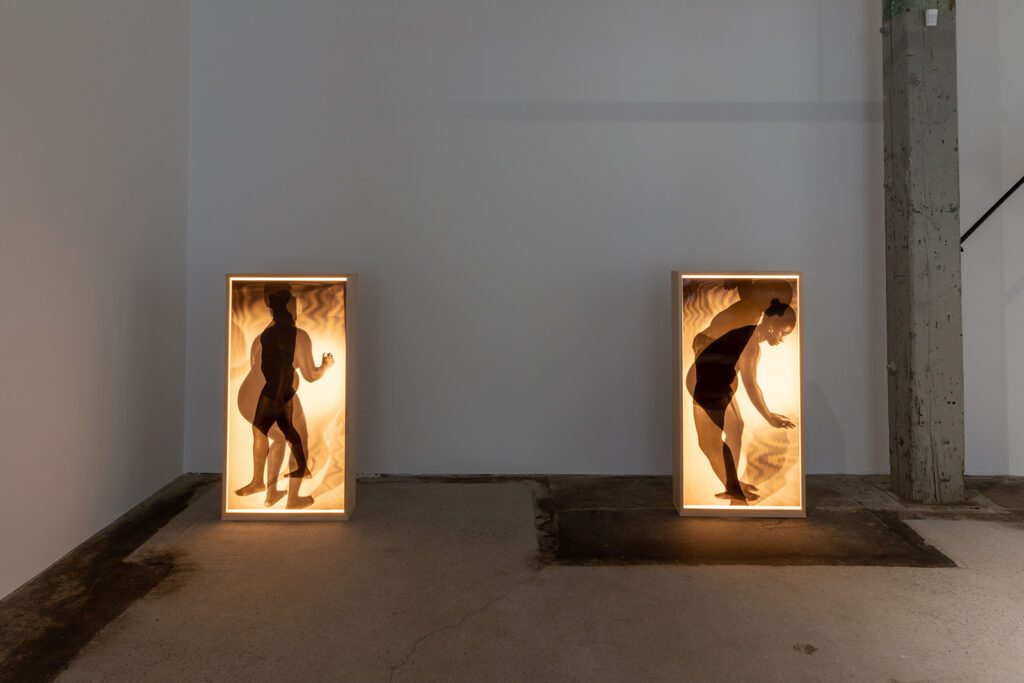
By Ignazio Colt Nicastro
Masked in the dramatic shadows of the dim, ivory gallery space, THAT WHICH WE WERE GIVEN was a luminary exhibition that spotlights the ongoing processes of displacement and dispossession within Black communities. As The Next Contemporary’s second exhibition, the Toronto gallery’s group show furthers themes that are prevalent to director Farnoosh Talaee’s curatorial framework: elevating BIPOC and historically marginalized voices while exploring stories of migration and memory. The collective works by artists Anique Jordan, Kosisochukwu Nnebe, and Mallory Lowe Mpoka delve into nostalgic recalling, archival navigation, colonial disruptions, and somatic relationships that carve space into history for their stories.
Continue Reading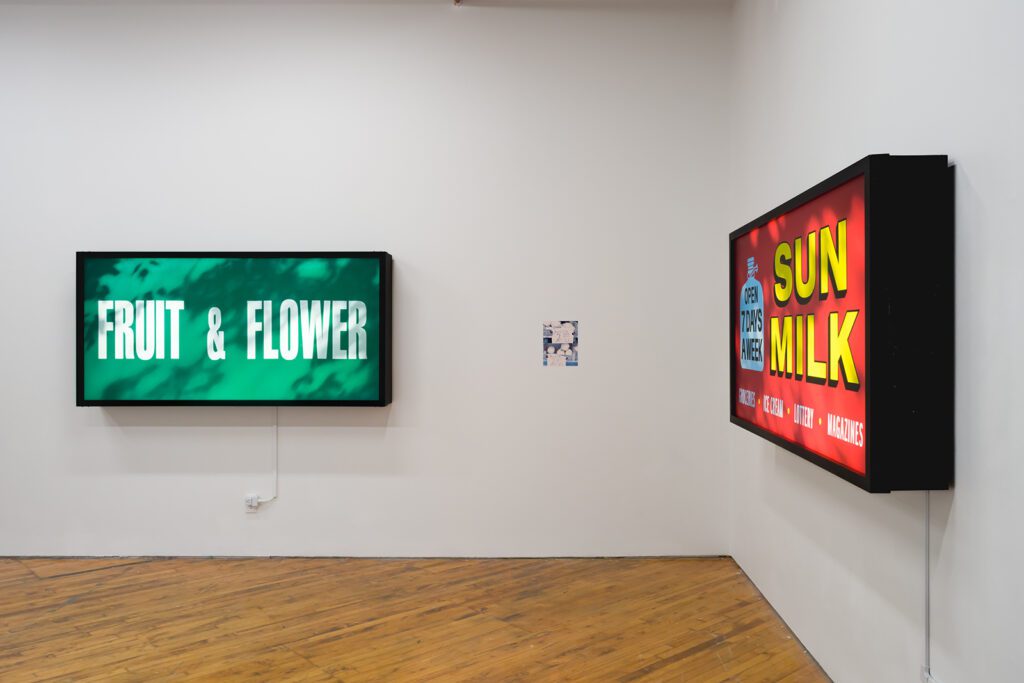
By José Andrés Mora
It’s always the same time of day in my memories when I revisit them: the light remains frozen, and time behaves differently. There’s something about the temporal quality of light that can quickly transform into analogies of time and memory, and, if anything, it’s because working with light is working with energy that continually wants to dissipate. When wrangling light into art projects, the continuous loss of energy must be constantly resupplied—like keeping alive a memory that wants to become undone—while the surfaces and filters that both absorb and reflect light always lean towards decay.
Continue Reading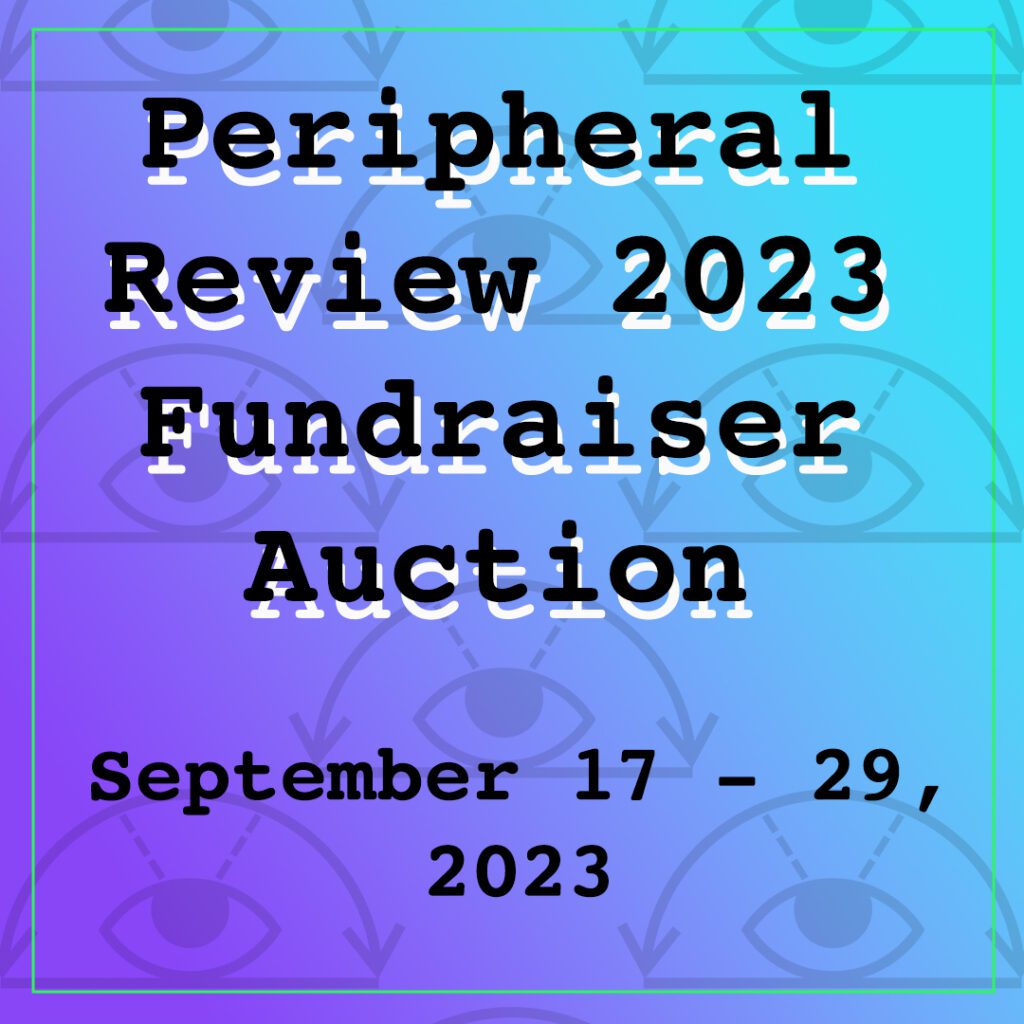
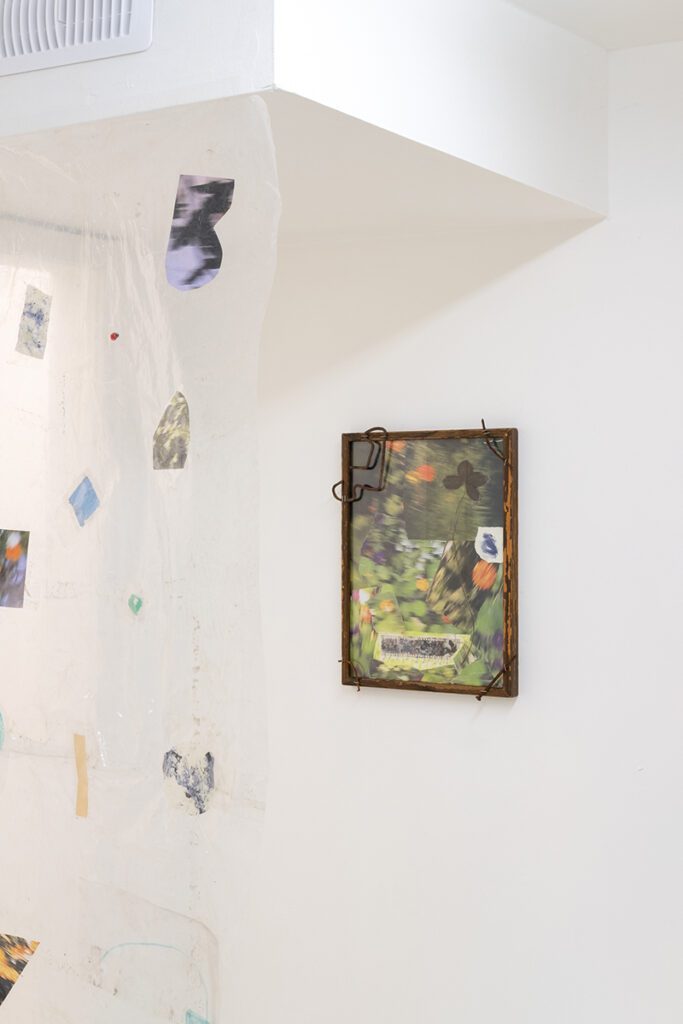
By Stephanie Wu
made for, by, and in my garden :,), a solo exhibition by Vancouver-based artist Mikaela Kautzky, was especially memorable for the care taken in the placement of its contents. To enter the show in a small project space called nap, visitors had to traverse through an apartment in the basement level of a house in Vancouver’s Commercial Drive neighbourhood. In the room to the right of the entrance, the fluorescent lighting and low ceilings of the bedroom-turned-gallery-space welcomed viewers, which felt somewhat ironic considering the show’s title, which referenced a garden. The confined space made me feel as if I had eaten the enlarging ‘Eat Me’ cake from Alice in Wonderland, a feeling which created a notion of enchantment that continued on throughout Kautzky’s show.
Continue Reading
By Yantong Li
The recent Gallery TPW off-site exhibition at Whippersnapper Gallery, titled After Cataclysm, Before the Storm, presented a research-based multimedia exhibition that grew out of a sustained partnership between Gallery TPW and artist-in-residence Alvin Luong, who also commissioned new works by Vietnam-based artists Vicky Đỗ and Đoàn Toàn. Collectively, the artists attended to a meditation and temporal fabulation of post-war trauma, climate displacement, and diasporic memories within the context of contemporary Vietnam.
Continue Reading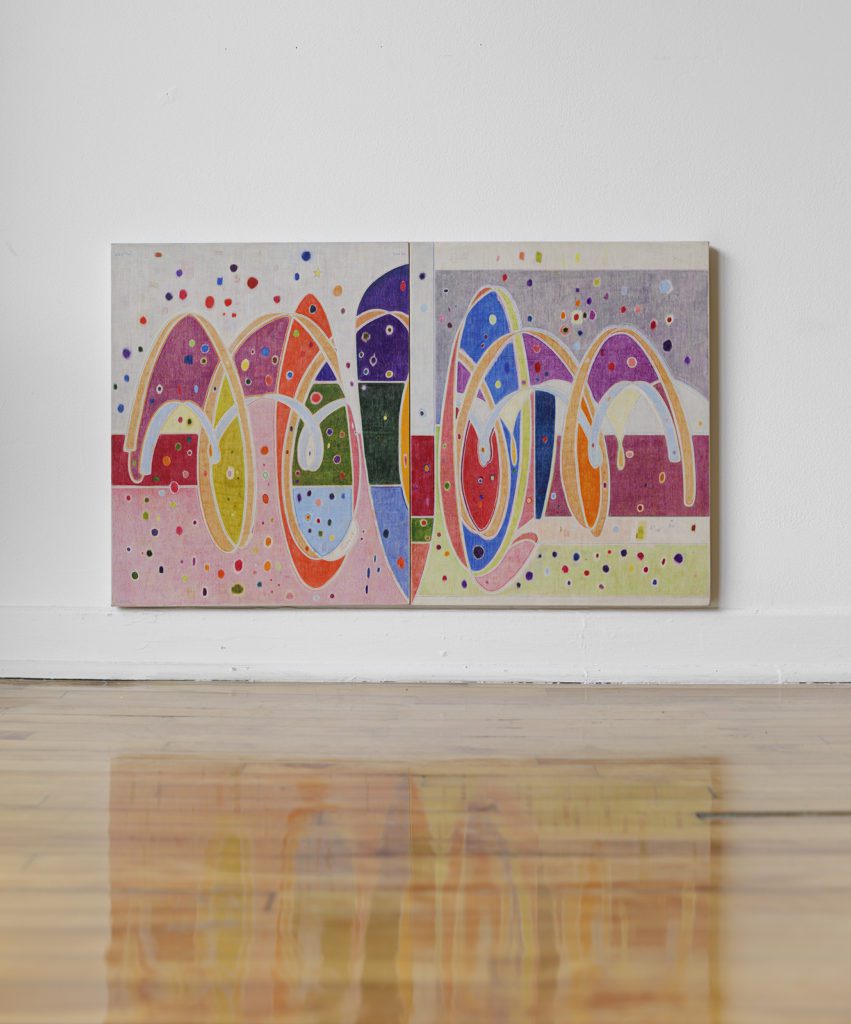
By Rosemary Flutur
Let us assume that an artist is a translator of what constitutes them. Even the most ostensibly impersonal art is a revelation of the artist’s curiosities and desires, and the more empathetic viewer enacts a form of deciphering. My tendency, or perhaps my problem, is that when a work of art moves me, I experience a vague desire to gather information about the artist, not unlike the energy that coils inside me when I have a crush: when were they born; what motivates them to live; did they have a difficult childhood? Unless you’re personally acquainted with the individual (and even then), one has to turn to the contentious landscapes of history or gossip to fill in the gaps. Context doesn’t necessarily offer clearer insight, but it can affect the impact. It also helps with identifying whether or not the artist is privy to artmaking’s capacity to reconfigure their ontology, which occurs when treating the act as one of great intimacy between material and maker.
Continue Reading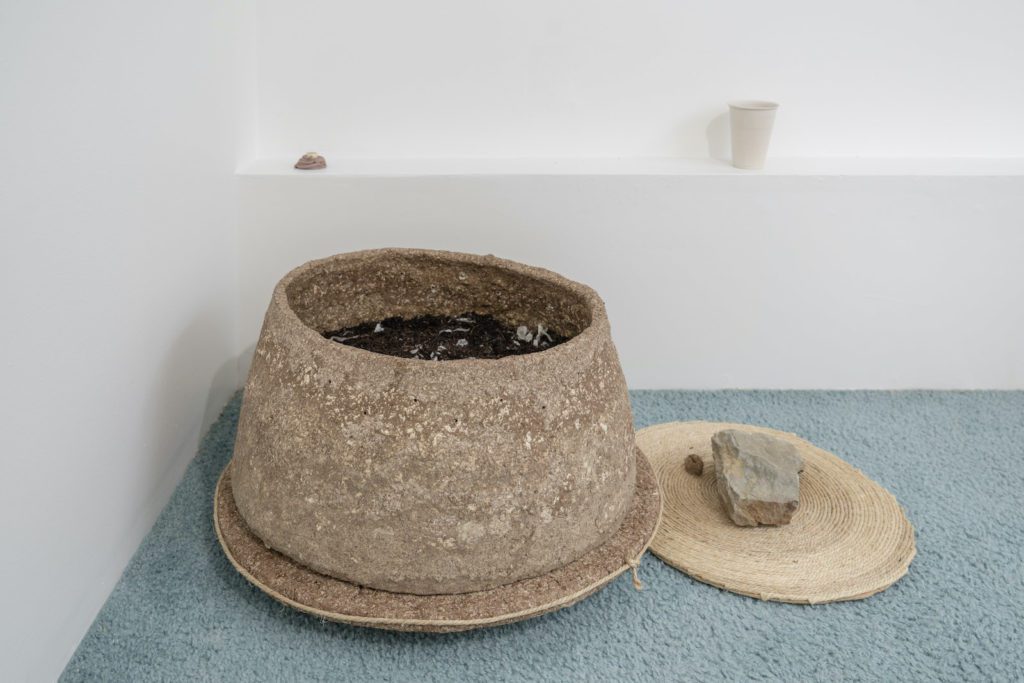
By Yasmine Whaley-Kalaora
I knew this exhibition was about worms. I went to look at them when I walked in, my sock feet brushing the seafoam carpet of dreams comma delta as I made my way to the corner. Christian, one of the curators and a resident of the home where the gallery resided, opened the lid and moved their hands in the soil, uncovering the beets they had fed the worms that day. I felt shy of my foreign hands disturbing their ecosystem, but I put my fingers in anyways, lightly turning the soil until the worms and I touched and both recoiled.
Continue Reading
By Paula McLean
In her 1993 book On Longing: Narratives of the Miniature, the Gigantic, the Souvenir, the Collection, Susan Stewart makes a compelling comparison between the experience of time and miniature models. She describes an experiment conducted at the University of Texas, where the participants were asked to interact with scale-model environments 1/6, 1/12, and 1/24 of full size, including scale figures. The participants were asked to move the scale figures through the environments, to imagine humans to be at that scale, and to identify activities appropriate for that space. They were also asked to let researchers know when they thought that the thirty minute mark had been reached. It was discovered that thirty minutes had been experienced as five minutes at 1/12 scale and two and half minutes at 1/24, leading the researchers to conclude that the experience of time was relative to the size and scale of the models. For Stewart’s argument, this concluded that “the contraction of time experienced through the miniature had the power to transcend the duration of everyday life in such a way as to create an interior temporality of the subject.”1
Continue Reading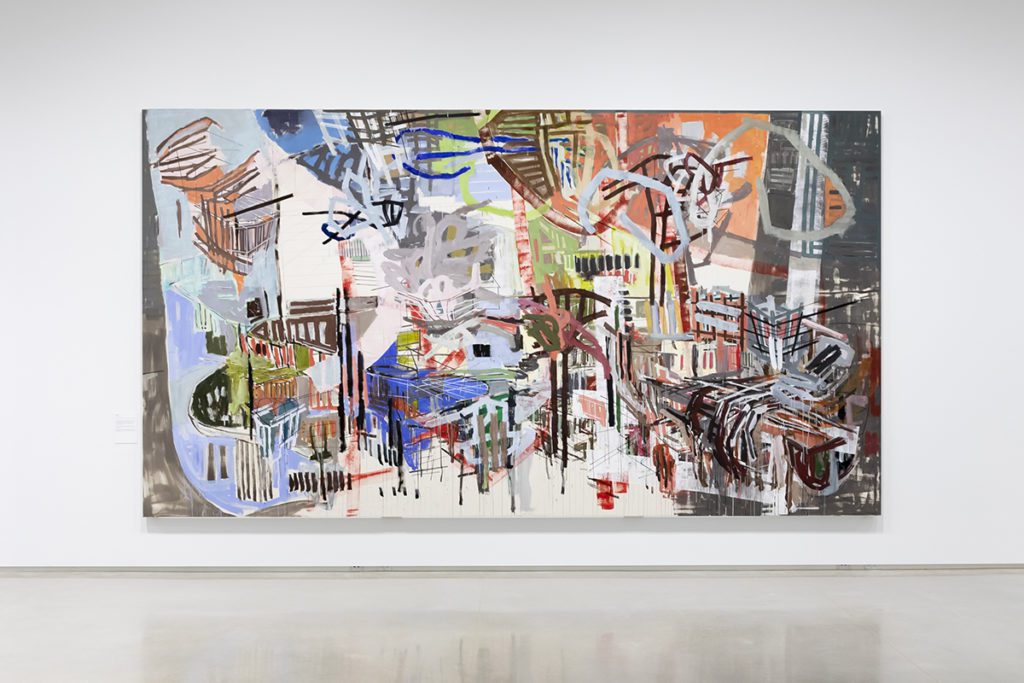
By Mahlet Cuff
Continue ReadingTrauma is what does not go away. It persists in symptoms that live on in the body, in the intrusive fragments of memories that return. It persists in symptoms that live on in communities, in the layers of past violence that constitute present ways of relating. It persists in the symptoms that fuel present wars.
Shelly Rambo, Spirit and Trauma: A Theology of Remaining1
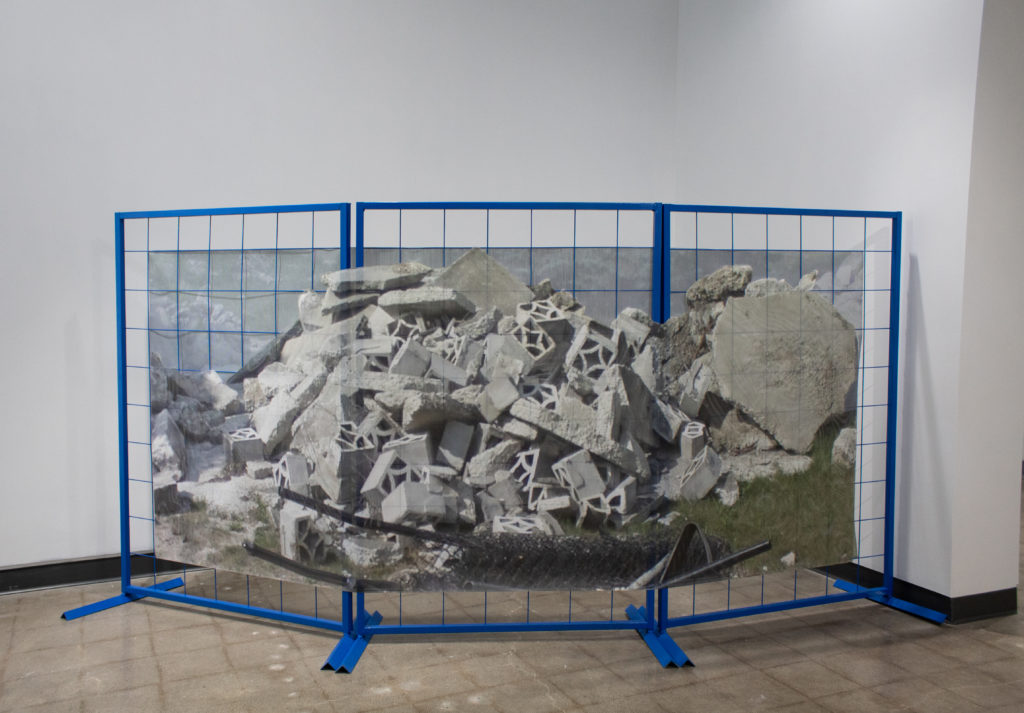
By Nadia Kurd
Calgary-based artist Morgan Melenka’s practice consistently sources from the expansive fields of sculpture, architecture, and printmaking. In her work, Melenka researches and links the histories of material to place—like American-made Formica for example—and in doing so, expands and contextualizes the wider implications of their various uses through her creative approach.
Continue Reading
By Jaz Papadopoulos
Provisional Structure 2 (2022) is a striking installation. The modular tent-like installation—made up of acoustic panels and black fabric framed by wooden scaffolding (built by designer and architect Michael Liss)—rises up to the third story of the Vancouver Art Gallery. Inside the tent walls, gallery visitors can sit, watch, and listen to the Disability Filibuster:1 a three-day online protest, the largest widespread gathering of disabled people in Canada.2 This video, complete with audio, captions, and ASL interpretation, screens on loop within the namesake exhibition of NEXT: Provisional Structures, the group exhibition organized by Carmen Papalia which took over the VAG’s second floor from December 2022 to April 2023.
Continue Reading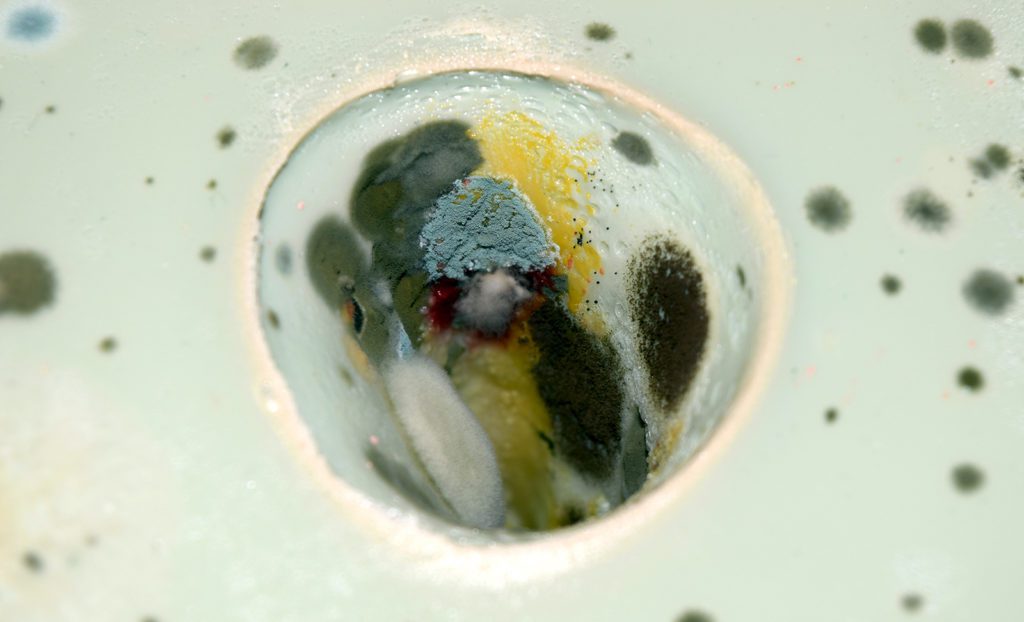
By Lauren Prousky
For as long as I can remember, I’ve found comfort and pleasure in the sensation of soft things slipping through my fingers. I actively sought, and continue to seek out, sensory experiences I can squish in my hands, savouring the feeling of something being squeezed through the delicate space between each finger. As such, the space between my fingers has long been a murky secondary pleasure zone, producing in me an eagerness to run my hands through any dangling, soft, or gloopy matter within reach.
Continue Reading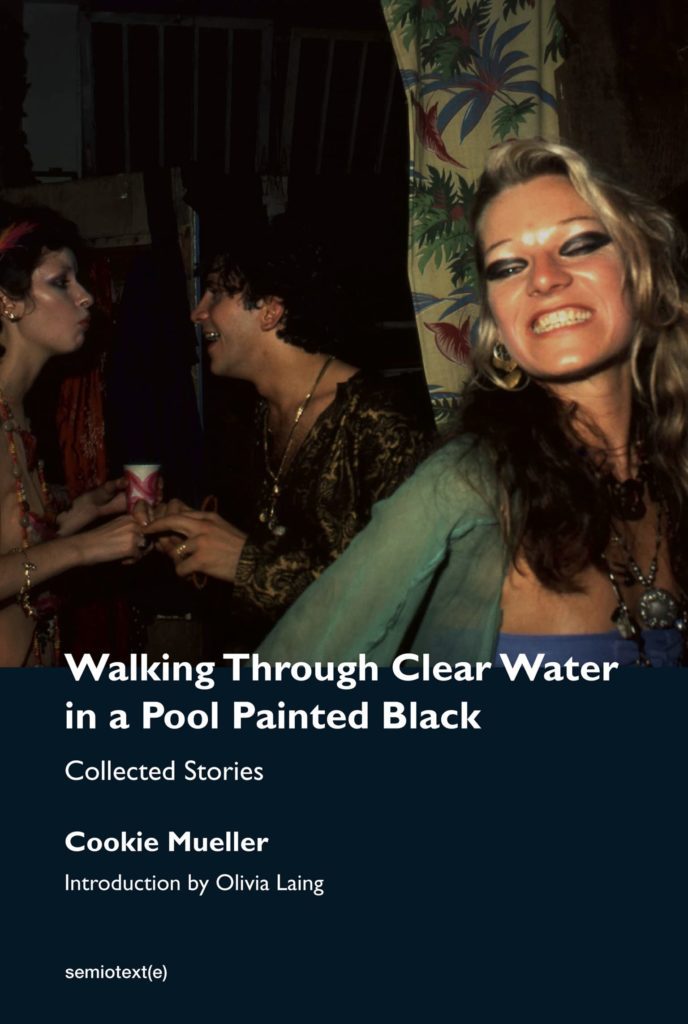
By Madeline Bogoch
Cookie Mueller holds the niche title of it girl’s it girl—which may be partially attributed to remaining just obscure enough to fly under the radar of mainstream recognition. A recent reissue of her collected writing, Walking through Clear Water in a Pool Painted Black, has reignited interest in the always multi-hyphenated Mueller, and ensured that her legacy continues, several decades after her death of an AIDS-related illness in 1989. The expanded text, originally published by Semiotext(e) in 1990, features a range of Mueller’s oeuvre as an art writer, essayist, fabulist, and advice columnist, alongside a new introduction by author Olivia Laing.
Continue Reading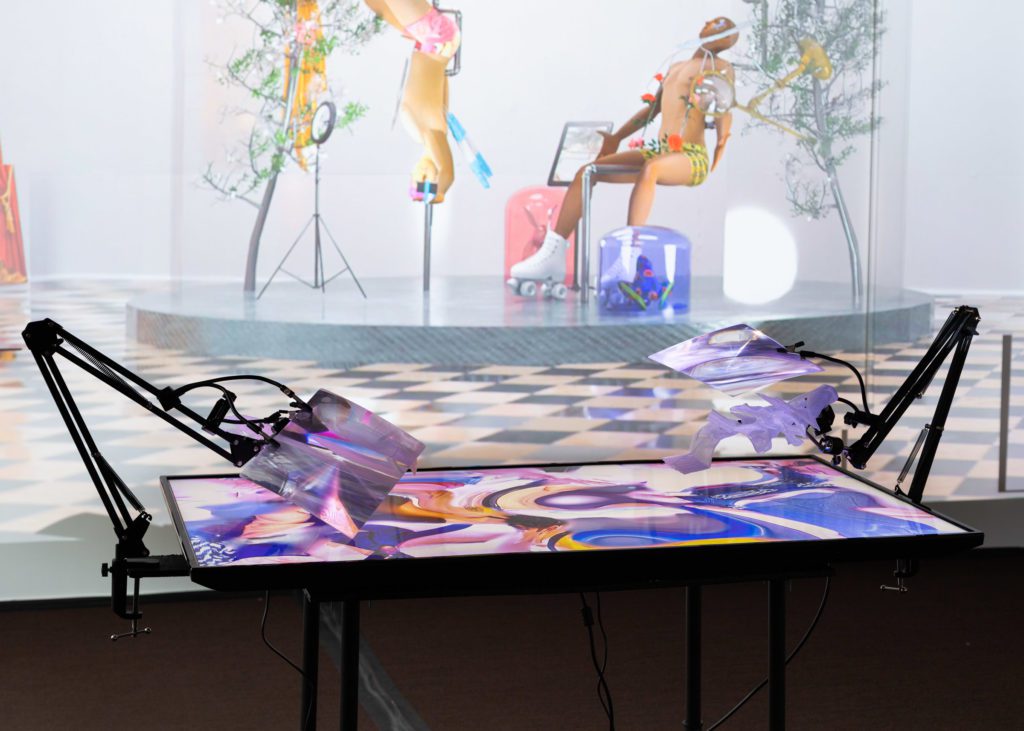
By Sophia Oppel
The museum of the copy/pasted identities, a solo exhibition by Francisco González-Rosas, was hosted by The Centre for Culture and Technology at the University of Toronto, where González-Rosas was the Centre’s inaugural artist-in-residence in the fall of 2022. Currently based in Montréal, González-Rosas is a Chilean-born performance and new media artist, whose work engages with technology as both an extension of, and witness to, corporeality. Formerly the office of media scholar Marshall McLuhan, the old coach house on the university’s campus offered an unconventional location for an exhibition that re-stages itself in a museum setting.
Continue Reading
By Katie Lawson
I first came across Laura Hudspith’s work in 2019, which coincided with a shift in the artist’s practice to a more autotheoretical approach that draws on her lived experience with chronic illness. At that time, I was months deep into my own isolating and confusing journey that would eventually lead to the diagnosis of fibromyalgia, the latest in a growing list of medical conditions that have shaped my life to date. I was immediately drawn to Laura’s compelling use of object, image, and text in relation to both the individual and the collective body. I felt a wave of relief; I felt seen. Despite the fact that I initially encountered Laura’s work virtually, the impact of her practice is evident in the sense of connection and comfort it offered me in a time marked by unknowing.
Splitting her time between Pittsburgh and Toronto, Laura has since continued to deepen her engagement with the intersections of art, critical theory, politics, and medicine, resulting in a wide range of material experimentation as she works towards the completion of her graduate degree. This winter, I had the privilege of sitting down with Laura for an in-depth conversation about her practice, traversing multiple bodies of work from 2020 to the present day.
Continue Reading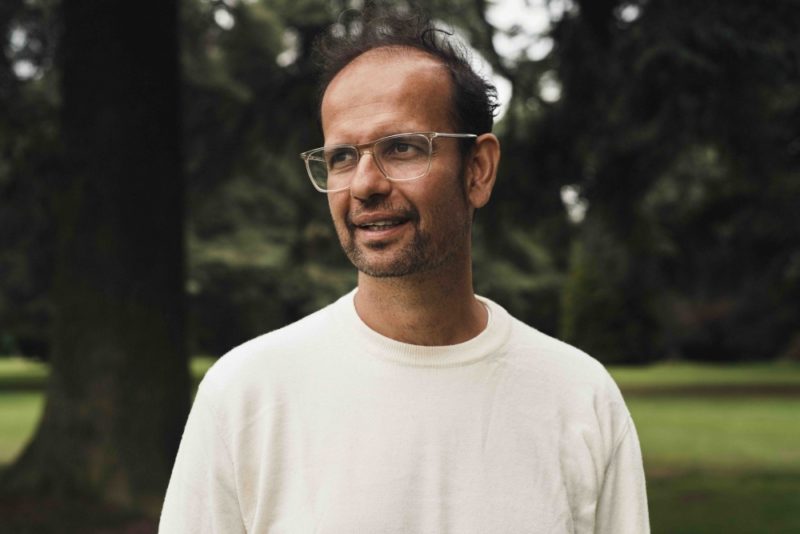
By Maxine Proctor
After two years of living almost exclusively behind screens, returning to the public sphere has been daunting and stress-inducing for many people. As someone who already deals with social anxiety, I felt incredibly nervous visiting the Remai Modern knowing that Tino Sehgal’s exhibition featured live art, as well as participatory components. Moving inconspicuously and aimlessly through a museum is not only my preferred method of viewing art, but the freedom of unencumbered exploration is perhaps the motivation behind my love of art more broadly. The thought of awkward conversations with strangers, or the pressure to perform without adequate notice, was terrifying. However, medical experts have noted that most people facing post-lockdown social anxiety are simply out of practice, so I took a deep breath and reframed this experience as much-needed exposure therapy.
Continue Reading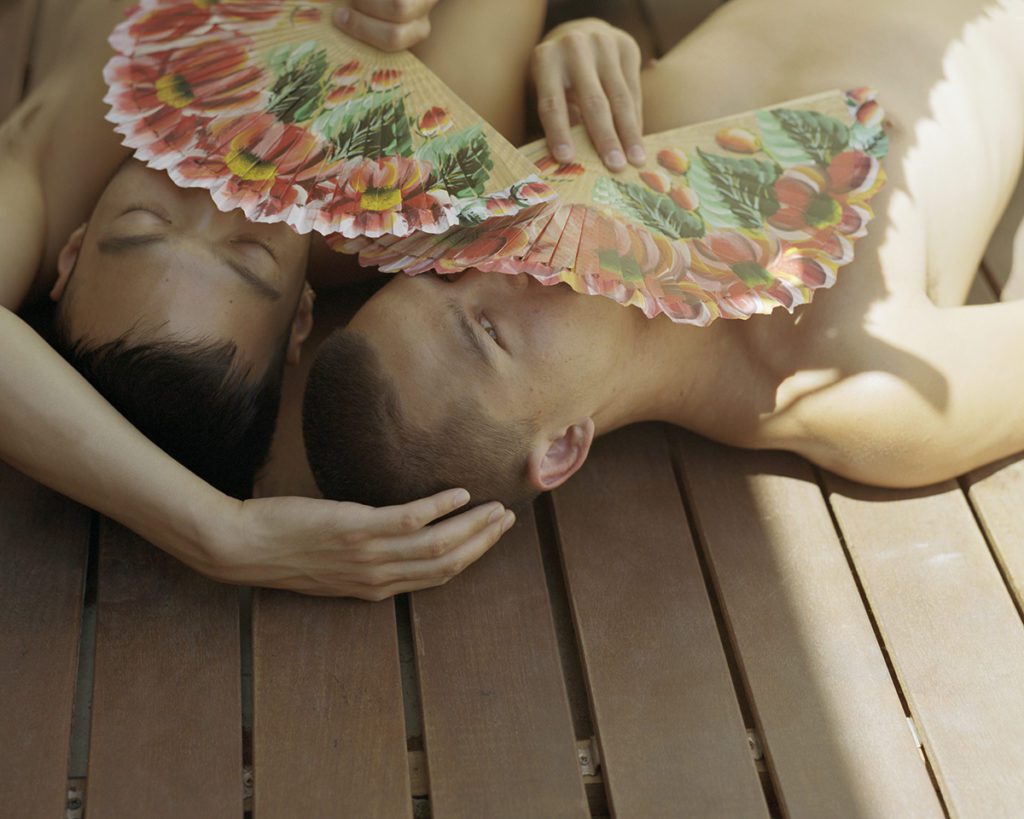
By Nawang Tsomo Kinkar
How does one evaluate the authenticity of an artist’s work? Is it the artwork itself or is it the engagement with it? In this late-capitalist, image-driven world, what does meaningful engagement with contemporary photography look like? How do we value generosity, connection, depth and above all—truth?
I am often at a crossroads between admiring an artist’s body of work at face value—the aspects that are detectable on the surface, the interpretations that comfortably linger in the presentation space—and how I might nurture this relationship between artwork, artist, writer, and as a human being. It therefore came to me as no surprise when I fell in love with Beau Gomez’s El Angel. I fall in love so easily, and photography can be such a beautiful thing. However romantic this may be, it’s important to remember that love too can be fickle, and photography, by its very nature and science, is also a fickle phenomenon.
Continue Reading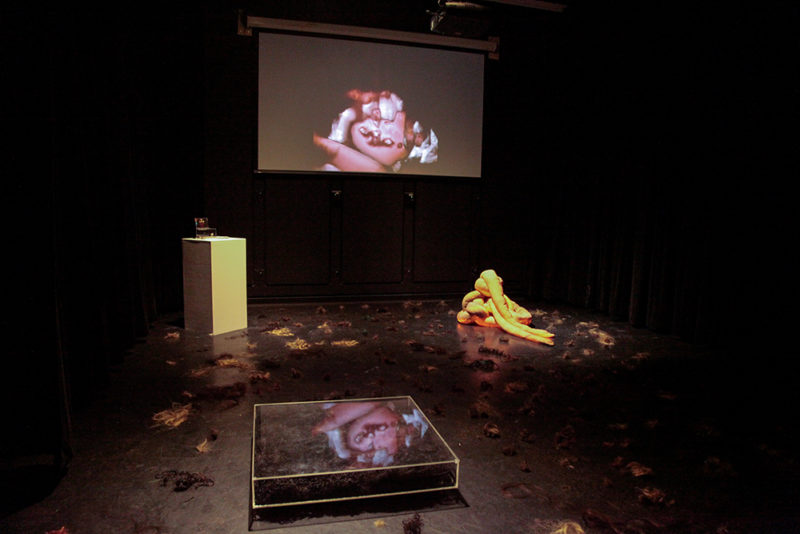
By Kalina Nedelcheva
Walking into Sacred Spit, curated by Lea Rose Sebastianis in Open Space Gallery’s “Black Box,” felt like crossing the threshold of a site teeming with unruly spirits and transgressive energies. Illuminated by soft spotlights, three artworks by Karice Mitchell, Lauren Pirie, and Noelle Perdue come together in a simple installation against the backdrop of theatrical black curtains. At the corner of the Black Box and diagonal to the entrance, a little translucent box sits atop a white plinth. The sign reads “Prayer Requests.” The show explores how the complicated theme of the grotesque manifests in spheres of degradation and divinity. It destabilizes and shifts the boundary that separates the perverted and the sacred in human consciousness. In fusing them, Sebastianis creates a discernable tension that juxtaposes a sense of stillness with the hurricane of what she deems “the boundless body”—a body with no limits that absorbs its environment to inspire “an intrinsic unity with human, animal, and natural worlds.”1 These anarchic artworks tell corporeal stories. Amidst them, and in the darkness of the Black Box, the viewer loses their sense of separation between the embodied self and the contents of the exhibition. The “Prayer Box” catches visitors red-handed in the middle of the grotesque space of boundless bodies and fluid lust, inviting one to repent, confess, and show desire.
Continue Reading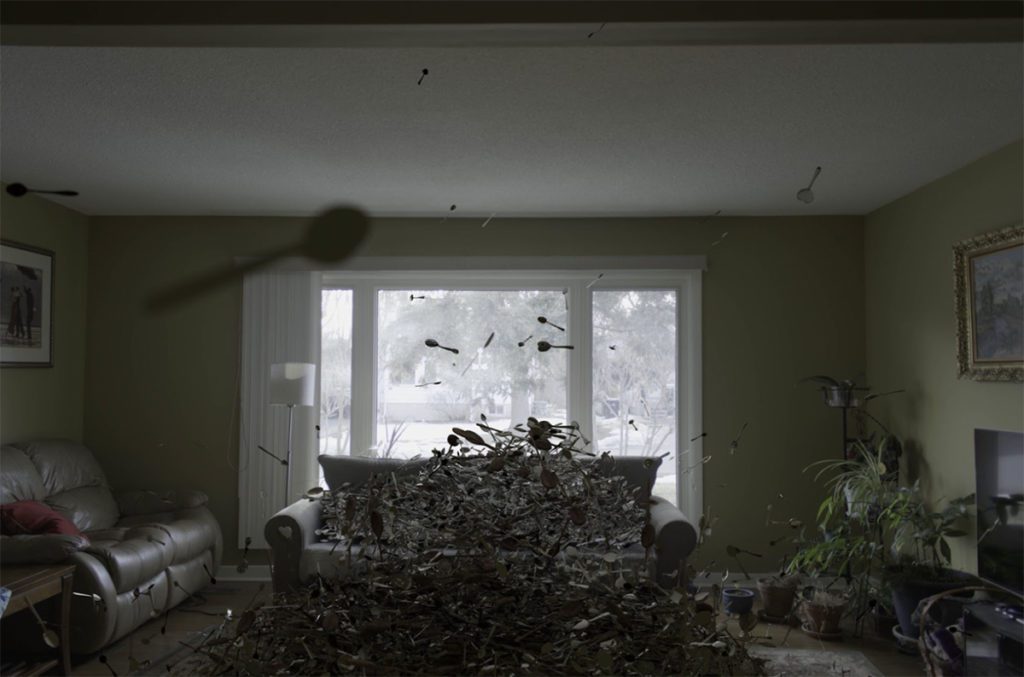
By Tangled Art + Disability
COVID-19 has been a mass disabling event. The disruption of societal routines meant that many people who never before had to worry about overcoming obstacles to accessing their social environment suddenly had to negotiate and advocate for their needs to be met. Shifts around the value and the location of work have taken place, as many in our sector have worked from home and have had to navigate the collapse of private and public space, or had to navigate new concerns for the safety of themselves and their loved ones while working in public. Many of us have had to provide childcare and homeschooling while navigating jobs, mental health, physical illness, grief and loss. In this milieu, many arts organizations have begun considering accessibility in new ways. They’ve made commitments to their Disabled audiences, whether that be to provide digital programming accessible from people’s homes or to do an accessibility audit at their place of work.
Continue Reading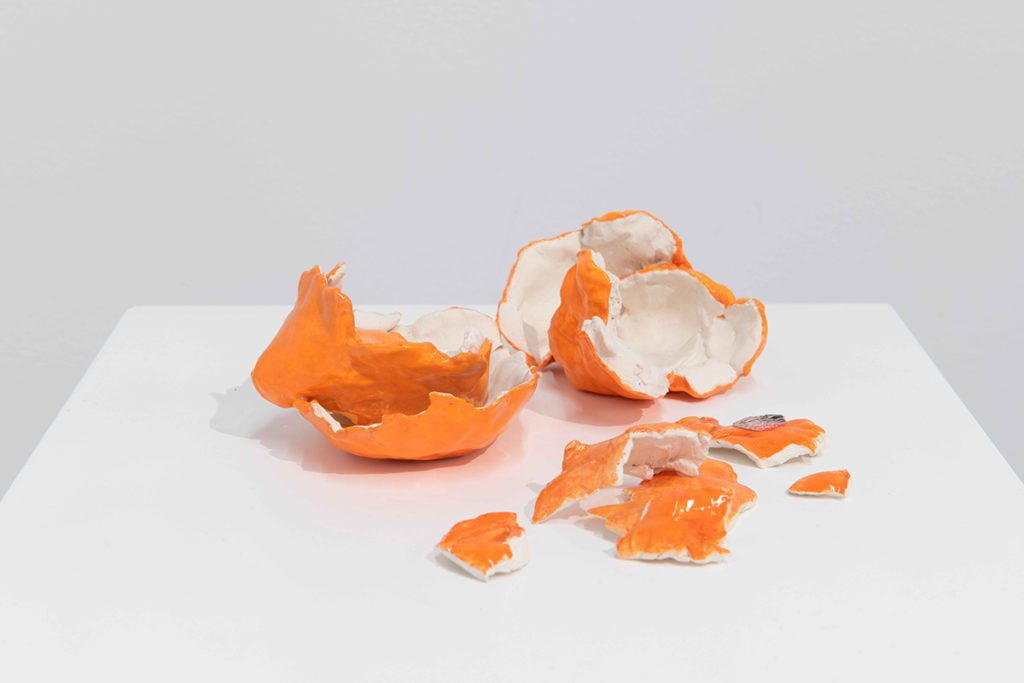
By Marisa Kelly
The Montréal- and Toronto-based artist Lan “Florence” Yee is showcasing their newest series of works Tangerine, After Grapefruit in their upcoming solo exhibition, Just Short of Everything, which will be showing in January 2023 at the Pierre Léon Gallery inside Alliance Française Toronto. Their series of works Tangerine, After Grapefruit features nine different swathes of large five-by-five-foot linens, which are hand embroidered with dark blue thread. The embroidery instructions read as a kind of wry and whimsical poetry, which are partially inspired by Yoko Ono’s 1964 conceptual instructional poetry book Grapefruit. Similarly to Ono’s instructions, Yee’s do not offer much didactic sense to the reader—their instructions are achievable, but are humourous because they aren’t inherently logical, presenting as counterintuitive to our capitalistic mindset that hyper fixates on productivity and rational thinking. In this sense, the artist’s instructions are anti-capitalist agents, where Yee playfully deviates from the standards of the rational and instead calls for the viewer to step into their emotions.
Continue Reading
By Priscilla Barker
“We want to hear your narratives,” is the statement that introduces the online exhibition Erotic Awakenings presented online by Hearth Garage. The ongoing virtual exhibit is an archive of personal erotic awakening stories that were collected, written, and submitted by various named and anonymous contributors—a result of a collaboration between curator Fan Wu and Hearth founders Rowan Lynch, Sameen Mahboubi, Philip Ocampo, and Benjamin de Boer. The series of written poetry and stories approach the very personal and vulnerable experience of sexual awakening from the seemingly dichotomic elements of innocence and carnality. The three-volume collection of texts reminds the reader of universal truths, which are often comedic in nature, found as a result of the vulnerability of sharing personal narratives. Personal, intimate, and voyeuristic, the project mirrors the idea of online forums yet is more tailored in subject and composition. Writing and eros converge in the retelling of lives transformed by an erotic experience, each story expanding on the limitations and freedoms of sexuality. Interestingly, the accounts and memories collected occur from varied points in the subjects’ lives, breaking the popularized mold of the linear development of sexuality within childhood at the onset of puberty, or another coming-of-age narrative.
Continue Reading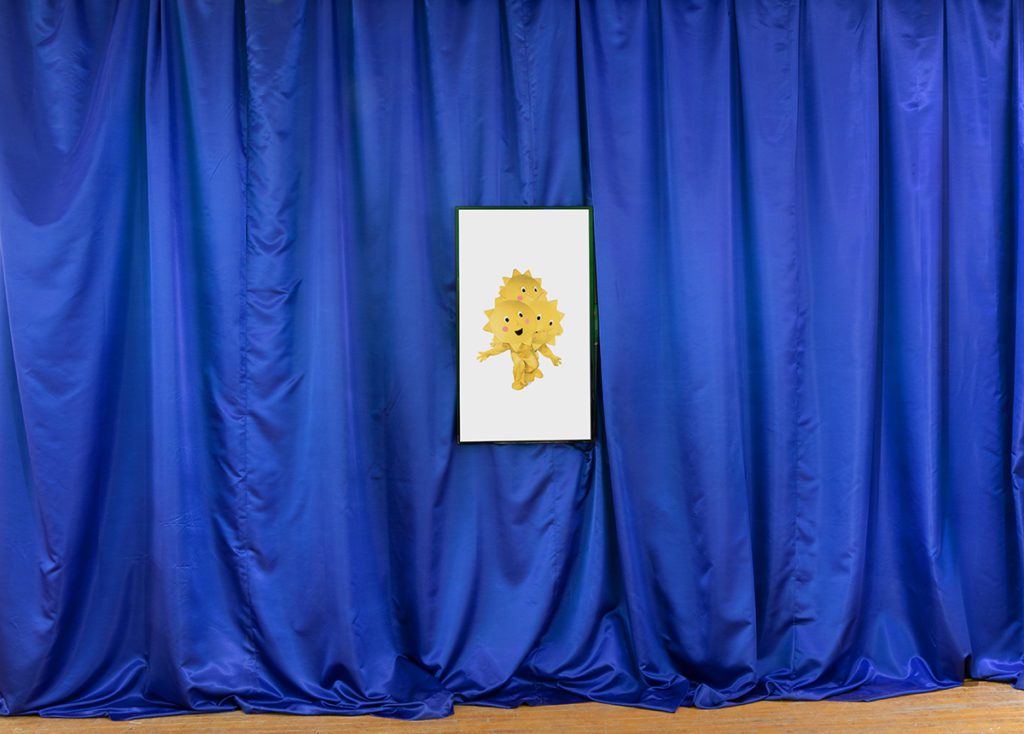
By Sophia Larigakis
At the centre is a bright yellow fountain, its three brimming basins ascending like a tiered wedding cake. Perfect circular droplets, forming chains of liquid beads, cascade from the top. This sculpture, Hannah Doucet’s Wish Fountain (2022), installed at PLATFORM as part of her solo exhibition A Wish Stays With You, is doubly deceptive. To create the “water,” the artist printed a photograph of the liquid onto fabric, made folds in the textile, photographed that, and then made vinyl images out of its composite. The result is both painterly and deeply digital, evoking a Hockney pool by way of The Sims, with all the flattening of density that entails. Approaching Wish Fountain, it is clear that this is no ready-made; it is not a functioning, real-life fountain, nor does it pretend to be.1 As the viewer moves around the sculpture, however, even its slim claim to verisimilitude (in that it is a recognizable form) is called into question. What appears at first to be a three-dimensional sculpture is in fact images on vinyl on two separated pieces of wood, the space between them the space of fantasy itself—the fantasy of dimensionality, of immersion, of liveliness.
Continue Reading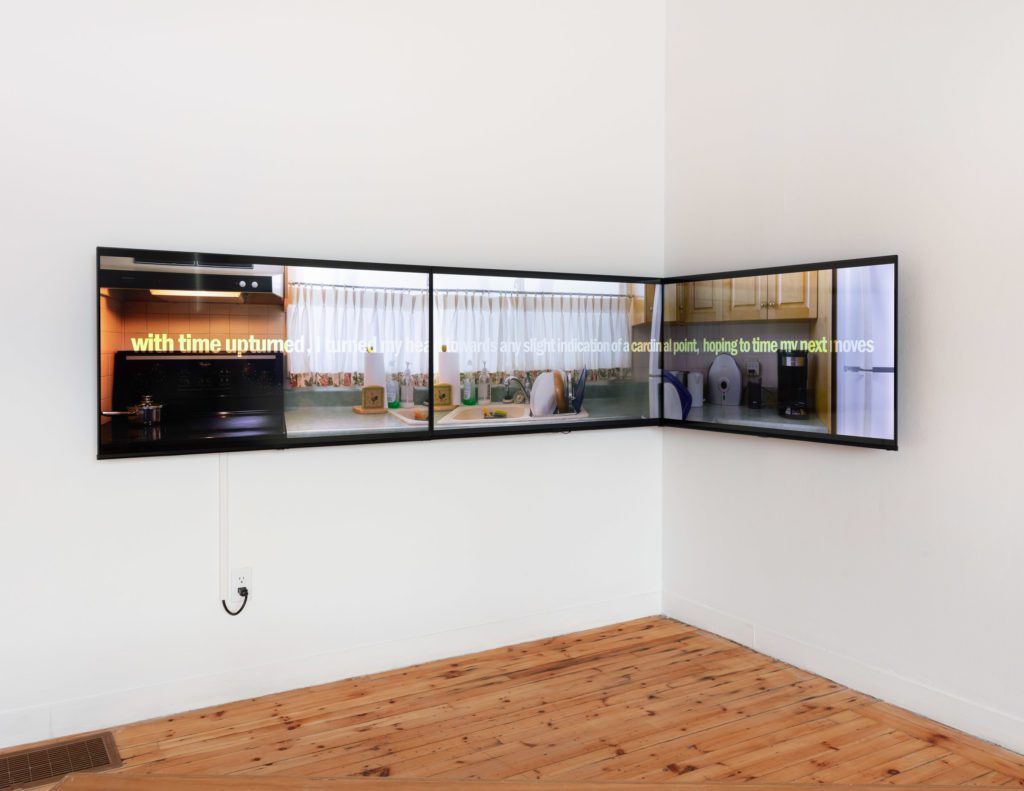
By Yam Lau
On a sunny morning in May, I travelled with José Andrés Mora to his exhibition, The Morning in Reverse at Artspace Peterborough. Passing through the region that day had me ruminating on the petroglyphs at a nearby site that I visited some two decades earlier. The symbols, fissures, and rock substrate that make up the petroglyphs combine to construct a mysterious site-as-text through their entwined material and temporal states. In this environment, the glyphs endure in place and time, endowing everything in the vicinity with an enigmatic significance. The memory of petroglyphs permanently embedded in its geological substrate provides a striking contrast with Mora’s use of text and material support to achieve indefinite effects.
Continue Reading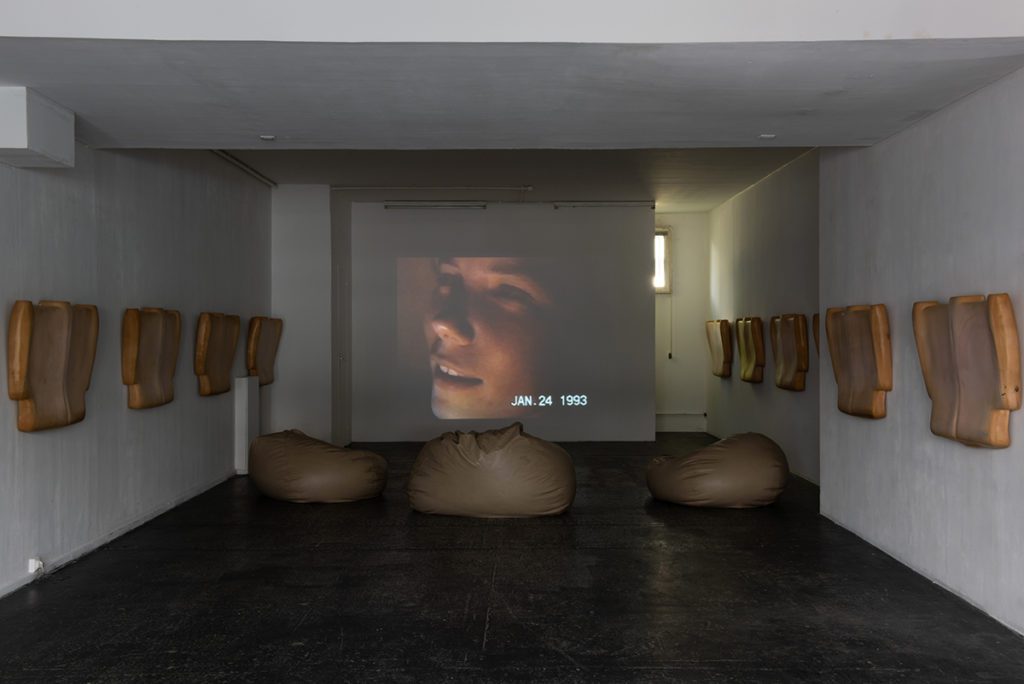
By Alex Turgeon
The martyrdom of Saint Bartholomew, one of the twelve apostles of Jesus, is said to have been the result of being flayed alive for his acts of Christianity by the Armenian King Astyages.1 The saint is often depicted in votive images carrying his flayed skin about him like a cloak, his anatomical musculature exposed as if it were truly rid of all worldly possessions from his selfless act of piety. One of the most iconic representations of Saint Bartholomew is his inclusion in Michelangelo’s The Last Judgement (1535-1541), which was part of the artist’s commissions for the Sistine Chapel. There, Bartholomew is presented under the right foot of Jesus, carrying his representative cloak of flesh in-hand. The face of this draped skin is often considered a self-portrait of the artist Michelangelo himself, rendered in the hollow folds of its mask-like face—absent of a body.
Continue Reading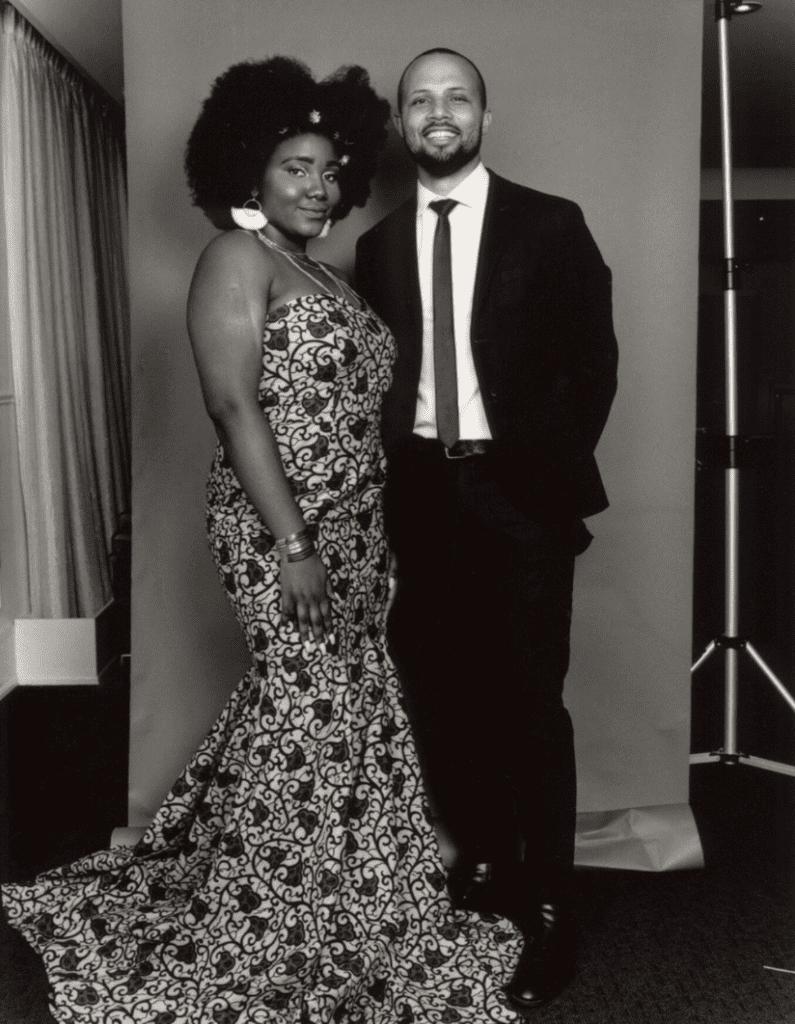
By Maria Kanellopoulos
Toronto-based photographer Justin Aranha’s first solo exhibition at Gallery 44’s Member’s Gallery transported us to the early summer of our senior high school year. In June 2018 and 2019, Aranha photographed graduating students of his alma mater, St. Joan of Arc CSS (formerly Jean Vanier CCS) in Scarborough, Ontario. A Night to Remember included dozens of undirected snapshots of prom-goers: couples, individuals and groups of friends. The interactions with his sitters were brief, lasting a few minutes in his paper-backdrop photo booth set up in the prom banquet hall, but the impressions the students made on him and his viewers will last a lifetime. The artist was recently chosen by The British Journal of Photography for their 2022 Ones to Watch list,1 the journal’s annual selection of emerging image-makers. Aranha’s simple yet disarming photography centres around portraits that capture fleeting moments of joy, courage, laughter, love, desire, angst, and beyond.
Continue Reading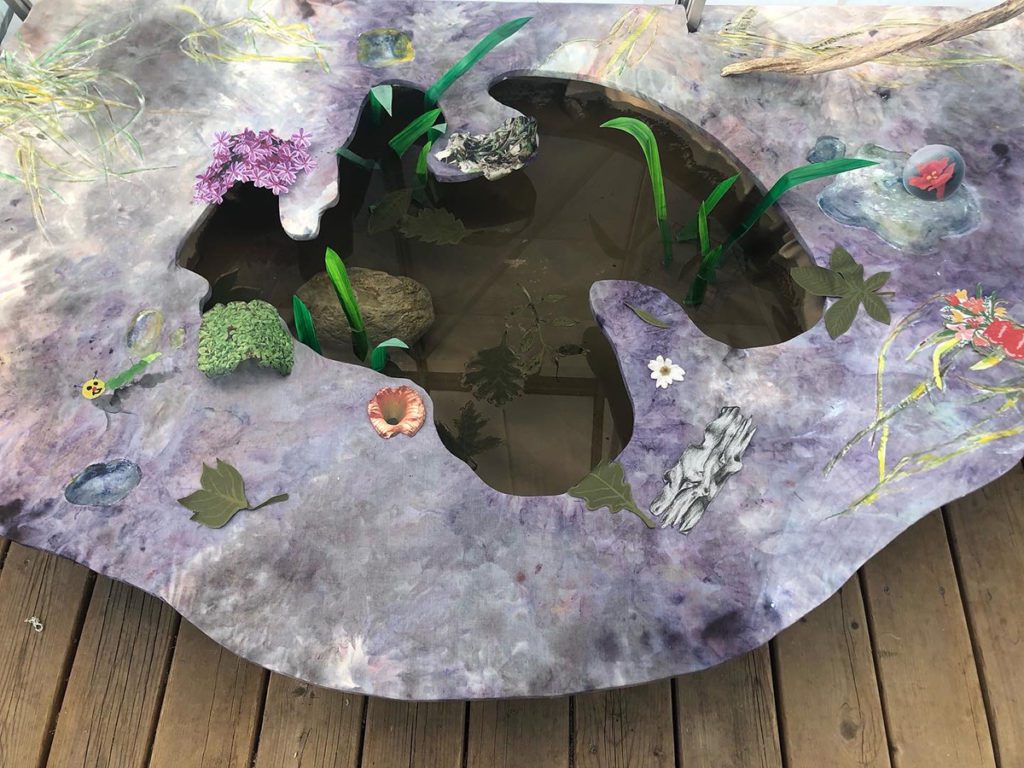
By Cason Sharpe
If the past two pandemic-burdened years have taught me anything, it’s that humans are very strange creatures. Without context, the way we behave—how we live, communicate and move through the world—sometimes makes very little sense. Take art, for example: what strange impulses, to make art, to share it with others, to build sacred halls for its display. These were the thoughts I was having as I ferried across Lake Ontario to the Toronto Islands this past February to visit Multi-Species Daydream: a garden in the depths of winter, a site-specific installation by SK Maston and Merle Harley.
Continue Reading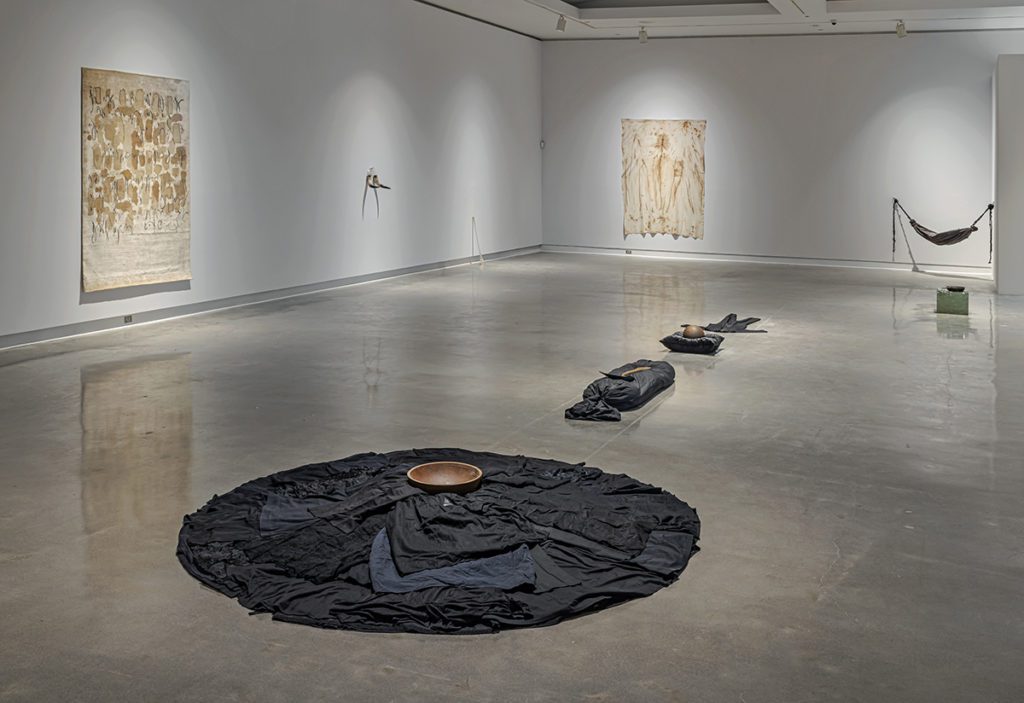
By Ricky Varghese
Keralites are a chronically melancholic sort of people. I should know; I am one. How could you not be when you hail from a 600-kilometre-long thin strip of tenuous horizon, where a violent blue sea, a lush, verdant land, and the hot pinkish-hued sky all meet—pushing against the very limits of our capacities for perception, experience and overall interestedness in matters of living and dying? I learned a little something about living and dying on that coast of the Arabian Sea when I used to spend childhood summers visiting family in Kerala. The mythological origins of the land are well-rehearsed, especially among scholars of Hindu philosophy and mysticism—the warrior sage Parasurama, the sixth avatar of Lord Vishnu, threw his axe across the sea and when he did so, the water began to recede as far as it reached. This strip of land, Parasurama Kshteram (Parasurama’s Land), borne of the anger of an old man directed at the sea, would come to be known as modern-day Kerala. A tale as old as anachronistic time itself, about an old man and the sea, one that even predates Hemingway’s melancholic novel.
Continue Reading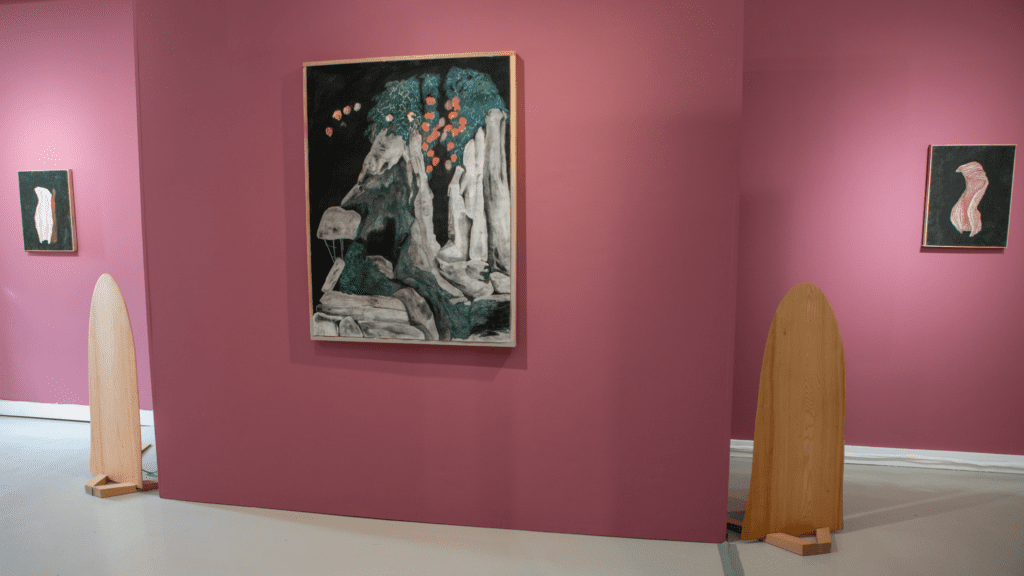
By sophia bartholomew
In their exhibition Ask the Mountains at the Campbell River Art Gallery, artists Sylvie Ringer and Jenni Schine have built up overlapping pools of sound and colour, carving new depths and dimensions into the gallery, literally changing its physical topography. On a sonic level, Schine’s varied soundscapes vibrate outwards from creature-like wooden ’radians,’ built by Italian composer Giorgio Magnanensi from curved, salvaged slabs of maple and cedar. The compositions spill into different parts of the space, interacting with Ringer’s large blocks of colour to create a strong sense of passage—constructing a sense of movement through distinctive and immersive zones.
Continue Reading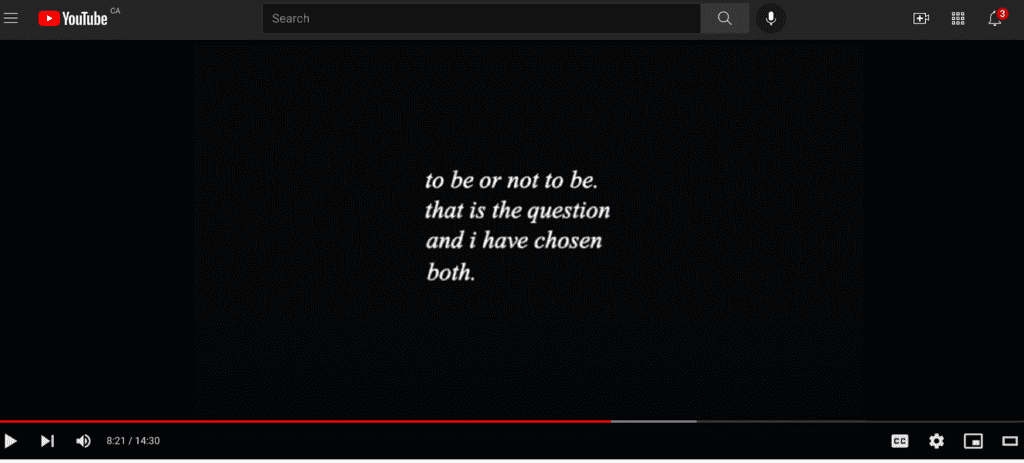
By Tyler Cunningham
On a Thursday night in October 2021, like many other weeknights, I sat down at my small desk, opened my laptop, and logged onto the blank canvas where most modern-day, creative endeavors originate: Google Docs. The blinking cursor beckoned me to press my fingers to my keyboard, but I resisted since I was waiting for the start of 805-4821, a play within Google Docs conceived by the Winnipeg-based theatre company We Quit Theatre. While the piece saw a live, in-person performance history prior to the pandemic, this iteration at the Toronto-based Buddies in Bad Times’s Queer, Far, Wherever You Are series was a part of the show’s run adapted for an online space. As if the lights were dimming in the theatre, the cursor began producing words that filled the Google Doc. The show had begun.
Continue Reading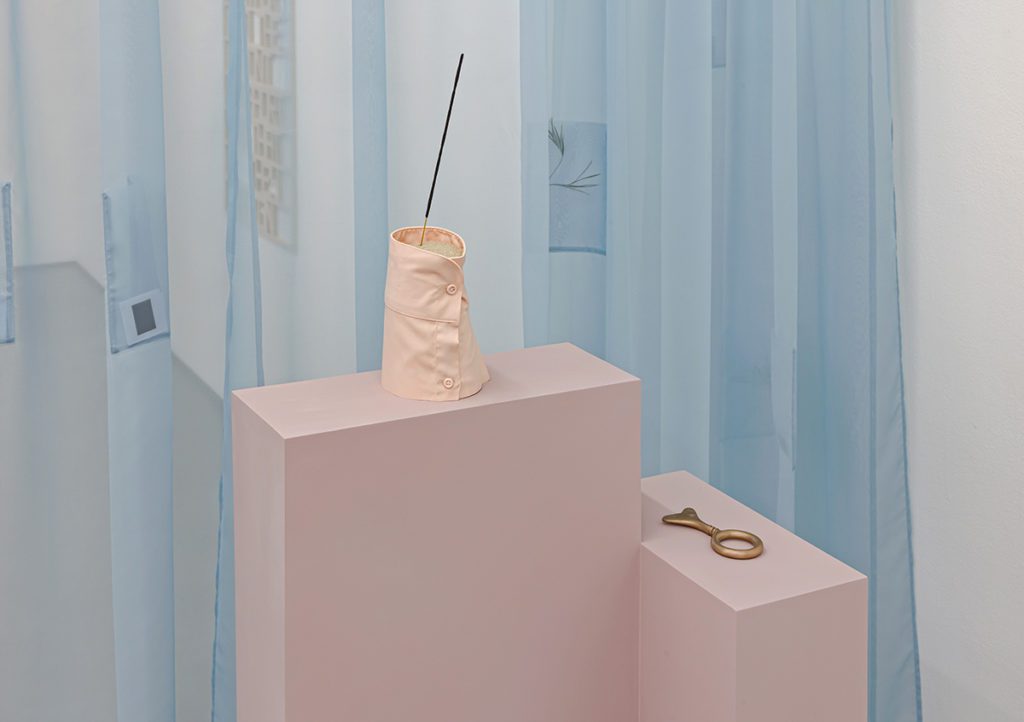
By Kim Neudorf
Positioned like an offering at the entrance to artist Liza Eurich’s exhibition, a paper cone holds a gathering of peonies. However, on a closer look, the paper cone is a shirt sleeve with a buttoned-up cuff cast in pale-peach resin. There’s a muted, soft quality to the combination of violet-pink, dark green and pale pink colours in this bouquet. Combined with the cast sleeve, the impression is understated (perhaps this is a bouquet for a formal gathering) but with a dryly funny tone, as the sculpture performs its straightforward bouquet-ness with a knowing wink to the audience.
Continue Reading
By Madeline Bogoch
There’s an obvious irony in the title of Gonzalo Reyes Rodríguez’s recent exhibition, New Photographs, which revolves around a pack of thirty-year-old photographs the artist acquired in Mexico City. Dated between 1987 and 1993, the photos depict a young, seemingly queer man who signed the backs with the enigmatic moniker, “Technoir.” The details of this opaque nickname are never revealed, and we are left to speculate on the meaning of this and other particulars through images of him amongst his friends, family, and lovers. What were initially intimate snapshots documenting a young man’s life have been reauthored by Rodríguez as cultural artifacts. The novelty alluded to in the title presumably refers to these shifting contexts, and the subsequent accumulation of meaning as the photos are subjected to the scrutiny of public viewership. Plastered in vinyl text alongside the photographs is an excerpt of an essay by author and curator Miwon Kwon, reflecting on the photo archive of the late artist Félix González-Torres. In this passage, Kwon remarks on the intimate familiarity we recognize in the images of others and how such images invite us, briefly, to inhabit them. New Photographs is designed to stage these very encounters, if only to underscore the failure of images to disclose the full picture.
Continue Reading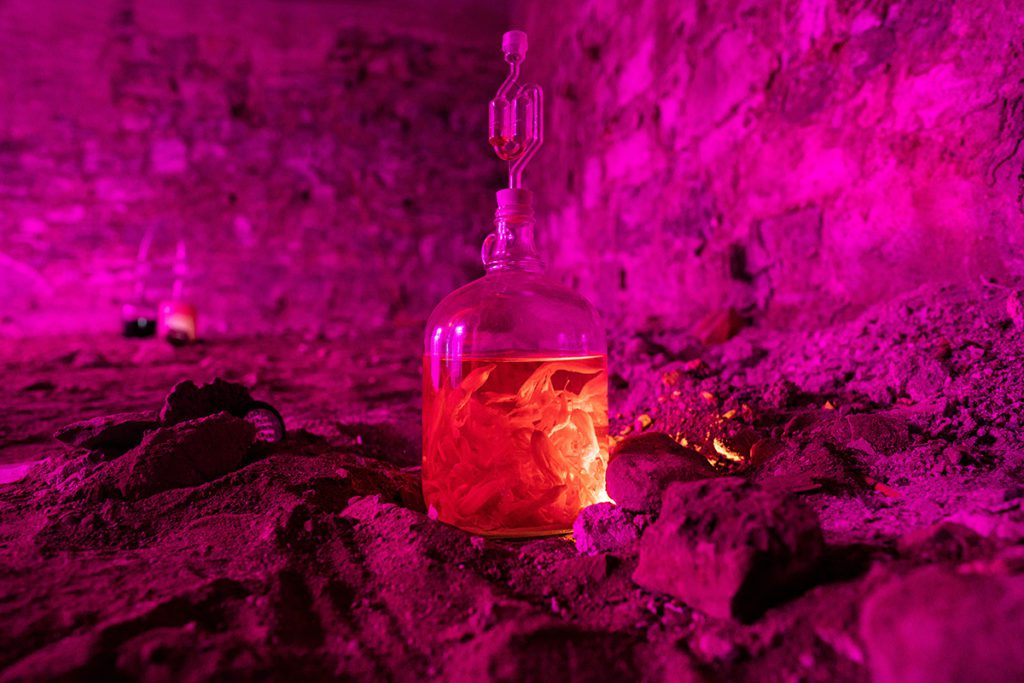
By Chris Hampton
I’d never noticed the building at 10 Tom Street in West Hamilton, a Sunday school tucked behind an old church, let alone considered there’d be any reason to explore its basement. Past the doors, the scent greeted me first: fresh and mineral, like the smell of earth after a rainfall (but on a return visit, it was sweet like rot). A curious purple glow leaked into the stairwell from the lower floor, intensifying with each step downwards. Then, off the landing, a large room opened, revealing an extraordinary subworld—a garden of sorts—living virtually in secret.
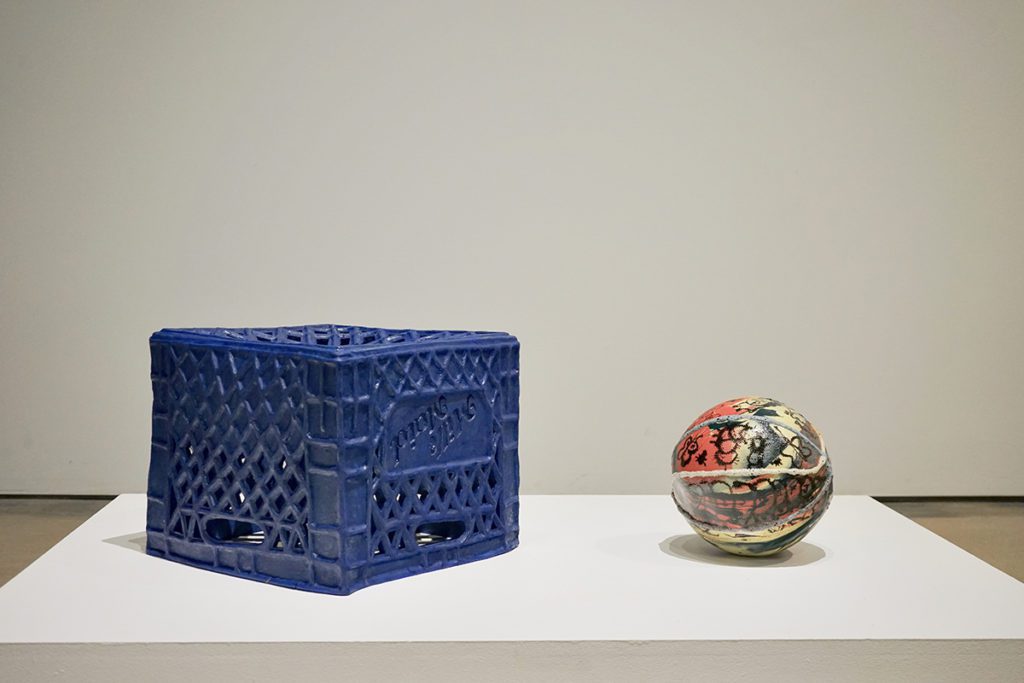
By Lauren Lavery
Yesterday afternoon my usual commute home was interrupted by a surprise flat on my bike’s rear tire. Along the route from the downtown office to my apartment, there are three sites of open excavation—one a literal pit, which is to be the future location of a new subway station near the local art university. At this particular spot, the usual protocol of a primary coloured, temporary rental fence has been swapped for a more permanent plywood installation, complete with pre-painted information and cut-outs to see what’s happening in the ever deepening, vast cavity bored into the earth below. As I peer through the holes in the plywood to inquire after the progress, the most alluring objects to catch my eye are the brightly coloured debris littering the edges of the worksite. Everything from cherry red Tim Horton’s coffee cups, to the iridescent wrappers of granola bars, to bright white styrofoam takeout containers riddle the area, and are tangled amongst discarded chunks of dried cement and other construction materials. My thoughts immediately jump to how the majority of our contemporary infrastructure is built on a bed of non-biodegradable garbage, eternally preserved for the future generations to discover—what a legacy to leave beneath the impressive glass monoliths erected across this city with extraordinary speed.
Continue Reading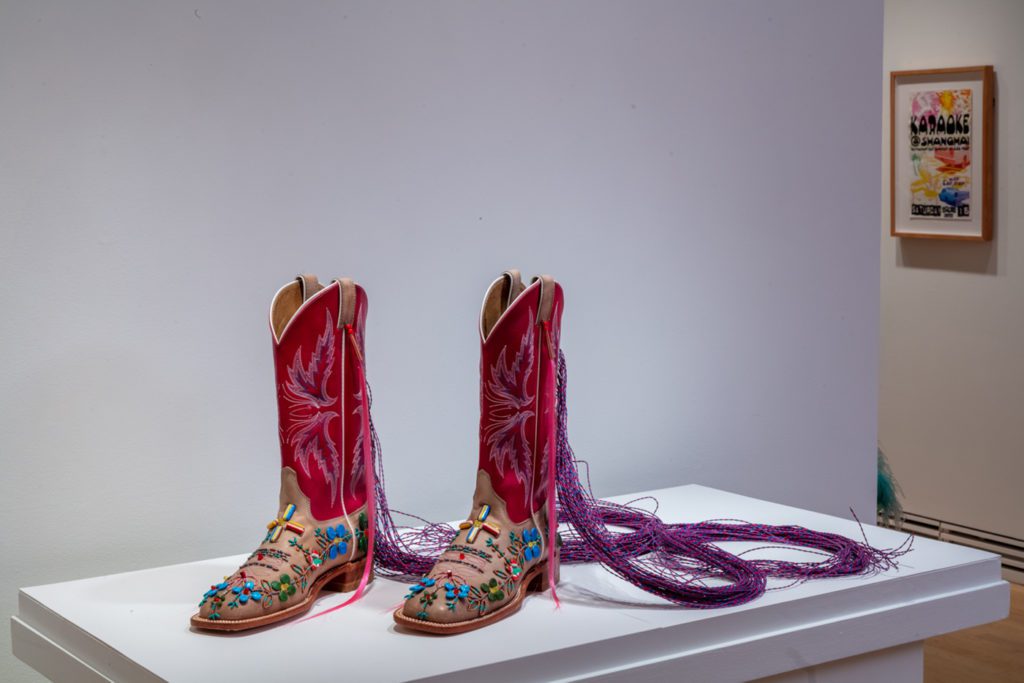
By Adam Barbu
With To Be Continued: Troubling the Queer Archive, a group exhibition presented at the Carleton University Art Gallery, curators Anna Shah Hoque and Cara Tierney argue that queer history as we know it is an incomplete, exclusionary concept in need of reinvention. Bringing together a group of thirteen artists and collectives, To Be Continued draws attention to the local trans and BIPOC voices that are repeatedly erased from museum surveys of queer artistic practice. Hoque and Tierney target forms of symbolic violence that underlie this erasure, critiquing dominant queer histories that are narrated from the perspective of the white, cisnormative, gay, metropolitan subject. In this diverse collection of works, including, for example, Ed Kwan aka China Doll’s installation of drag regalia, Aymara Alvarado Sanchez’s performative manifestation of the prophecy of the Eagle and the Condor and Pansee Atta’s sculptural exploration of a mythical gender-bending time traveller, the curators propose an alternative, more inclusive queer archive, one that problematizes what is known and knowable about identity and community across the historical continuum.
Continue Reading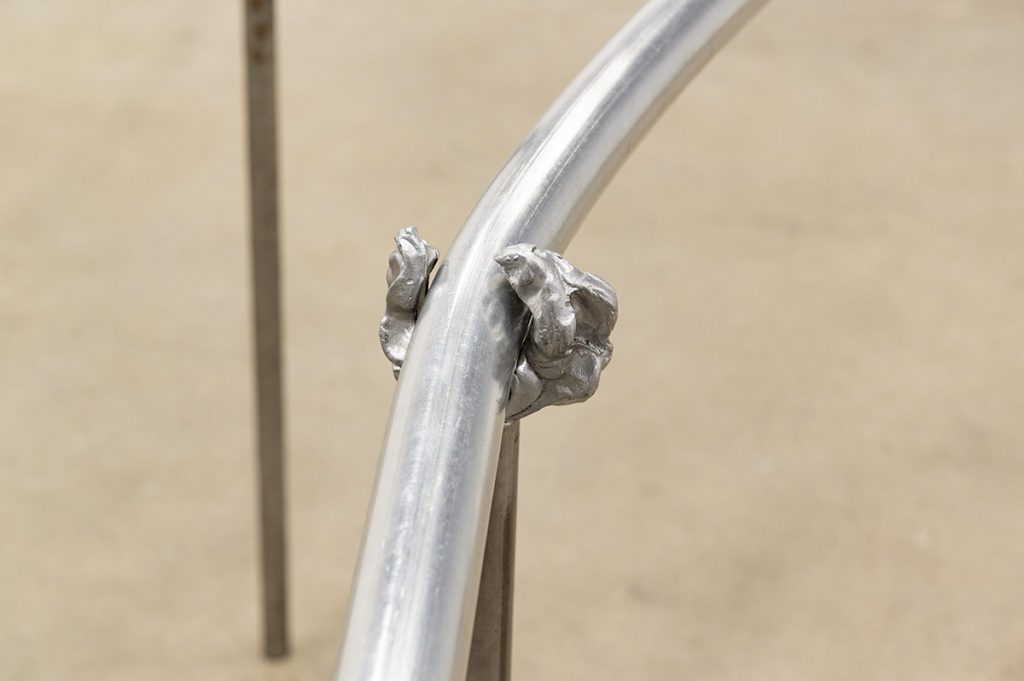
By Elora Crawford
If a sculpture garden was the “original” group show, which could be said, the central conceit in You Sit in a Garden brings the exhibition back to its roots. In the 1990s archeologists found broken stalagmites arranged just so in the Bruniquel Cave in France. The crystalline structures were set down in rings, for a purpose as yet unknown, though the resultant composition is compelling. It seems to satisfy the gestalt principle of good form named for the quality of visual arrangement our brains perceive as balanced and pleasing. The site dates back 175,000 years and predates any found cave painting, thus, conceivably, it could be the first sculpture garden, or the first ever group show. Similarly, the way the sculpture “garden” exhibition at Centre Clark in Tiohtià:ke/Montréal is installed seems to wink in recognition of this history. The group show as a garden is evidently a useful metaphor, it remains consistent across time.
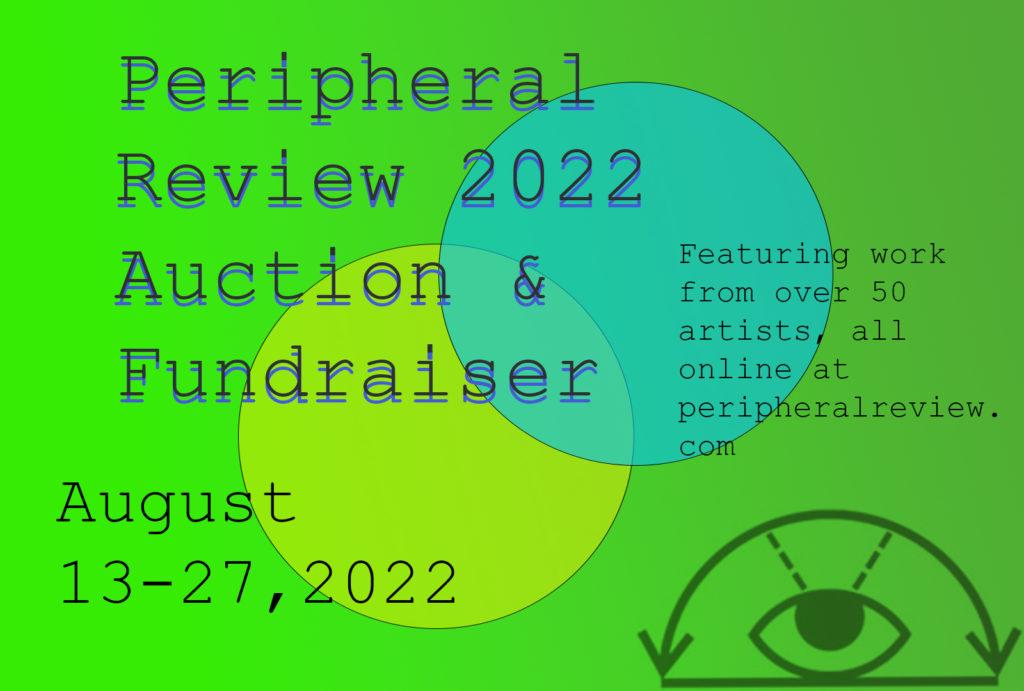
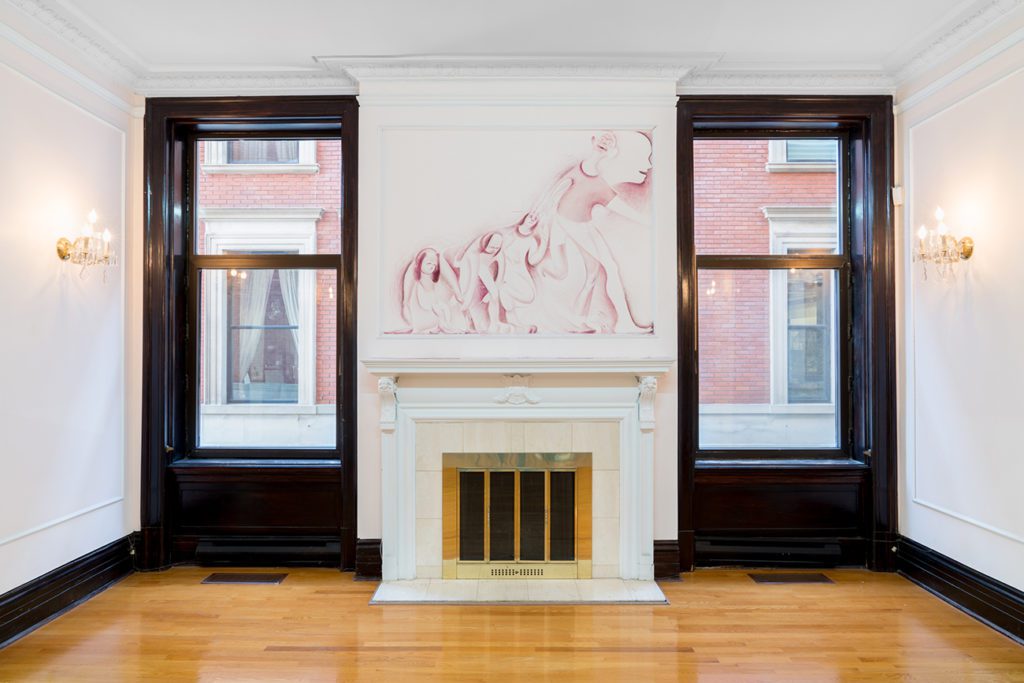
By Kate Kolberg
You’re sitting, reading in a cafe. Your brain announces to itself: “I’m a reader,” as if somehow that makes you virtuous. In theory, the book’s subject is interesting, but if you’re honest with yourself, you’re struggling to get through a single page, let alone internalize the information being presented to you. Instead, apprehension floods your brain: Am I comfortable or too caffeinated? Do people think I look smart? Maybe I seem mysterious or, maybe, just pretentious. Wait, do I even like reading? This dizzying relationship the self can have to the self—often seemingly innocuous yet fundamentally fraught—was the subject of much of Montreal-based painter Alexa Hawksworth’s work in her recent exhibition Semi-Detached New Build at Projet Pangée. Through an ad-hoc assembly of caricatures and scenes, Hawksworth’s paintings explore the relationship we have with ourselves: the non-negotiable correspondence that is ever-vulnerable to context, doubt, timing, and, perhaps most importantly, our perception of how we are being understood by others.
Continue Reading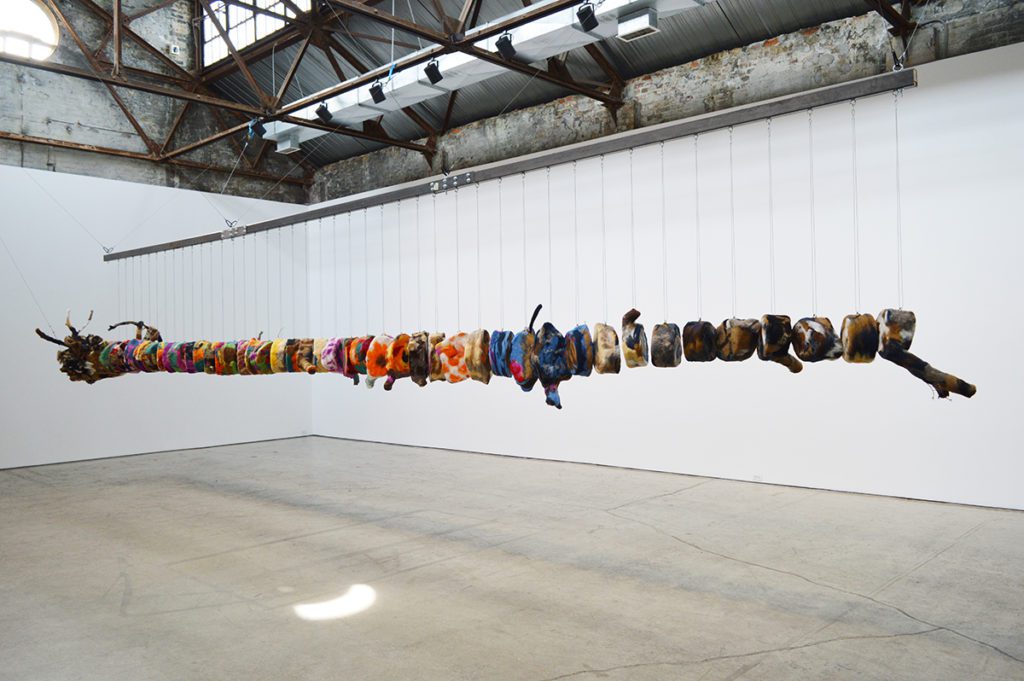
By William Brereton
After a few deep breaths, I took many strolls among the mysterious yet beautiful installation works of Reitzenstein (the artist formerly known as Reinhard Reitzenstein) in FML (forests may lie) at Olga Korper Gallery in Toronto. The exhibition showcased a survey of the artist’s latest sculptural and photographic works that have signified his long-standing investigations into the environment and environmental degradation. For those who may have sought a critical yet playful experience in nature, Reitzenstein’s latest presentation seamlessly offered interpretive and high-spirited vantage points from which to experience the works, as many of us tried to find reprieve during the early months of the global pandemic. As some museums and galleries in Ontario briefly reopened in Fall 2020, this exhibition affirmed the need to experience art in person and perhaps encouraged us to go on an introspective journey. With a direct focus on our geographic surroundings, the exhibition especially paid homage to the artist’s direct engagement with trees native to, and the communities that reside within, the Golden Horseshoe region of Southern Ontario.
Continue Reading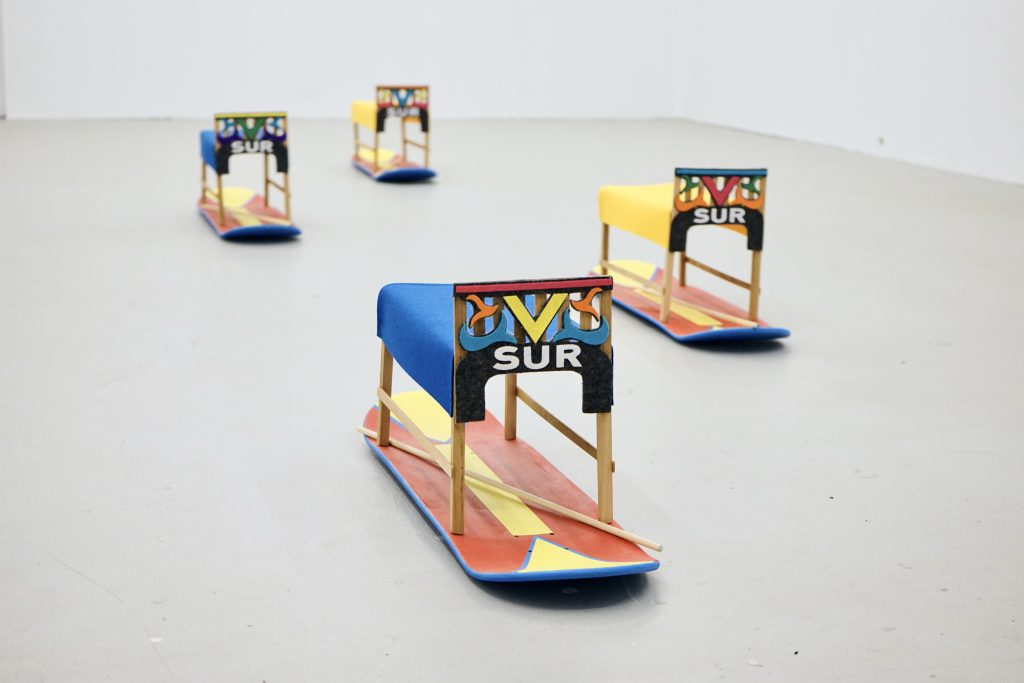
By Angie Rico
In the Southeast borough of Xochimilco, Mexico, is an oasis of yore, solidified in popular tradition for city dwellers and tourists alike to visit the remaining lacustrine zones trapped among the sweltering chaos of Mexico City. The silent and robust trajineras are the transportation of choice for these terrains that offer one of the only remaining glimpses into Mexico City’s pre-Columbian era. Lined up in rows, these flat-bottomed boats float on the tranquil surface of the water, displaying adornments of papier-mâché and a name written in large letters on their front arches. They wait to be boarded by families, groups of friends, lovers, or mismatched strangers; music emanates from passing vessels as they ferry sightseers across the canals that are hundreds of years old. At one time, trajineras were the primary navigation tools that facilitated agricultural production, transportation, and political development for Indigenous civilizations in the basin of Mexico, with its extensive network of waterways. Colonization, along with modernization projects of the early 20th century, shrunk the waterways down to a system of canals and trajineras were re-adapted to entertain tourists and align with the modern rhetoric of the city.1 The appearance of trajineras in the popular imaginary is a result of this process.
Continue Reading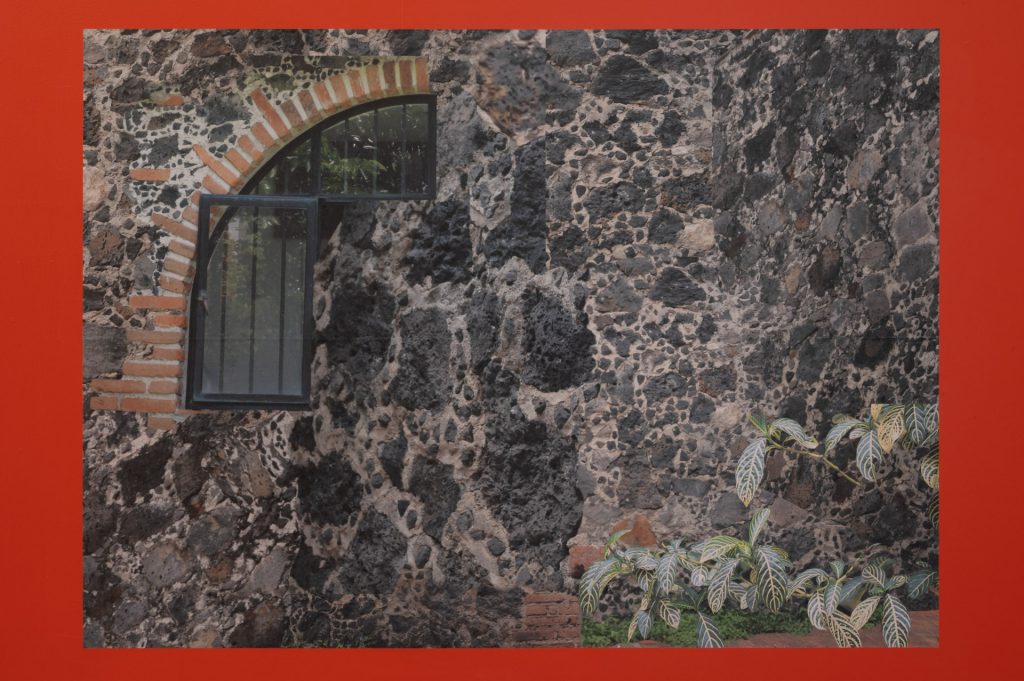
By Francesca Carella Arfinengo
On a Saturday afternoon in late March of 2021, I get on my bike and head to Blinkers, a DIY project space in the downtown Exchange District of Winnipeg. It is early spring and there is an icy chill on my ears from the wind. It’s my first bike ride of the season, and as I move through the city on two wheels familiar things are seen anew. Dormant muscles are activated; I notice the spring smell of the river, the shadows from bare trees on the path. Two friends and I have booked an appointment to see Mariana Muñoz Gomez’s first solo exhibition, A volar entre rocas (To fly between stones). We are taking advantage of recently eased COVID-19 restrictions, making this visit feel extra special.
Continue Reading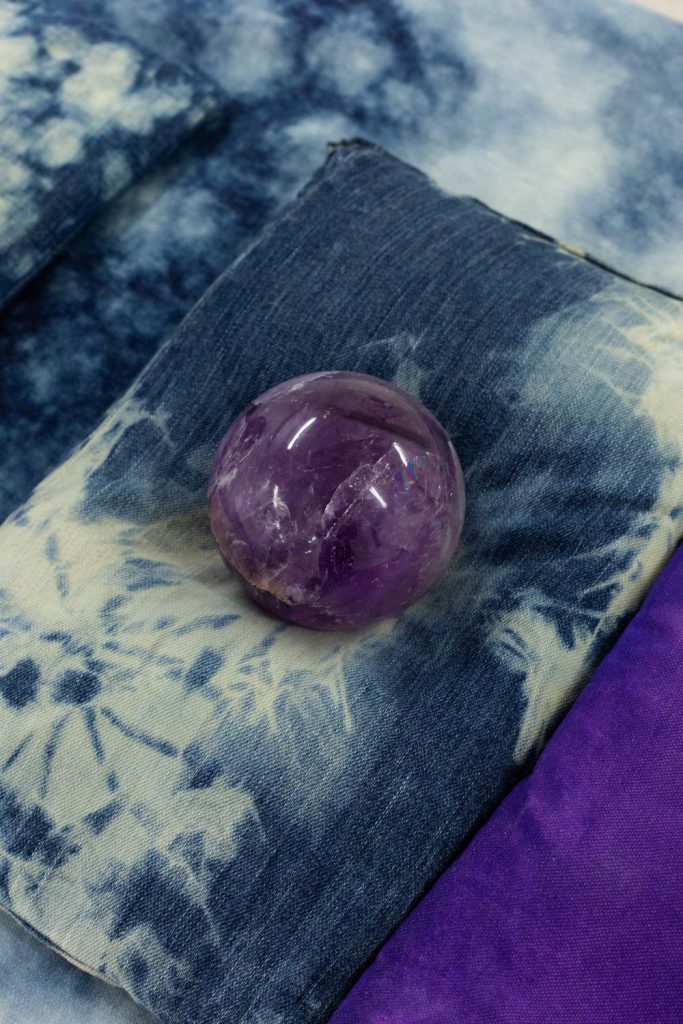
By Dana Snow
The Moon is the eighteenth card in the traditional Rider-Waite Tarot deck. When the Moon reveals itself in a reading, it signifies that a time of reflection, intuitive dreaming and evolution lie ahead. The moon whispers softly to us and guides us to the gates of the unknown, insisting on a balance of light and darkness. Moonshow, curated by Tkaronto-based collective Hearth, and exhibited at the plumb in the city’s midtown, lapped at the viewer’s consciousness like the moon pulls the tide: reflection, cyclical repetition and vibration act as guiding forces through the serpentine project space. The exhibition was on view from January 9th until February 7th, 2021, a time that could only be described as desperate in terms of Tkaronto’s COVID-19 crisis. This show underscored the importance of embracing darkness in dark times, offering a respite to the ever-climbing numbers in the crowded city with saccharine appeals of “hope” that other contemporary exhibitions did not.
Continue Reading
By Alex Gregory
The romantic urban dream of starting a commune, or quaintly living in cottage country, differs greatly from the reality of maintaining a prosperous farm. Such urban perceptions of rural living can seem out of touch, as country life comes with a responsibility to the land and to maintaining community values. This reinforces gendered expectations because, even with modern machinery, the success and economic prosperity of farming, forestry, mining, etc., requires immense physical labour that is stereotypically associated with cis-gender men. Additionally, rural activities such as fishing, hunting or dirt biking require grit, and facilitate a type of camaraderie that is associated with “bro-culture.”
Continue Reading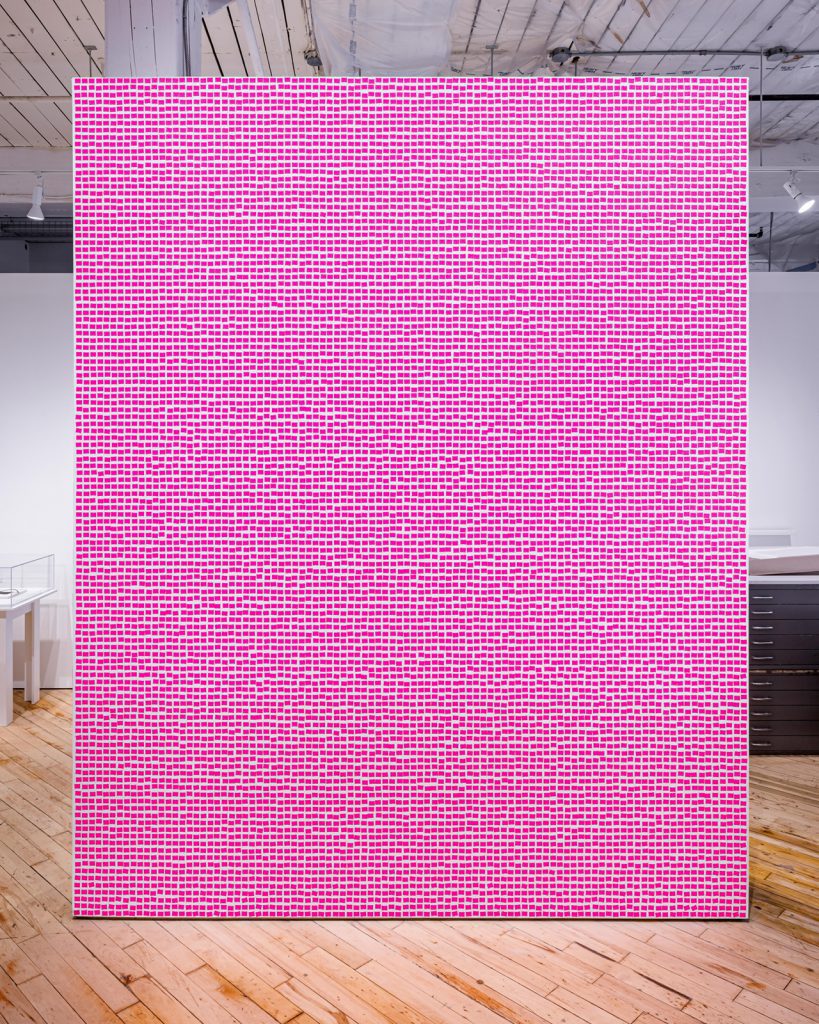
Sunday March 20, 2022, 1pm EST. Three individuals (Sean Weisgerber, the artist; Daniel Griffin Hunt, curator of The Size of a Credit Card at the plumb; and Rebecca Travis, Curator and Collections Manager at Open Studio) meet at Open Studio in downtown Toronto to look at and discuss Weisgerber’s solo exhibition at the gallery’s Feature Wall, aptly titled Wall Drawing #1. The trio sit around the work in folding chairs, one with a large book on his lap…
Continue Reading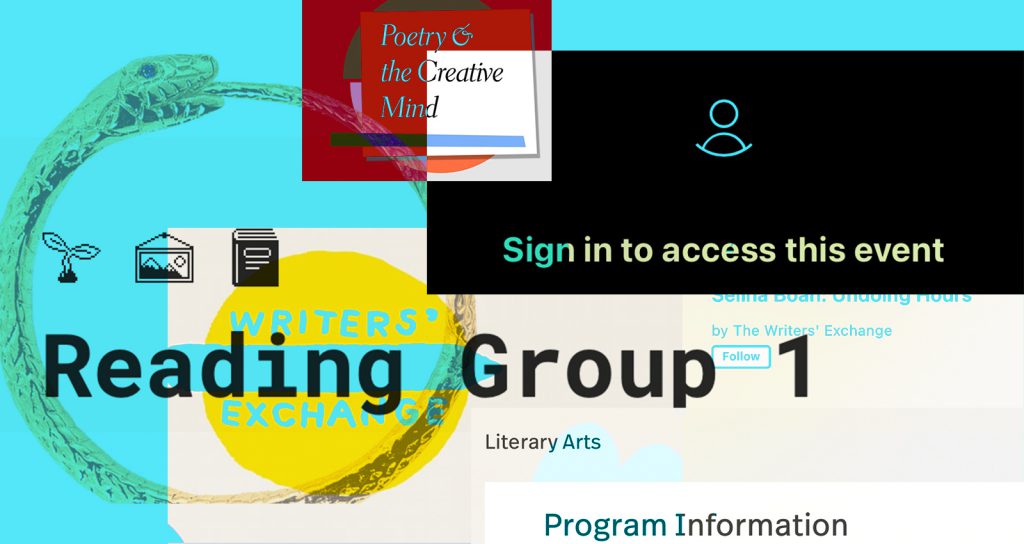
By Ella Adkins
Between January and March of 2021, my Monday to Friday ritual went a little bit like this:
I’m sitting on Zoom, and a grid of familiar strangers looks back at me. I see myself in the top left corner next to my professor. My hair is slightly unkempt after my daily pilates workout, and I hadn’t cared to look in the mirror—a regular occurrence these days. After some awkward virtual small talk (“How’s the weather in California, Andrew?” and “How is everyone coping?”), the professor clears his throat to begin class. He begins with a reading of the Archibald Lampman poem “Heat:”
“Beyond me in the fields of sun
Soaks in the grass and hath his will;
I count the marguerites one by one;
Even the buttercups are still.”
I walk over to the stove to stir my oatmeal, carrying my professor’s voice to the kitchen through Airpods.
Continue Reading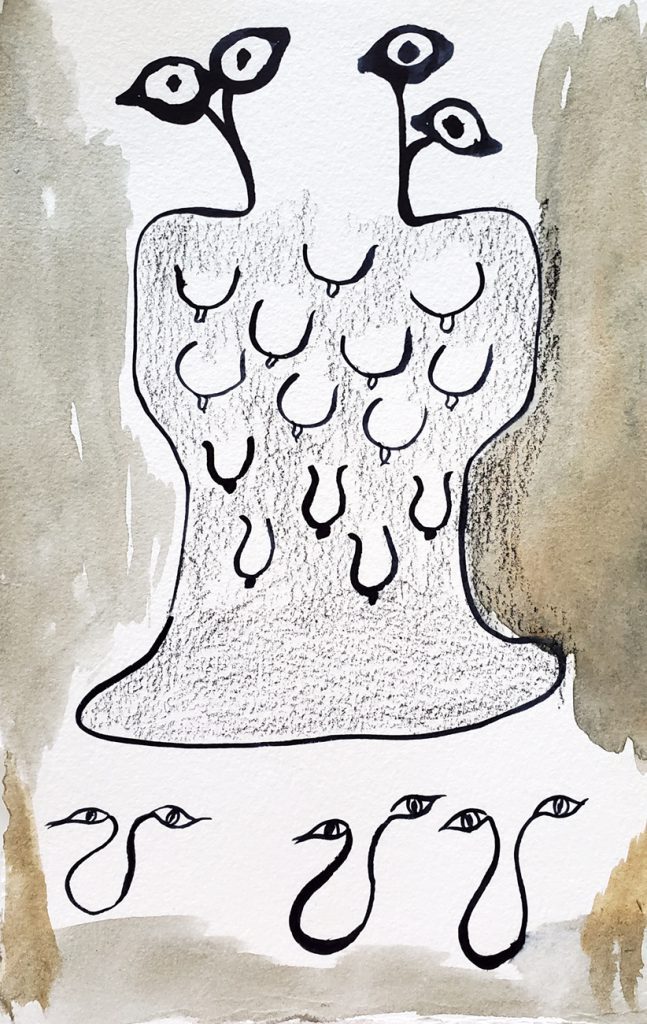
In She Can Cook a Potato in Her Hand and Make it Taste Like Chocolate, an artistic research and exhibition project led by Jasmine Reimer, she investigates Neolithic goddess mythology and symbols with twelve artists, researchers and academics, including Toronto-based artist Amanda Boulos. Interviews related to the project took place over Zoom and subsequent email correspondence due to strict COVID-19 lockdowns, when stories were told only through screens. In this conversation, Boulos and Reimer speak about their practices in relation to the visual language and body of “the Goddess.”
Boulos discusses her latest series, Mother’s Storage (2020), dedicated to her Mother as the storyteller of the family and to the nurturing nature of their relationship. She tells us how the abstract imagery emerges from familial narratives, body language and excessive smothering. She deeply admires and relates to Reimer’s goddess drawings from the recent series, The Great Round (2020-2021), asking about her inspirations for the towering charcoal works. Reimer’s The Great Round explores how “the Goddess” and her various manifestations as rocks, bodies of water, trees and plants helped Neolithic communities connect to non-anthropocentric lifecycles. In her drawings, Reimer adds to the mythology via gender-fluid hybrid forms.
Continue Reading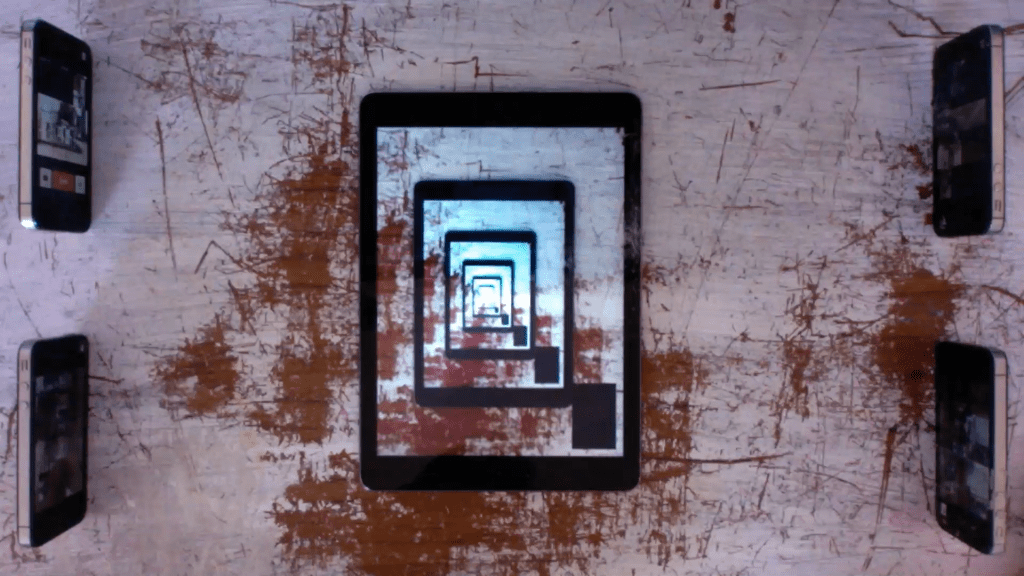
By Madeline Bogoch
Last year at Platform Centre in Winnipeg, during a slyly theatrical lecture-performance by emerging media artist Colby Richardson, the tall and affable filmmaker quoted fellow Winnipeg artist Mike Maryniuk: “I work with the latest technology to hit the local thrift stores.” This sentiment is an ethos that echoes through Richardson’s interdisciplinary practice, which habitually resurrects media detritus by placing it into bold new arrangements, in order to revel in the afterlife of obsolete equipment. As significant a role as these technologies have played in Richardson’s practice, I took his framing of Maryniuk’s quote to imply that his was not an aesthetics of nostalgia, but rather of access and experimentation.
Continue Reading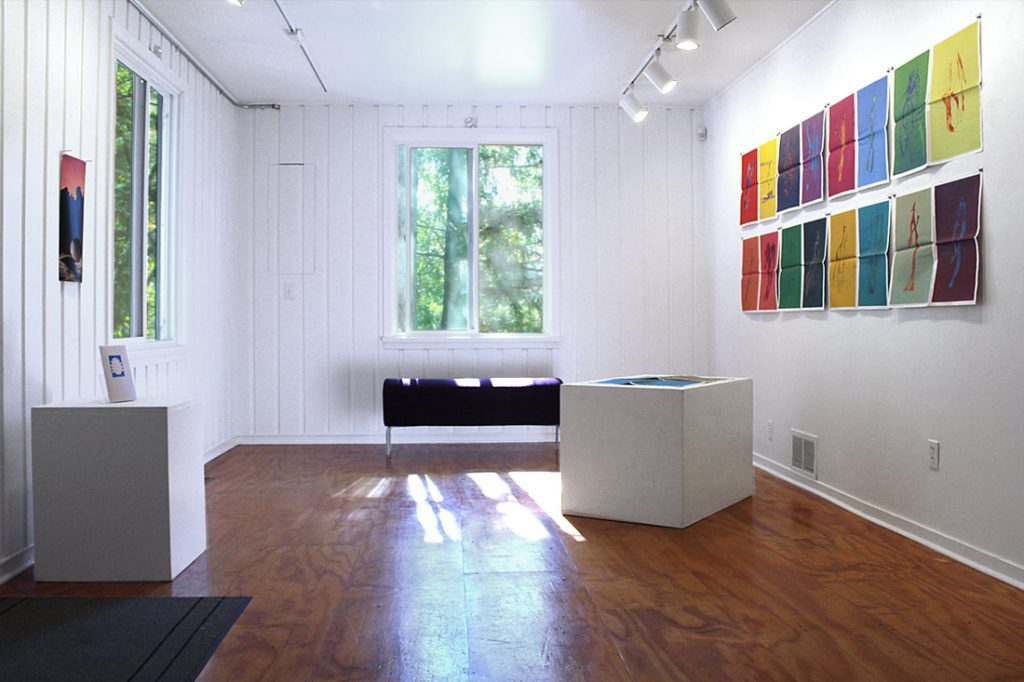
By Courtney Miller
On a wet and windy afternoon, I followed the road wrapping the southeast shoreline of Harrison Lake in Harrison Hot Springs, BC, to reach the Ranger Station Gallery. Situated on unceded Sts’ailes territory, in a touristy village 131 kilometres east of Vancouver, the gallery is on the periphery of the West Coast art scene. The combined exhibition and artist residency space is perched just above the lake, where you can see wobbling boats and the strip of shorefront businesses through the windows.
Continue Reading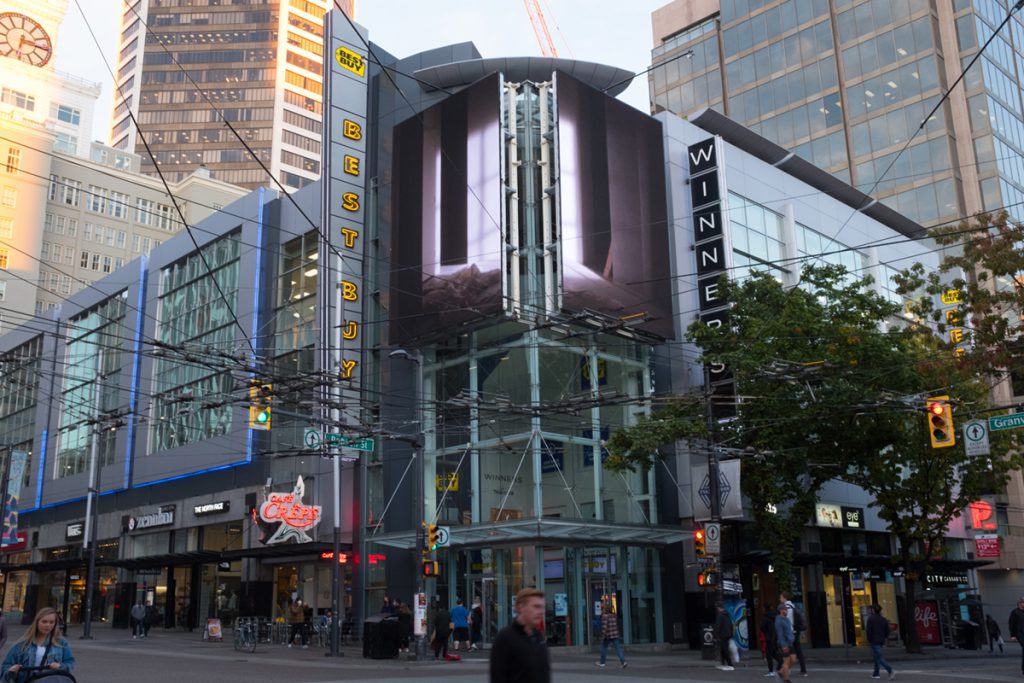
By Stephanie Wu
Amidst the busy network of overhead trolleybus wires, two massive LED screens are situated on one of the many glass-lined commercial buildings that define the landscape of Downtown Vancouver. With a height spanning two floors, the screens emit their bright light towards the ground for hundreds of pedestrians at Robson and Granville Streets, reflecting and illuminating the area’s commercial activity. Hosted by the City of Vancouver’s public art program, Platforms 2020: Public Works, these VanLive! Screens show Vancouver-based emerging artist Rina Lyshaug’s work, Narratives from the Emptiest Place (2019).
Continue ReadingBy Kalina Nedelcheva
To Move;
Unspeakable truths—
I’m drowning,
Searching for a mediation between
Beauty and the grotesque
But they are absent,
Unknown;
Broken.
Are these abject apologies
That ring in my ears…
Belonging to those who struggle?
It is impossible
To follow these narratives;
One relies on destruction,
To create meaning…
The Drowned;
To Struggle;
Capture my soul,
Twisted in thoughts of a present singularity…
What is right and what is wrong—
I am told these are universal truths,
Like bird songs in winter;
To me, they are
Lost in translation.
Truths or
Is it my comfort,
Weighted down by all that is known?
For the cruel and insidious,
These spectacles of chaos…
Resonating loudly,
Is to captivate;
The Saved—
To Live;
It is negation;
That is a sovereign to my being.
It exists in the crevices:
Of reality.
Reverberations of hope—
Escaping my ego which is
Dead.
Lies
That stops the heart;
Venerated spectres—
The holy and benevolent that transition
To the depths of the psyche;
Like a cacophony of crumbling realities…
A distraction wasted on
The human and nature;
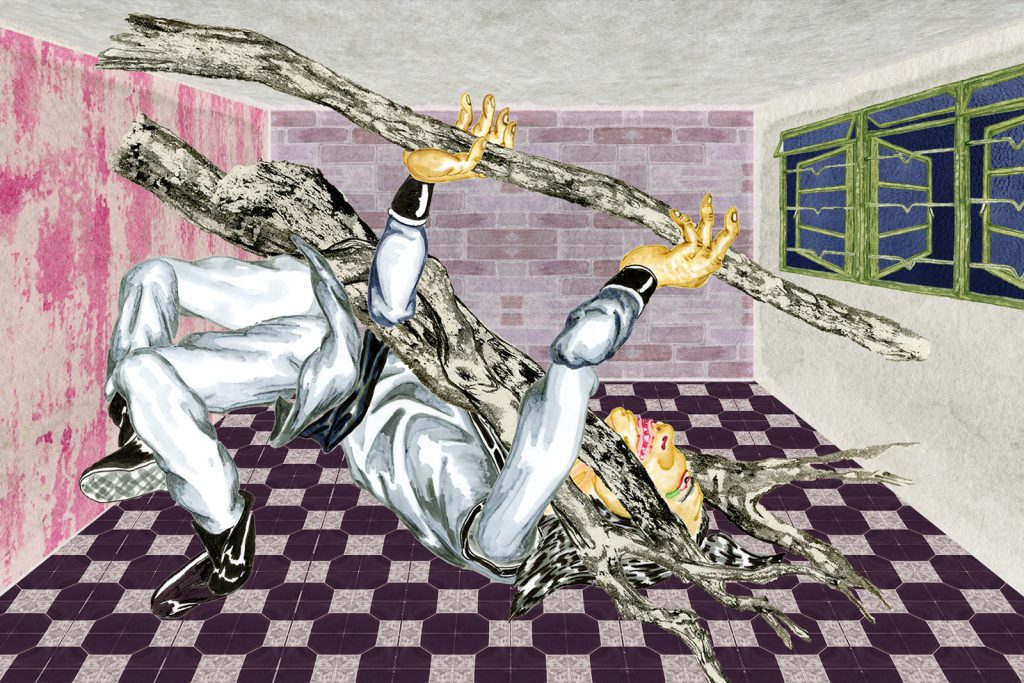
By Jacqueline Kok
Democracy is said to be under threat in various countries across the world, such as the United States, Brazil and Venezuela. Political leaders like Trump, Bolsonaro and Maduro have been heavily scrutinized for their divisive policies that have caused political unrest. In Hong Kong, the people face a similar situation: protesters routinely occupy the streets, brawling with riot police. They fight against the Chinese Communist Party (CCP) and the enforcement of laws and security measures that go against liberal democracy. To outsiders unaware of the turmoil, Hong Kong is unruly and violent. To insiders, Hong Kong is in a “state of exception,” sitting at “a threshold of indeterminacy between democracy and absolutism,”1 where, on the latter end, the CCP holds central authority. Laws become slip- pery when acts of violence that are normally condemned, like police brutality, are passed by the current Pro-Beijing government. In these kinds of fragile moments, where past governing systems could rapidly shatter at the hands of a current ruling government, one can’t help but begin to wonder: would anarchy, even with its implications, provide possible solutions to a jeopardized democracy?
Continue Reading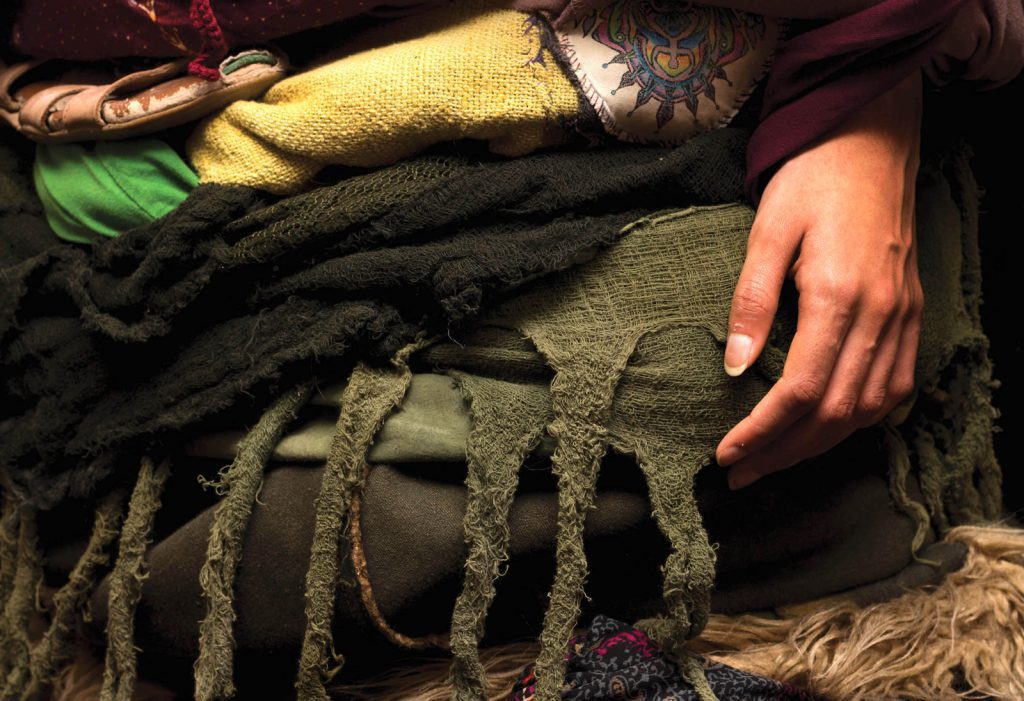
By Tyler Muzzin
The photographs in Libby Oliver’s series Soft Shells engender the same paradoxical nature that the title implies: they are portraits that conceal the subject, while revealing more about the subject’s individuality than most portrait photography could ever hope to achieve. Exhibited at Gallery Stratford, on the edge of the Shakespeare Festival grounds and a short walk from one of the most celebrated costume departments in Canadian theatre, it’s only fitting to quote Jaques’ well-worn prologue to Act II of As You Like It as an epigraph:
“All the world’s a stage, / And all the men and women merely players;”
Continue Reading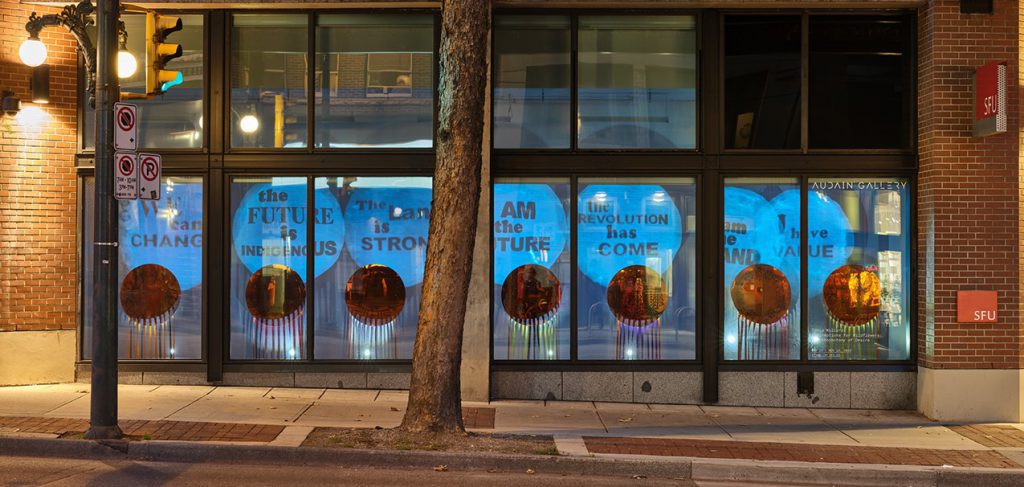
By Andrea Valentine-Lewis
WE can CHANGE
the FUTURE is INDIGENOUS
the Land is STRONG
I AM the FUTURE
the REVOLUTION has COME
I am the LAND
I have VALUE
Tania Willard’s Affirmations for Wildflowers: An Ethnobotany of Desire, ran from September 14th to November 13th, 2020, within the street-facing windows of the SFU Audain Gallery. The seven statements including “the Land is STRONG” and “I have VALUE” were projected as glowing declarations onto a wall running the length of the windows. Each declaration, or “affirmation” as the exhibition’s title suggests, was accompanied by suspended copper-coloured reflective disks, the surface of which were etched with black wildflower silhouettes. At the bottom of each disk, a trim of pink, orange, yellow, and brown silk ribbons embellished the composition.
Continue Reading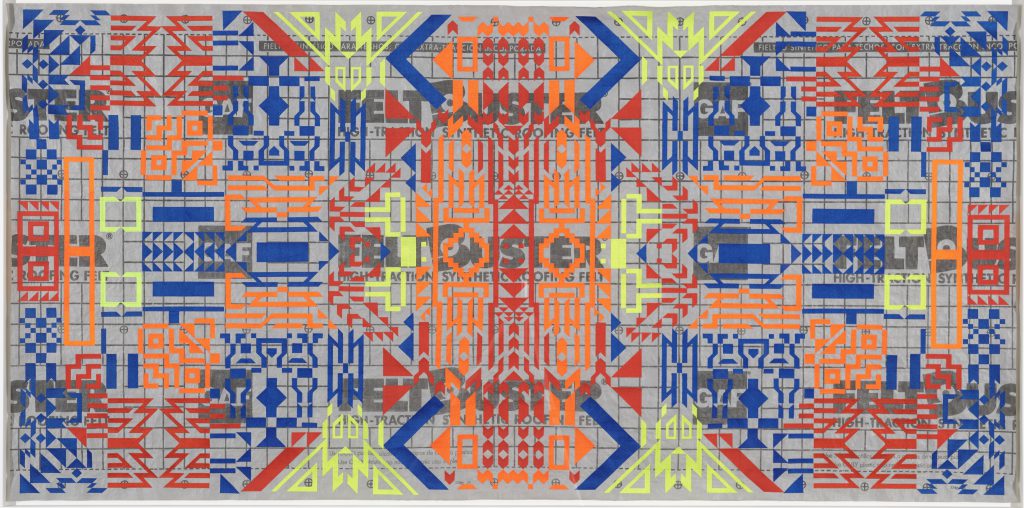
By Didier Morelli
In her first solo museum exhibition in Canada, presented by the Montreal Museum of Fine Arts (MMFA), Caroline Monnet chose eighteen recent works for Ninga Mìnèh, many of which had never previously been shown. Following her rise to prominence in the local (2020 Pierre-Ayot Award), national (2020 Sobey Art Award), and international (2019 Whitney Art Biennial) art scenes, the interdisciplinary artist of Algonquin and French ancestry made her much anticipated full-scale entry into one of Montreal’s most heralded cultural institutions. Ninga Mìnèh focuses on the architecture of Indigenous communities in Canada, specifically the cheaply and hastily built reservation housing that further entrenches First Nations peoples into economic and social precarity.1 Conceptually striking and spatially inviting, the exhibition draws on postmodern codes and mediums with a politically and socially incisive subtext, thus interpreting new conceptual horizons for the artist’s practice.
Continue Reading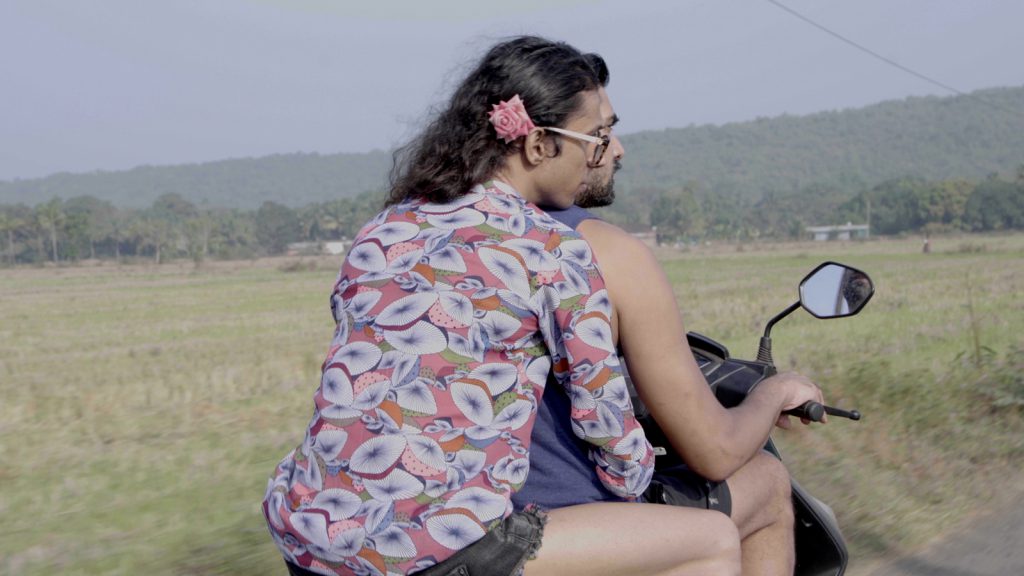
Vishal Jugdeo interviewed by Paul Kajander
Does Your House Have Lions (2021) is a 49 minute film by Delhi-based poet vqueeram and Los Angeles-based artist Vishal Jugdeo. Shot like cinéma-vérité, the piece moves around friends and lovers vqueeram lives with. It documents Delhi, Bombay and Goa, during the time-period of January 2016 to September 2020, and speaks to an intensified political atmosphere in India. This film is just one iteration of an ongoing collaborative process between vqueeram and Jugdeo.
For several months, I’ve had the pleasure of thinking with this complex and profoundly beautiful new work, which prompted much correspondence about Vishal & vqueeram’s working methodology and the many details surrounding the lived experience of producing such an encompassing project. Through his spirited responses, Vishal shared a wealth of contextual information that will offer an enriched experience of this vital document, which shines a brave and loving light on a house of luminous relations, burning brightly against the encroaching darkness of diminishing democratic freedoms in India.
Continue Reading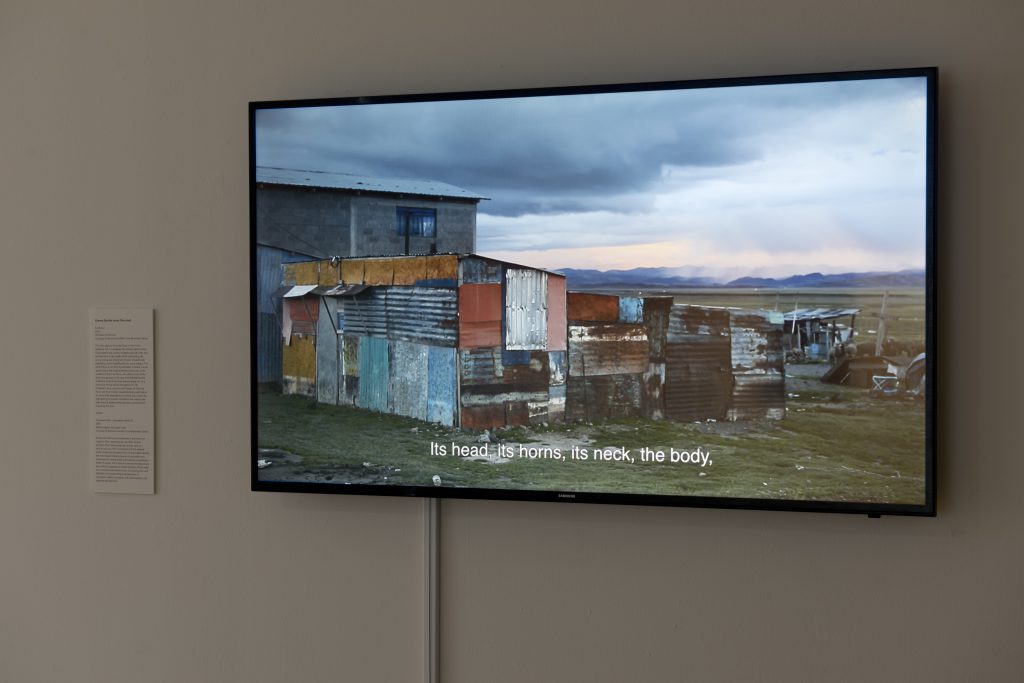
By Juilee Raje
While a second provincial lockdown was looming around the corner last winter, my mother and I managed to squeeze in one last visit to the Art Gallery of Guelph. The thrill of getting to see a few exhibitions in person (rather than the tiresome ordeal of clicking through virtual shows online) was much needed. We were restless to get out of the house, the days melting together more insistently than ever. Though I revisited the gallery a few times after, and with different people, this exhibition still sticks prominently in my mind as “the one where we tried to experience an olfactory installation while wearing masks.”
Continue Reading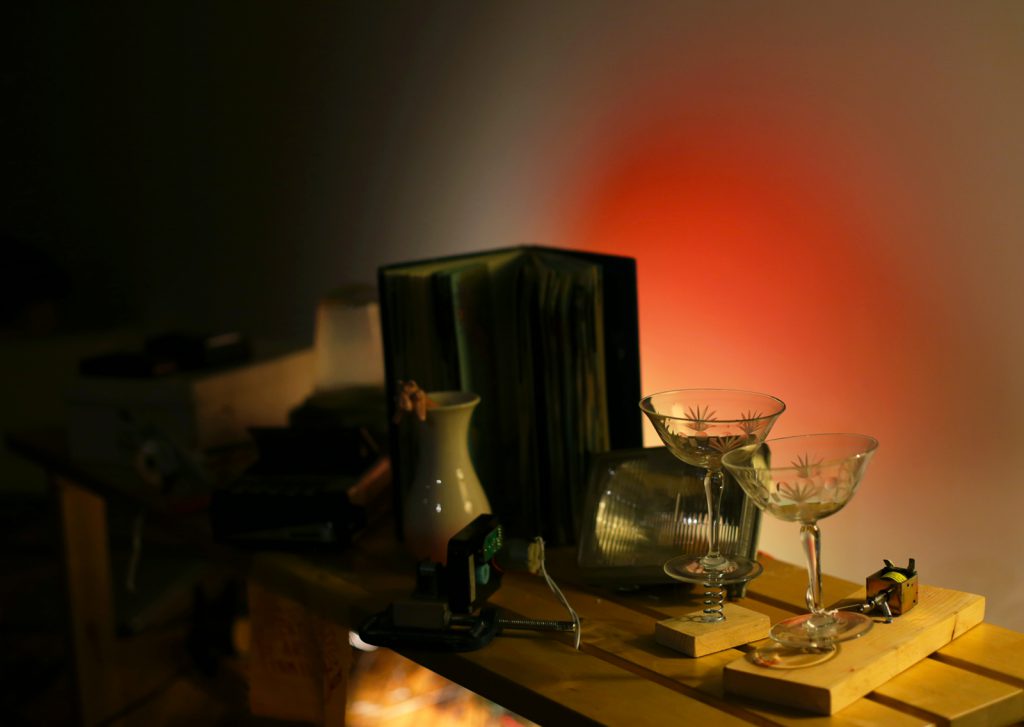
By Noor Alé
Migrancy, and its generative potential to create a series of movements, is an enduring interest of Lorena Salomé—a Toronto-based Argentinian artist—whose practice employs technology to activate commonplace objects and dismantled electronics to create kinetic works. In Salomé’s exhibition, The Objects We Carry1 at Trinity Square Video, co-presented with Public Visualization Lab in Toronto, she examined issues relating to global migration, gentrification, and eviction through an installation that invited community participation, as well as a series of collaborations with artists whose practices are engaged with travel.
Continue Reading
By Alexandra Box
“Man’s greatness is always to recreate his life, to recreate what is given to him, to fashion that very thing which he undergoes. Through work he produces his own natural existence. Through science he recreates the universe by means of symbols. Through art he recreates the alliance between his body and his soul.”
– Simone Weil, The Mysticism of Work, Gravity and Grace (1947)
Late-capitalist mediascapes require the attention of the broader visual world that existed before workers encountered an economic and hygienic reordering due to mass death and unemployment, such as the affordance to some for working remotely. This social and biological decline is making it difficult—at most times, unsafe—to show up in traditional ways for provocation, or a mundane office job. Labour can only benefit from collective reflection, particularly on culture (abstraction, ornament, material, narrative) coming out of charged social and material conditions. Artist Michael Lachman grips onto the strength of fiction and satire as sculptural strategies in his solo exhibition, Let Me Introduce Myself, at CSA Space in Vancouver. Lachman transforms the gallery into a dreamlike office space riddled with stylized artifacts, producing a comedic story told by objects. Technical changes to the gallery space, such as dropping the ceiling height and lining the floor with blue modular carpet, reduced the standing posture for viewers and added to the satirical landscape of “the office.” The exhibition encapsulates the methodical rituals of the nine-to-five workday using comedy, as Lachman steers gallery visitors towards cultural mores, overdetermined ideas of professionalism, and the absurdities of manhood.
Continue Reading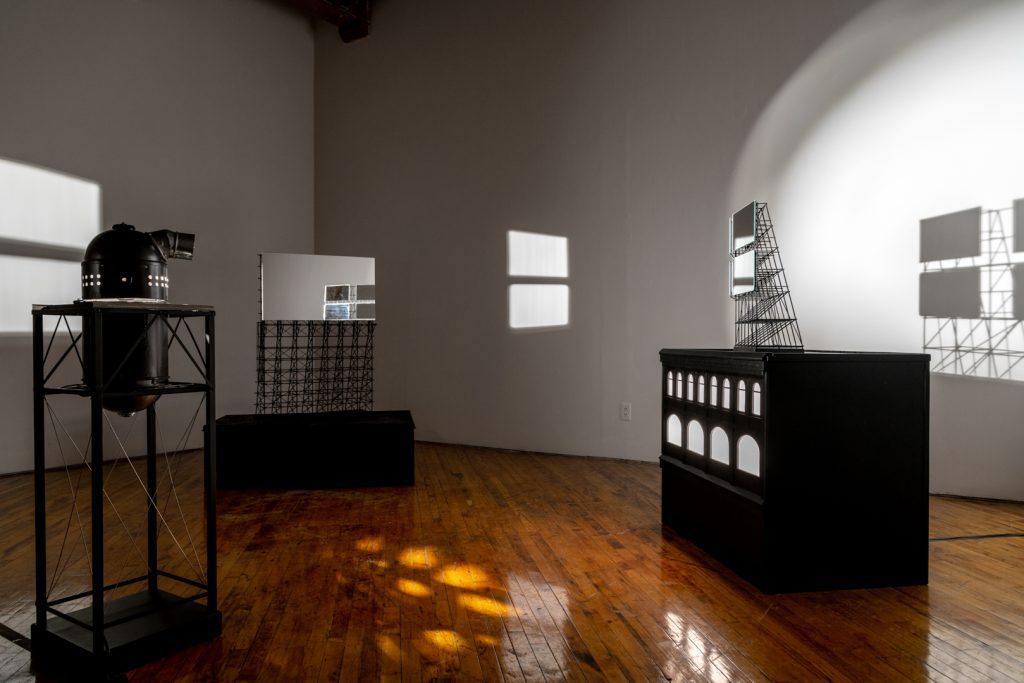
By Casey Hinton
It’s a familiar scene used in countless films: the slow drift of bright car headlights shoot through a window, casting diagonally shifting patterns across a dark interior wall. This haunting cinematic moment was replicated in Chris Foster’s solo exhibition, Structures for the Expanded Plane, at YYZ Artists’ Outlet in Toronto in January 2020. The darkened gallery was lit by a single, waist-high spotlight that rotated with a steady mechanical whir in the centre of the room. There was something strangely familiar, yet unrecognizable, in both the piece’s scale and motion—simultaneously a sun, a clock, a searchlight, a lighthouse, a panopticon—a mechanism for both illuminating and revealing.
Continue ReadingBy Stephanie Cormier
Tie-Dye for Germans is an intimate and intensely radiant exhibition of paintings by Janine Miedzik in the Project Space at Angell Gallery. These new works have emerged by bringing together the ways Miedzik has previously approached materials, including a dialogue between her painterly and sculptural approaches to making work. Her combination of painting and sculpture in a spirited, perhaps even comical way, further materializes in the reciprocity between two different methods of working, and ways of seeing.
Continue Reading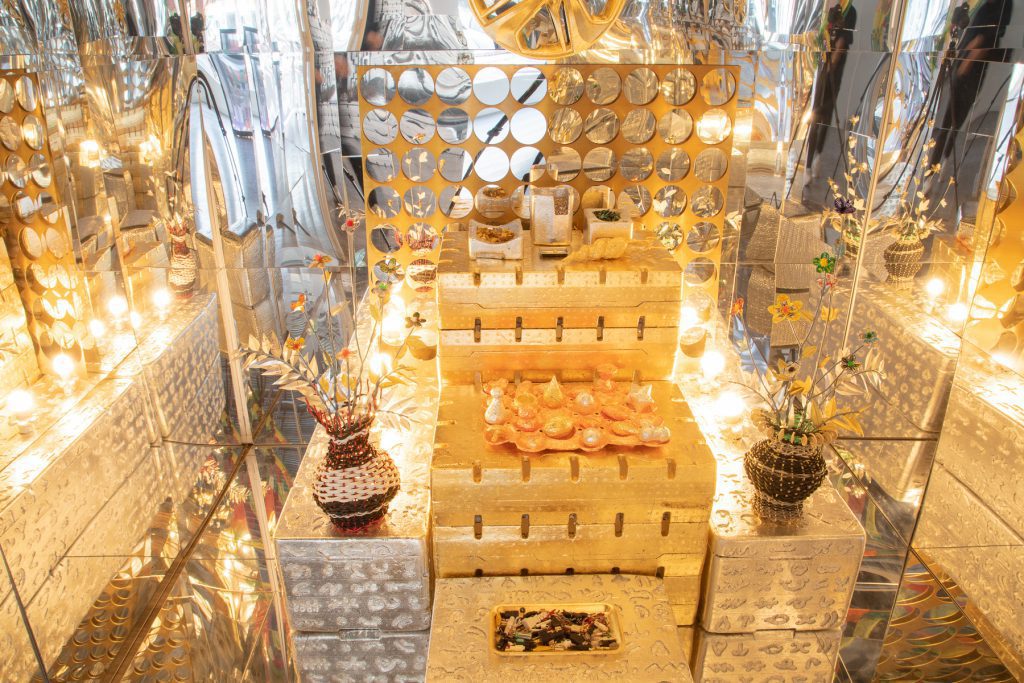
By Megan MacLaurin
If the trajectory of our contemporary era is one of environmental destruction, how will this legacy be felt by people 10,000, or even 100,000 years from now? What will these future humans know about us?—that is, if our species manages to survive its own self-annihilating habits at all. One possible way to ensure we will be remembered is through shrines. Across time, shrines have codified and communicated the values of their makers, immortalizing the time and place of their creation by distilling what is considered sacred.
Continue Reading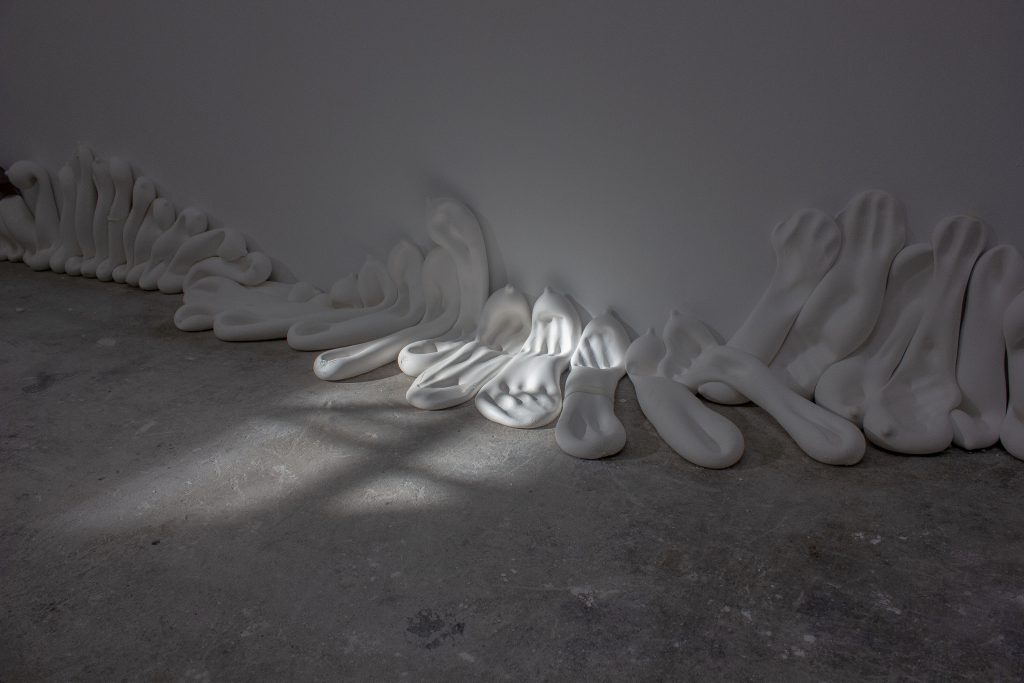
By Alex Lepianka
I am surrounded by two hundred and twenty-two plaster polyps cast in place along the perimeter of Sibling’s gallery floor. The forms, which make up Robert Anthony O’Halloran’s installation Ursula’s Garden, are nippled, bellied and creased, with a rare few still stretching the condoms in which they were cast. Pushed up against the wall or slumped onto the floor, collapsing, tired and erect, the castings demarcate a lively zone within the gallery. There is humour to O’Halloran’s installation, and it hits like a scrap of itinerant latex flung, forgotten and rediscovered in a faraway corner of my bedroom the morning after a low-consequence fuck. O’Halloran’s garden is not the underwater Disney hell that the show’s title references, but neither does it realize a place of oceanic, post-coital peace. Instead, each one of its castings strikes an irreplicable pose, hardened or perhaps exhausted by its once-living desires.
Continue Reading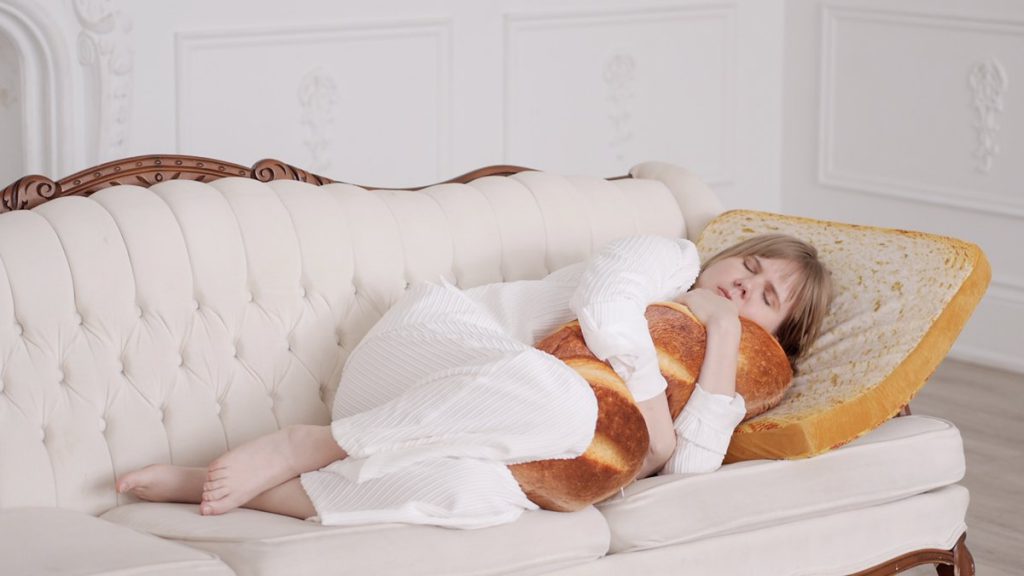
By Lauren Fournier and Greta Hamilton
This essay is the final instalment in a three-part series on culinary fermentation practices and their recent associations in the art world. “Fermentation for the Spirit” considers the rise in popularity of sourdough bread baking during the start of the pandemic, while theorizing on the larger social, political, and cultural potentials of fermentation.
LF: Half a year before the pandemic began, I was aware of a growing trend of sourdough and bread-based practices in contemporary Canadian art—especially art made by late-emerging and early to mid-career women and queer artists, many of whom were white settlers. As boules in art proliferated across a range of gallery spaces, I was curious about what prompted this development. Why were so many white women artists making bread art, and what are the discernible meanings of this shared theme within their disparate practices? Sourdough and bread art can be seen in recent work by artists Andrea Creamer, Bridget Moser, Zoë Schneider, Terri Fidelak, and Lexie Owen, to name a few. There are precursors to this art in work by another artist, Chloe Wise, who began her series of bread bags in 2013, melding challah (braided Jewish bread eaten on ceremonial occasions such as Shabbat and major Jewish holidays), bagels, and pancakes with luxury goods.
Continue Reading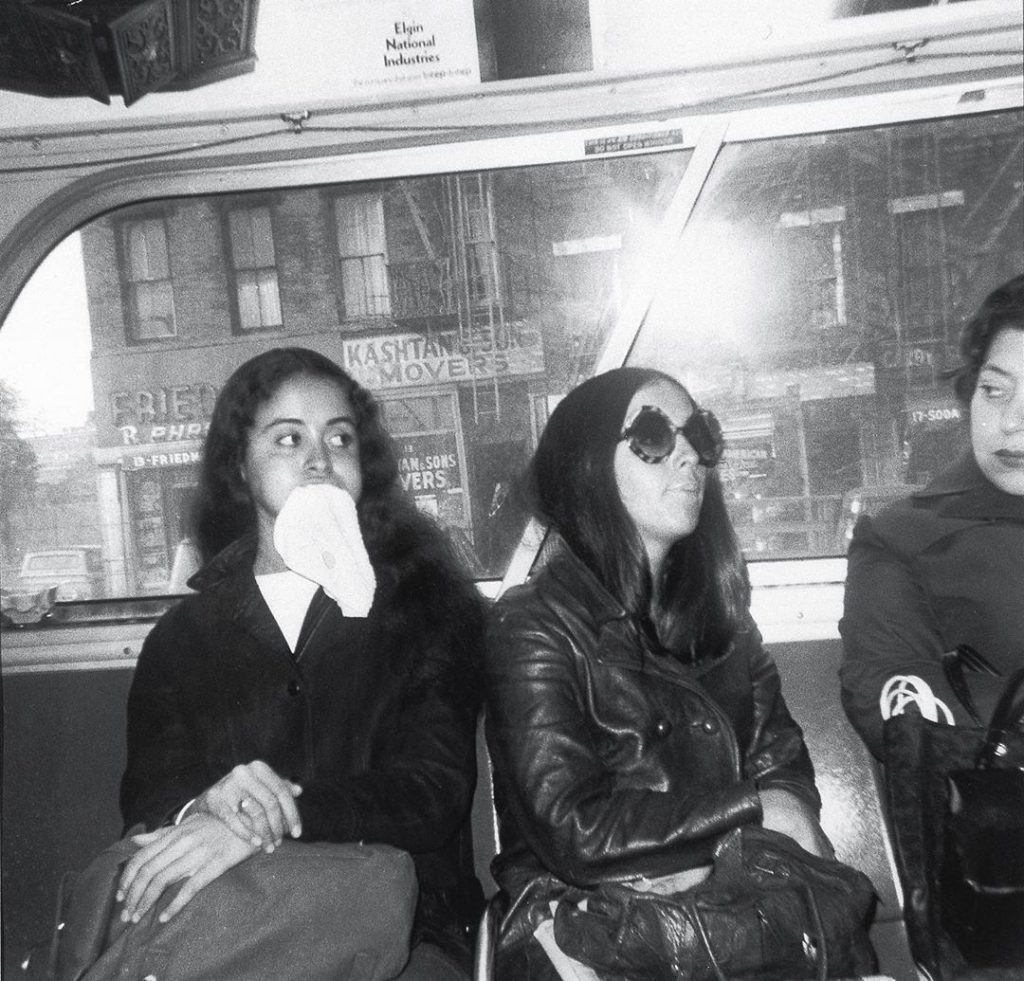
By Lauren Fournier and Greta Hamilton
This essay is the second in a three-part series on culinary fermentation practices and their recent associations in the art world. “Fermentation for the Spirit” considers the rise in popularity of sourdough bread baking during the start of the pandemic, while theorizing on the larger social, political, and cultural potentials of fermentation.
GH: The winter I started making sourdough, I also kept a fermentation diary as documentation for a conceptual art class I took with Amish Morrell at OCAD University. The diary was intended to function as a how-to for sourdough bread, inspired by instructional works from conceptual artists like Yoko Ono, Lee Lozano, and John Cage. It chronicles the origins of my sourdough starter, its multiple deaths, the many flat loaves of bread I ate with various soups, my relative hunger and fullness, the smells and tastes of my domestic surroundings. It was an attempt to present the document of a material process as a final artistic product—a tactic used by conceptual artists when materials were scarce and materiality was deemed overwrought and commodified. While writing the diaries, I meditated on the possibility of decentering materiality in a contemporary sense, perhaps held in the potential of writing.
Continue Reading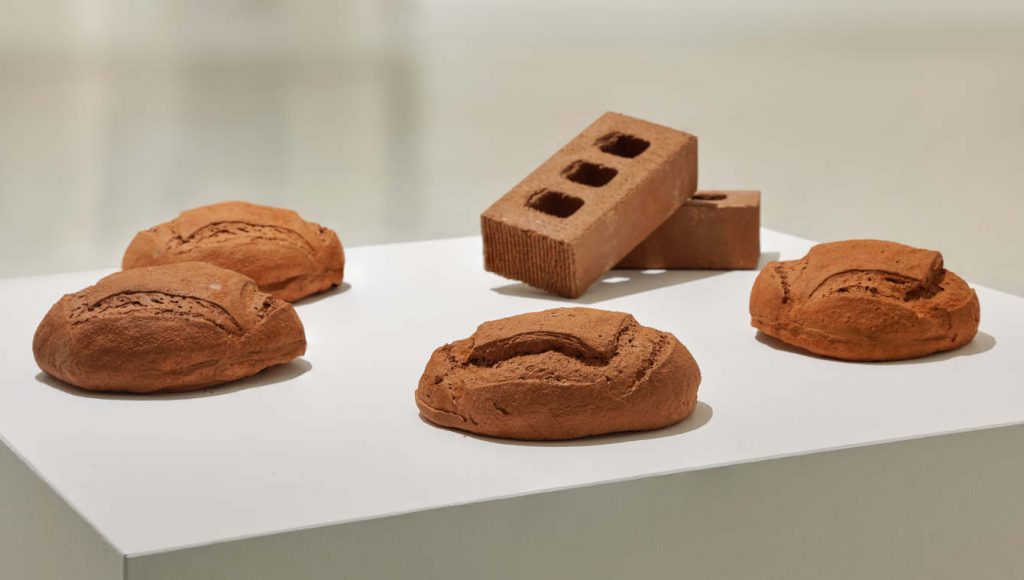
By Lauren Fournier and Greta Hamilton
This essay is the first in a three-part series on culinary fermentation practices and their recent associations in the art world. “Fermentation for the Spirit” considers the rise in popularity of sourdough bread baking during the start of the pandemic, while theorizing on the larger social, political, and cultural potentials of fermentation.
As more artists make work that exists between art and food, is there space for art writers to also be food writers? In the early days of the pandemic, we were struck by the importance of food and fermentation to us as writers and artists, but first and foremost, as humans who were hungry. We found ourselves asking: Do I care about food and fermented materials more than I care about art or the work of criticism (and by extension, language, research, and articulation)? Do these have to be kept separate? Why not mix them together and let them autolyze? What would it mean to expand the task of the art writer or critic to include the work of baking, gardening, activism, community organizing, planting native species and pollinator gardens, preserving and sharing those seeds, composting, telling stories, building libraries, building homes, tending to microbiomes—both within and around us? Can the work of art writing and criticism include all the work that nourishes a community, that feeds us physically, affectively, and spiritually, as writers and as people with guts?
Continue Reading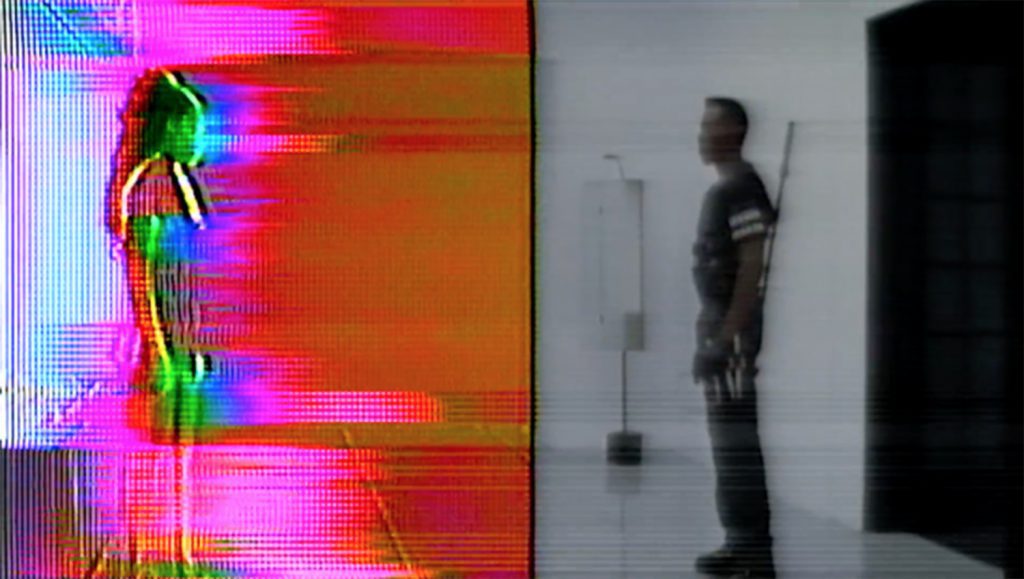
By Zach Pearl
The poignance of an exhibition is often measured by its ability to distil a historical moment, letting it hang in the air like luminous vapour. Amongst the media art exhibitions of the last year, perhaps none were more poignant than the eight-part artist video series, fractured horizon — a view from the body, which circulated during the weeks of protest that followed the killing of George Floyd. Curated by Toronto-based curator and editor Yaniya Lee as the culmination of her research residency at Vtape, Canada’s largest video art distributor, an impressive range of works by BIPOC women artists from Canada and the United States were sent out to Vtape subscribers’ inboxes like supplements; weekly injections of perspective and affirmation for all those in the arts community already feeling disheartened amidst the first wave of a global pandemic, and one now imbued with the urgent politics of fighting anti-Black racism and revealing white privilege. Like a shot in the arm, every Friday between June 5th and July 24th, 2020, a new piece would go up on Vtape.org, sometimes elegiac in tone, sometimes documentarian, but all of them anchored in their conjuring of the body politic. Pieces by Buseje Bailey, Richelle Bear Hat, Hannah Black, Deanna Bowen, Thirza Cuthand, Cheryl Dunye, Donna James and ariella tai each, in their own way, worked to reaffirm the vital connection between the social and material factors that constitute a “body” in the contemporary moment and, more specifically, to interrogate the strategies of representation that keep existing power structures in place.
Continue Reading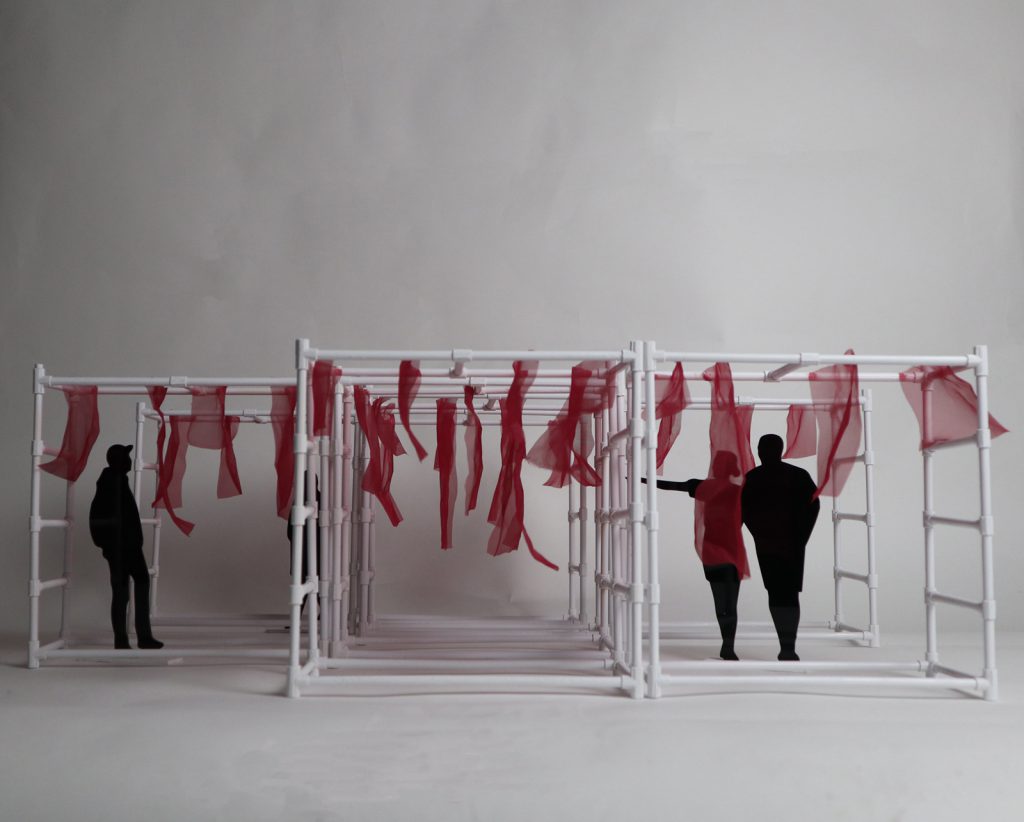
By Laura Beshears
I step slowly into a long corridor of vertically aligned PVC pipes in two straight lines, the synthetic material contrasting with the forest surrounding it. With the view around me obscured by the structure, which grows incrementally taller as I walk through it, I direct my gaze up toward the sky and become attuned to the sounds of twigs breaking beneath my feet and wind whirring through leaves. The path leads to a larger clearing of space – although walls of PVC pipes still surround it – and I join others who had taken the same meditative stroll moments before me. I linger, beholding the canopy of trees above and letting the soundscape of nature envelope me. I exit and find myself back in the forest, but with a different sensibility. Calm and at ease, I take pleasure in having encountered nature through an innovative sensory lens.
Continue Reading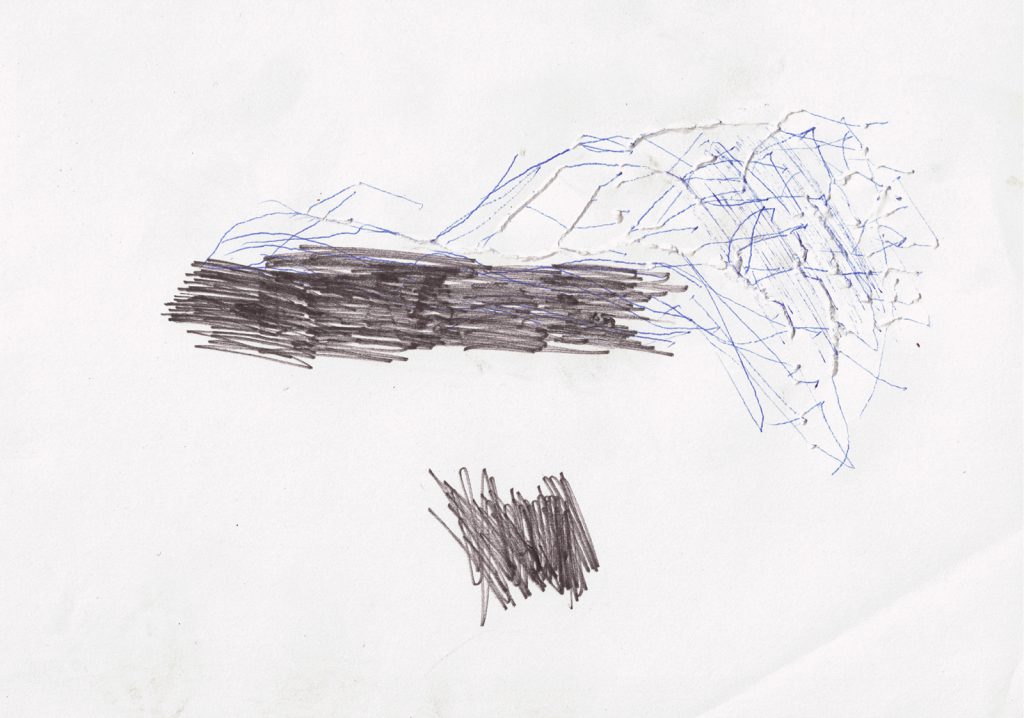
The Toronto Experimental Translation Collective (TETC) is a group of six artists and thinkers: Benjamin de Boer, Nicholas Hauck, Fan Wu, Eddy Wang, Yoyo Comay, and Ami Xherro. The collective first met and lived together at Artscape Gibraltar Point on Toronto Island in summer of 2020. Since then, they’ve been exploring the possibilities of collective translation. Their latest residency was in Qualicum Beach on Vancouver Island. They are recording an album to be released this year.
In this live garden interview conducted in Fall of 2020 around a suspended microphone, Xherro and the rest of the collective discuss alterity, meaninglessness, intuition, transcription, and zoology.
Continue Reading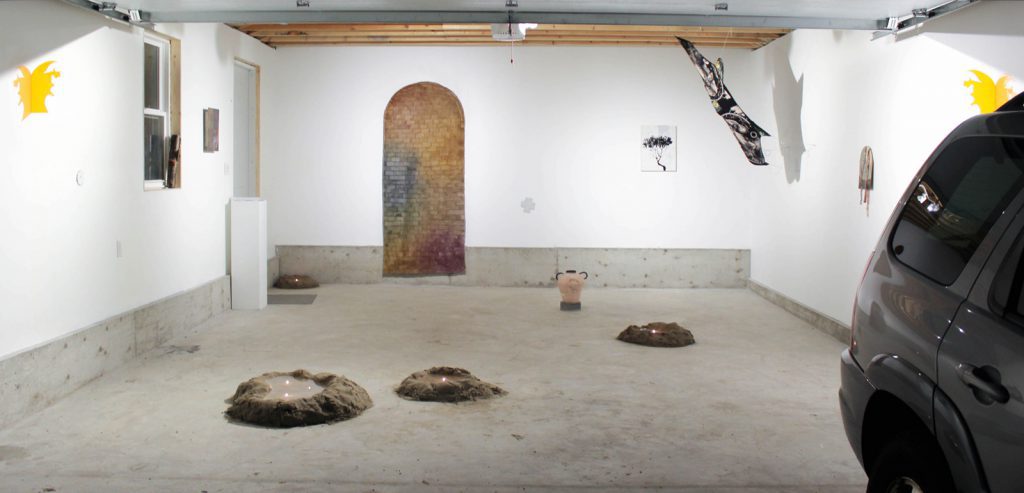
By Angel Callander
The year 2020 was, for many, characterized by forcing our collective attention toward myriad social issues, emphasizing not only their interdependence on each other, but on exploitation and class differences as well. It became clear very quickly that ‘essential’ jobs are the ones that cannot be done from home; they are also the ones with the lowest pay and little to no health benefits or sick days. Large numbers of people already in precarious positions lost their jobs, their income, and for many, their homes. Demands for rent cancellation and mortgage relief, particularly for those in large Canadian cities, underscored the cycle of working people living month-to-month who pay large portions of their paychecks to landlords, most of whom use tenants’ rents as their only income, and who in turn give that money to the bank for their mortgage. But who did the government ultimately bail out? Amidst subsidies for banks, there was never rent cancellation or legislated relief for tenants, just calls from government officials for landlords to “do the right thing.”
Continue Reading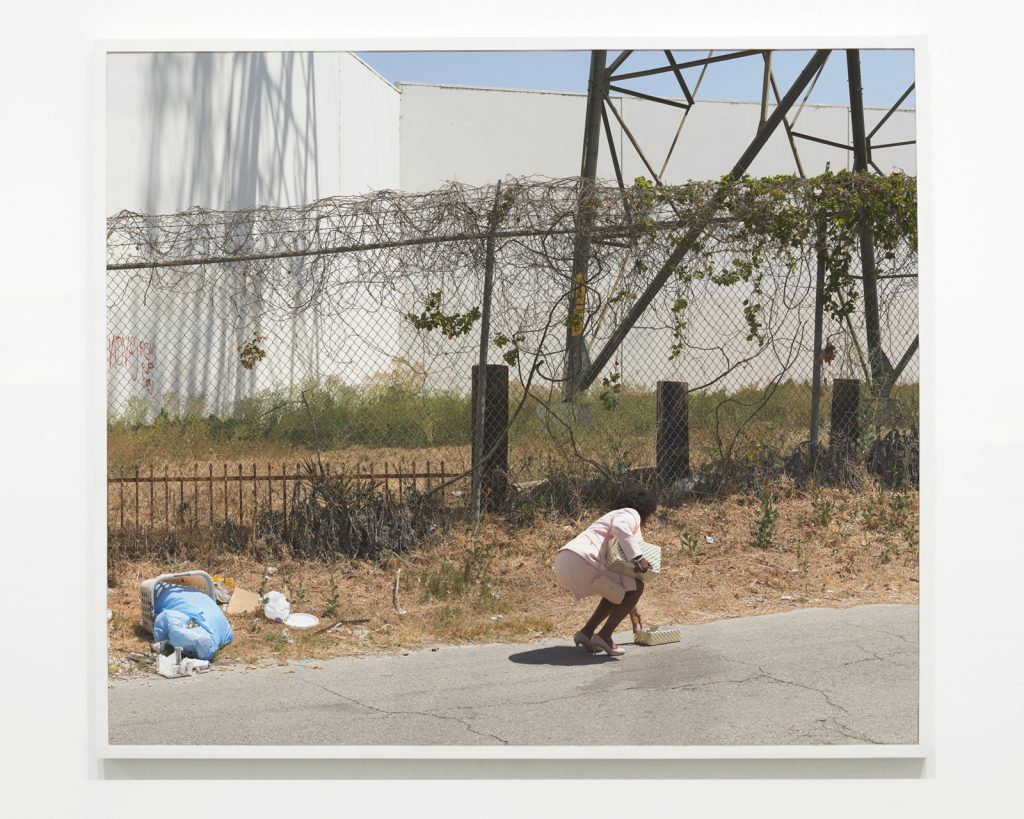
By Zoe Koke
Sean Sprague is a photographer from Toronto who now lives in Los Angeles. His work—large-scale singular tableau photographs—stage moments he observes in daily life, then recasts and reconstructs. These are spaces of in-betweenness aggrandized. Questions of labour and class drift through his work, tensions between the real and unreal, yet evidence is always withheld, faces turned away, details guarded, while maintaining that everything appears in piercing focus. Sprague, like many of his references and predecessors, is preoccupied with the gaps around truth. In describing his work he states, “Through staging of documentary scenes, these works seek to challenge the authority of the documentary traction in photography and its narrow definition of truth that excludes so much.”
Continue Reading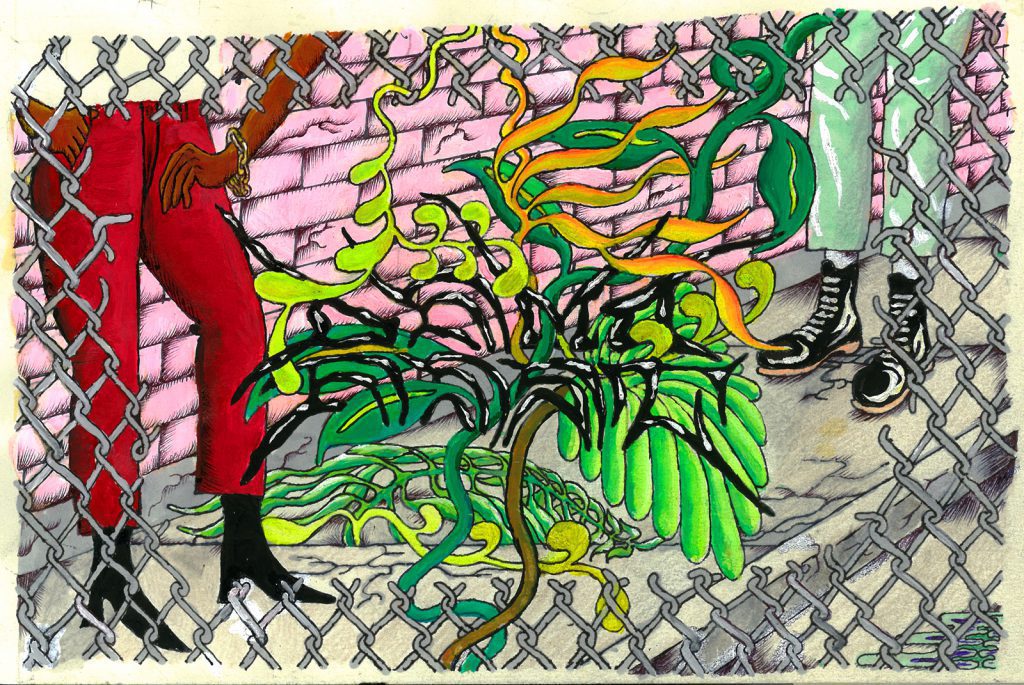
By Megan Gnanasihamany
Let’s pretend that we’re at a show. It’s sometime before last March, any night of the week. Early evening, but this is winter, and the sun has been set for hours already. We shrug our coats off into the all-black pile. I’ll retrieve mine later to wear it loose over my shoulders, following the smokers outside to revel in the cold between sweaty sets, after which I’ll fix my wandering eyeliner in my front-facing camera, since the available bathroom is the one with no mirror. You grab a water, maybe a beer, from the bar or your bag, depending on where we are. The night is full and warm and easy, and we maneuver through friends and strangers, angling for the right spot from which to watch other friends on stage. Then it’s your turn to go up, and the roles reverse.
Continue Reading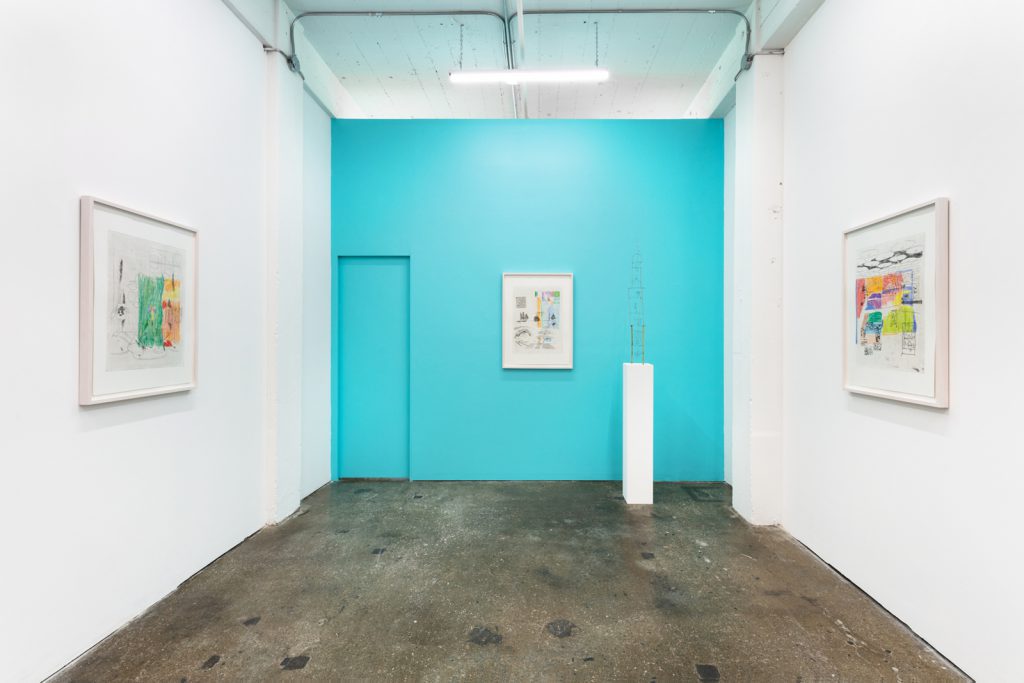
By Parker Kay and Madeleine Taurins
Thursday, September 10, 2020:
Robin Cameron’s solo exhibition titled Memory Palace opens at Franz Kaka’s new location at 1485 Dupont Street.
Sunday, September 13, 2020:
Parker,
We were both headed to see Robin Cameron’s exhibit Memory Palace. I was walking, you were riding your bike. We had apparently chosen the same route, only different methods of transportation. I had turned around halfway because a few seconds earlier I realized that it was Sunday, not Saturday, and the gallery would be closed. As I turned, we crossed paths–you headed where I was just a few seconds ago. Now that I was turned in the direction of my house, changing directions again seemed like too much change for one day. You continued on, risking the possibility that you would show up and there would be no one to let you in, but there was. You saw the exhibition that day, a Sunday. I did not. You sent me a picture of the show and I regretted not turning a second time, back in the direction of the destination I never made it to.
Continue Reading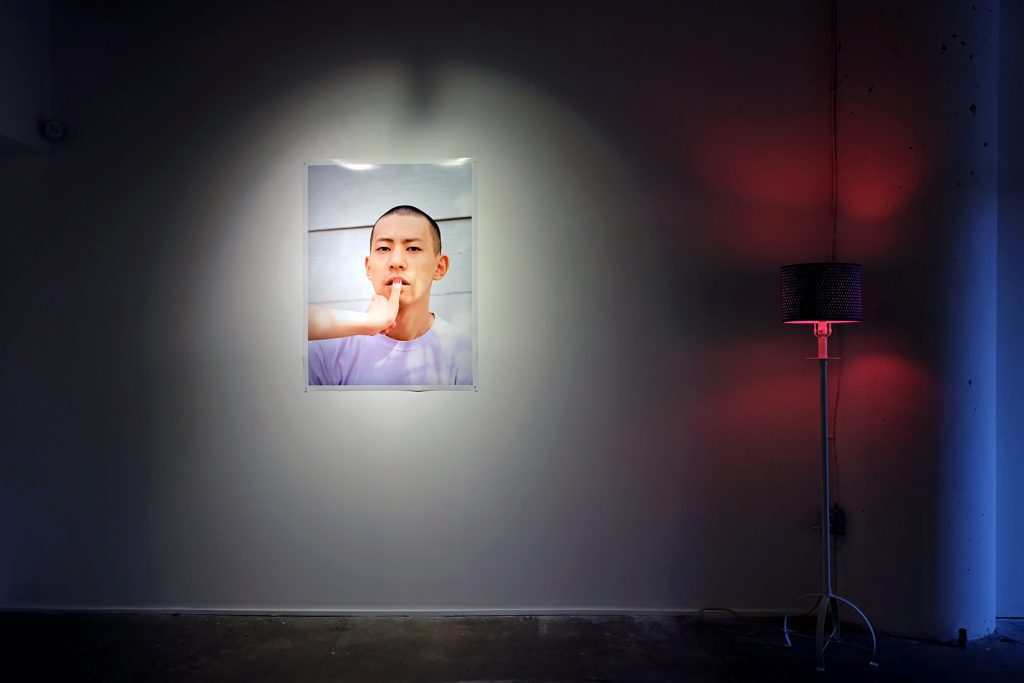
By Nawang Tsomo Kinkar
“But it’s so intimate,” explained my friend about a community theatre group.
Dazed by her reasoning, I remember responding, “What’s wrong with intimacy?”
And then felt unsure myself.
What is wrong with intimacy?
Continue Reading
By Helen Lee
There is no fresher horror to the modern-day luddite than the social media Live Video function. In the Live Video, the subject is tripled: there is the subject filming, the subject being viewed, and the subject auto-saved for posterity by the filming interface. Live Video has a forebearer in performance art, such as Joan Jonas’ incorporation of live video into her “actions” during the 1970’s. In describing Jonas’ performance Vertical Role (1972), curator Barbara London writes that by using live video, Jonas invokes the “unedited present” as a means of dislocating space and elongating time. (1) In contrast, the practice of “going live” on social media renders the unedited present as digital content to be viewed and shared on a for-profit platform. The medium of video art in the contemporary context is uniquely positioned to ask: Where is a better vantage point from which to view the present than Live?
Continue Reading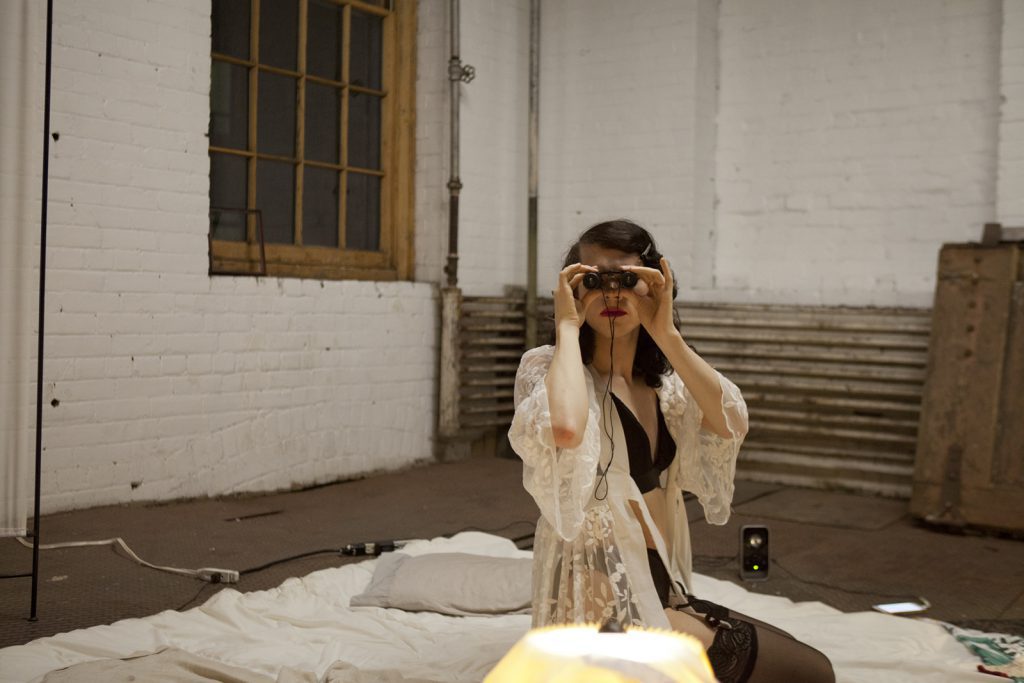
By Shalon T. Webber-Heffernan
Plenty of Fish opens with James Knott’s shadow dramatically shaving off body hair behind a dimly lit partition to an assemblage of sounds. The West Side Story tune “I Feel Pretty” harmonizes with the clamouring of an electric razor, sheep shearing, and the buzz of a lawn mower. Meanwhile, the famously cinematic score from Alfred Hitchcock’s horror-thriller film Psycho resounds. The figure behind the divider seductively unravels a pair of stockings as Nina Simone’s The Other Woman melancholically lingers quietly in the background. Knott eventually emerges from behind the partition scantily dressed in vintage lingerie and dramatically falls down onto a duvet, while the dimly lit lamps conjure a lonely night time scene. The audience is in the bedroom now, and we find Knott waiting like a lonesome queen.
Continue Reading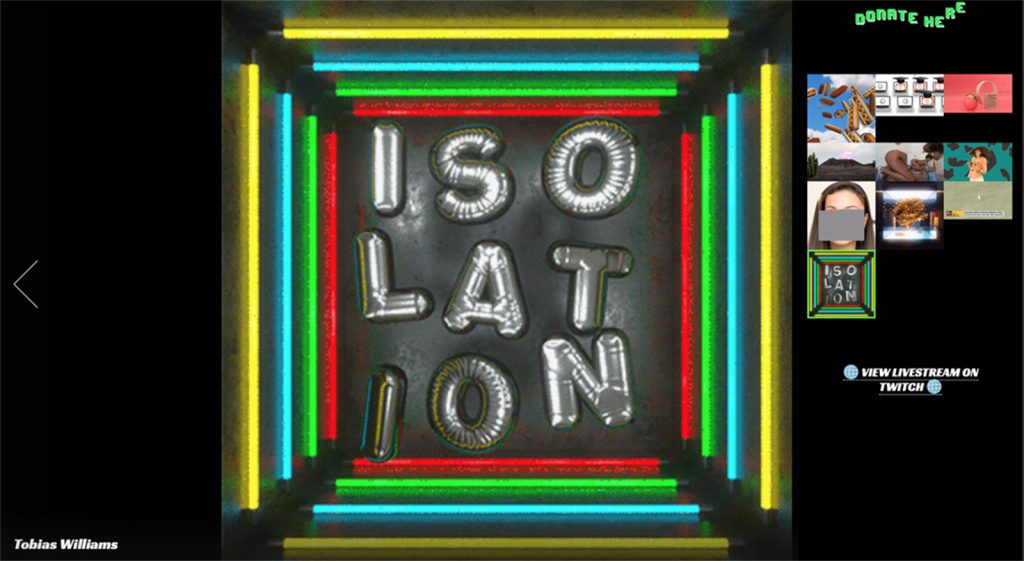
By Shauna Jean Doherty
Since the early 1990s, the Internet has served as a medium, as well as a site of connection and presentation for artists situated across the globe. Art made specifically for online contexts is inherently ephemeral and infinitely reproducible, qualities which have historically hindered Internet Art from being readily taken up in mainstream art circles. Now, in our COVID-19 stricken world, they are the very characteristics that are enabling the form to thrive. This is a moment that net artists didn’t know they were preparing for. Amid this global pandemic their digital savvy and techno-agility has suddenly proven to be prescient.
Continue Reading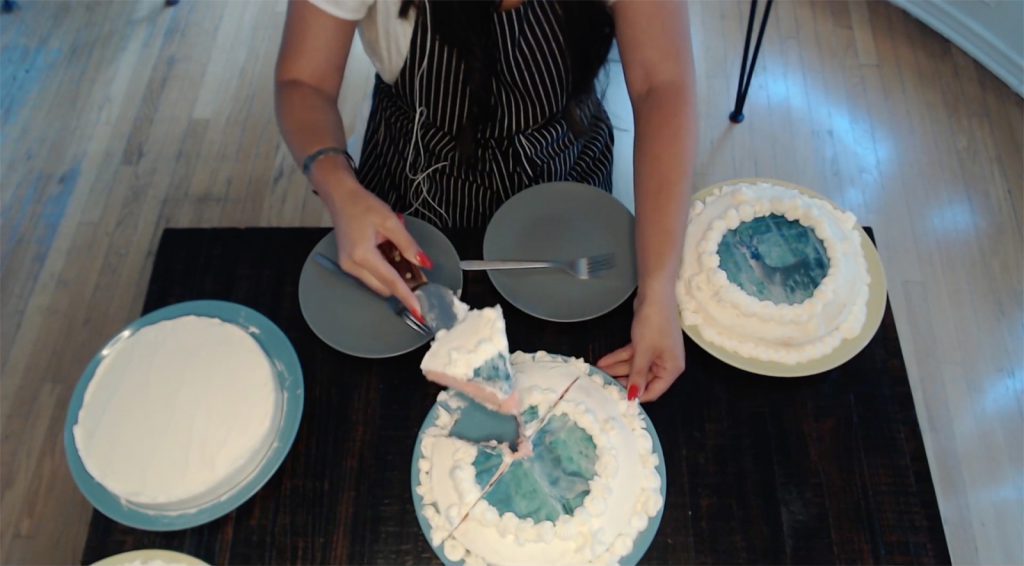
By Susie Winters
At the center of the frame, a white-frosted cake sits like a full moon on a dark wood table. Suzanne Kite drops her palms to either side of the orb, her red fingernails glinting up to the camera. “This performance is about death,” Kite warns her viewers before she commences a live-stream performance from her home in California.
Continue ReadingBy Madeline Bogoch
In her 1976 essay “Video: The Aesthetics of Narcissism,” Rosalind Krauss attempts to pinpoint the singular essence of video-based artwork, speculating on the possibility of the claim that the “medium of video is narcissism”. (1) For Krauss, the linchpin of this perspective was the (now taken for granted) instantaneity of video, which produces perpetual feedback that captures the subject in a closed circuit of “self-encapsulation”. (2) There is an implied intimacy in this simultaneity—while Krauss perhaps over-essentialized the quality of video, she shrewdly identified the implicit correlation between video and the psyche.
Continue Reading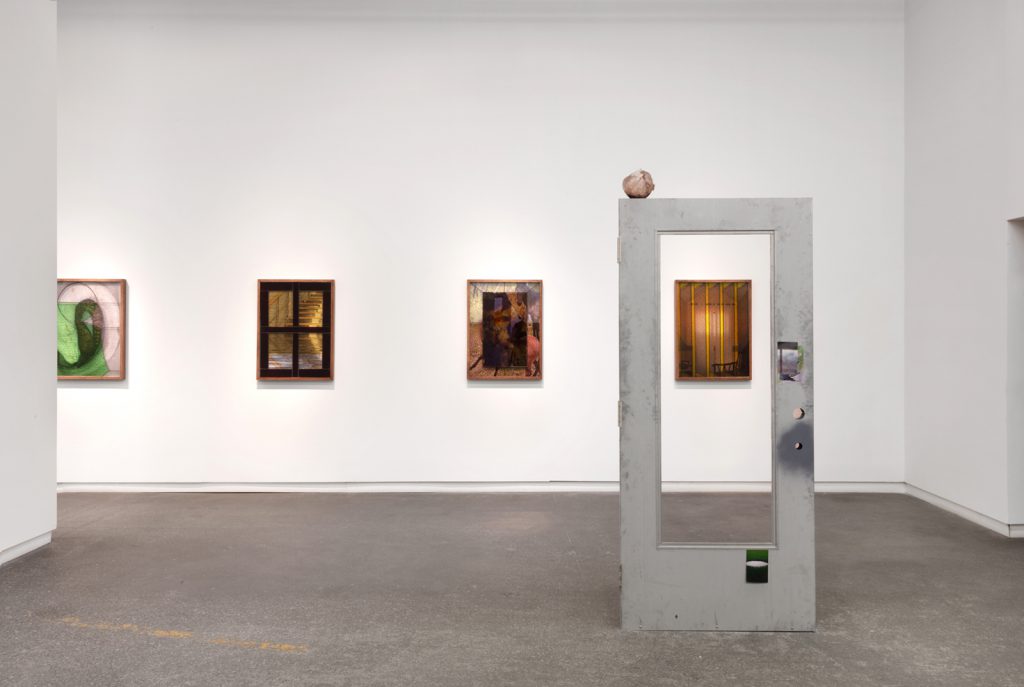
By Erin Orsztynova
Recently I had a memory come back to me—the type of memory that comes to the surface seemingly out of nowhere, one I imagine would be considered so very mundane that any brain, in an attempt to conserve space, would erase immediately. But there it was, collapsing time, a visceral scene from childhood of me squeezing into the small space beneath my bed. I remembered the tightness of the space, so tight my child-sized head could only fit in sideways. I remembered the smell of the dusty cambric from the boxspring, and the feel of the carpet on my cheek. Close and containing, this small space gave me the experience of disappearing entirely from view, complete with the contradictory desires to both remain hidden and be found.
Continue Reading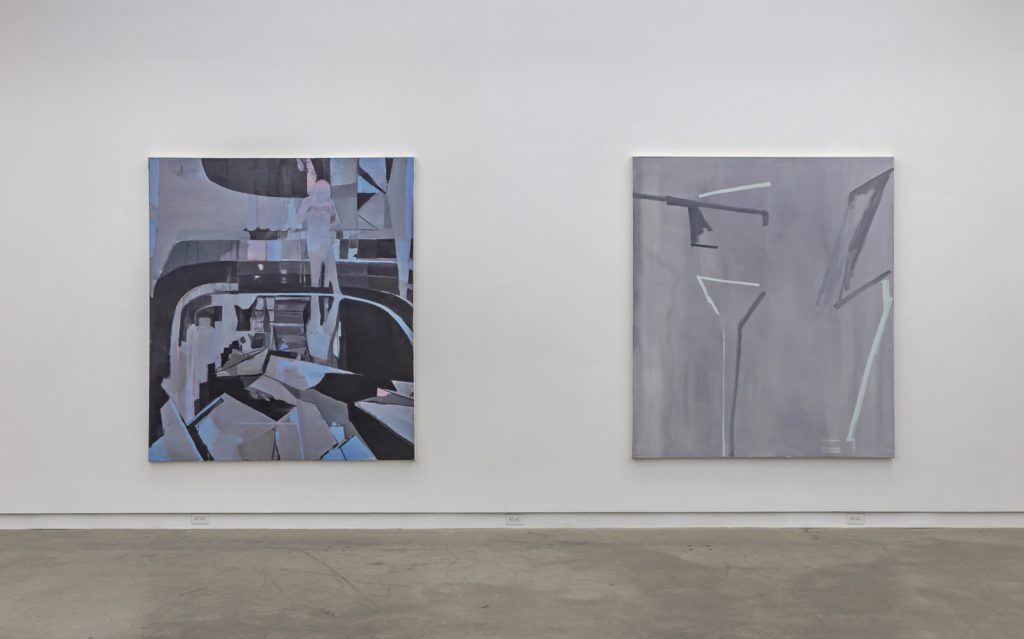
By Gregory Humeniuk
Dear N,
It was great to catch up with you and R in Winnipeg in February. Visiting Plug In and the WAG reminded me of how much I miss the essential pleasure of an exchange about art before art. Clint Roenisch’s Eli Langer exhibition would have been an antidote to the usual bunch of second-rate shows any time, and when Ontario’s emergency orders were still novel, Clint welcomed a private visit on a Tuesday afternoon. With everything closed, Langer’s paintings from LA around the turn of the century, through the aughts, blotted local mediocrities and lifted my spirits.
Continue Reading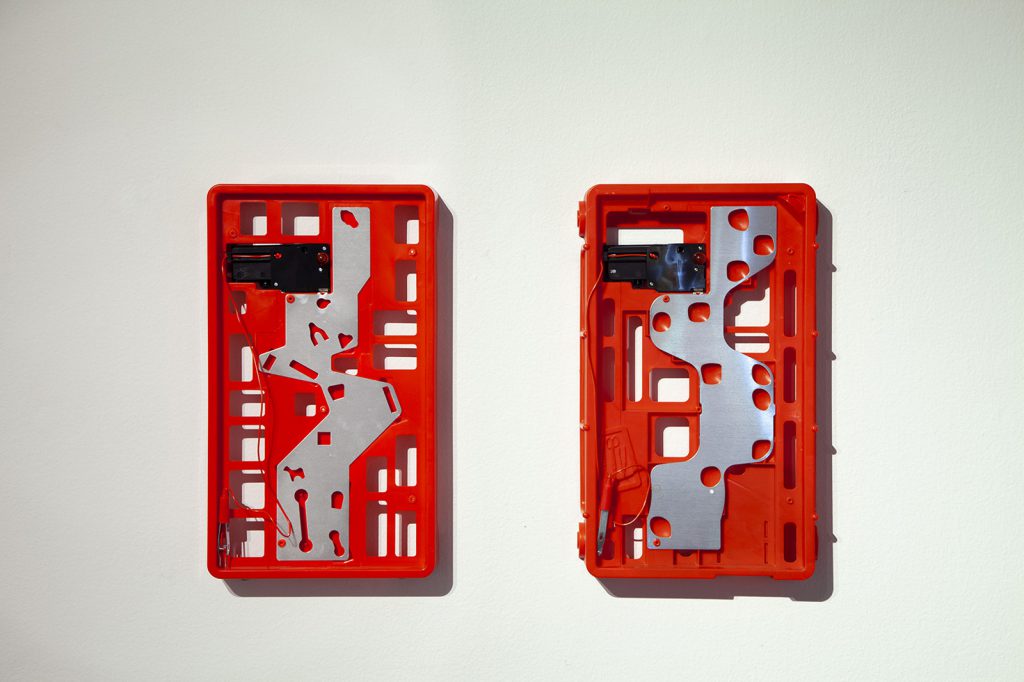
By Nic Wilson
A labyrinth is distinguished from a maze by its lack of dead ends and by its unicursal paths. The traveler is easily disoriented by the winding path, moving against their intuition and sense of direction. In the concentric circles and hairpin turns, the walker moves along a line that bends in on itself. Traditionally, one starts their walk on the outside of the labyrinth moving circuitously toward and away from the centre until they arrive, almost by surprise. Similarly, Julie Oh’s work moves with the turns of the labyrinth, but it starts at the centre. It takes you along in looping turns toward and away from the specificity of the heating blanket or the prescription bottle until this known thing is strange, known, strange, and known again. The work of the labyrinth is embodied work; it makes an internal world into physical space. Similarly, so is navigating Oh’s Tunnel, Air, Mother—a body of work that confounds, conflates and takes pleasure in the already messy binaries of mother-daughter, parent-child, caregiver and receiver, intimate and communal, personal and public. Rather than imagining a spectrum—a straight line—between fixed positions, the work in this show travels the curves and loops between them.
Continue Reading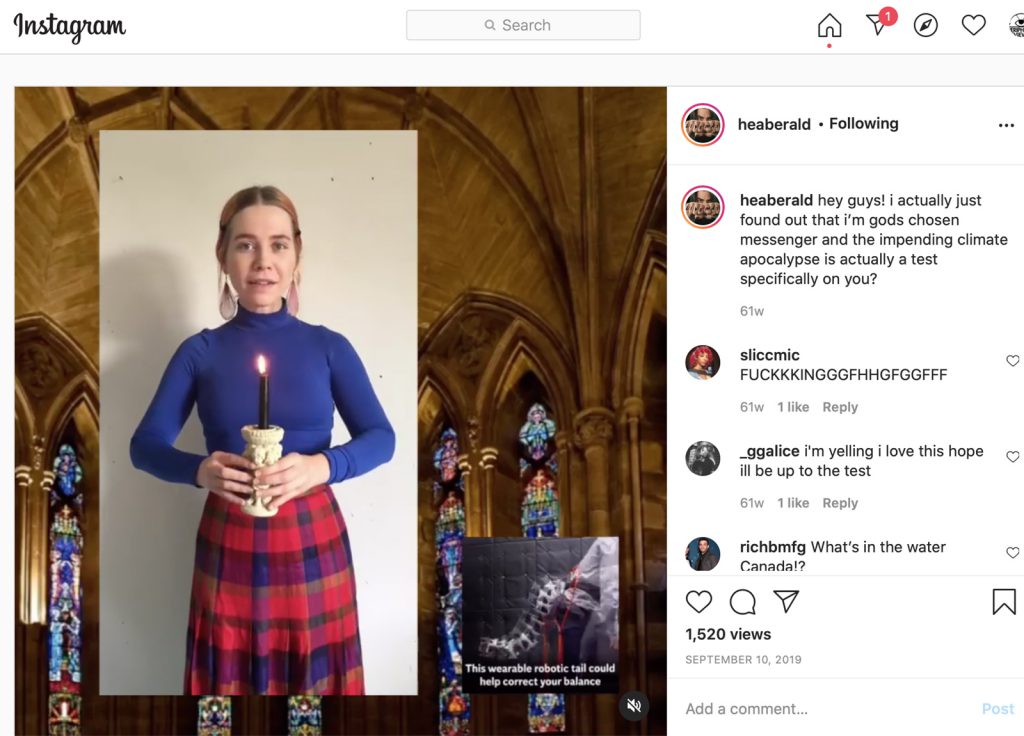
By Dallas Fellini
On her Instagram account, Summer Emerald asserts that she is the “World’s Hottest Doomsday Preacher.” Her Internet presence alone possesses the sort of authority that makes me unwilling to question this. For almost a year, I have been vigilantly watching the Montreal-based artist prophesize the apocalypse to her Instagram followers. Appropriately, my visits to Emerald’s Instagram page became more frequent after being placed under government-mandated social isolation in my gloomy basement apartment at the onset of the COVID-19 pandemic.
Continue Reading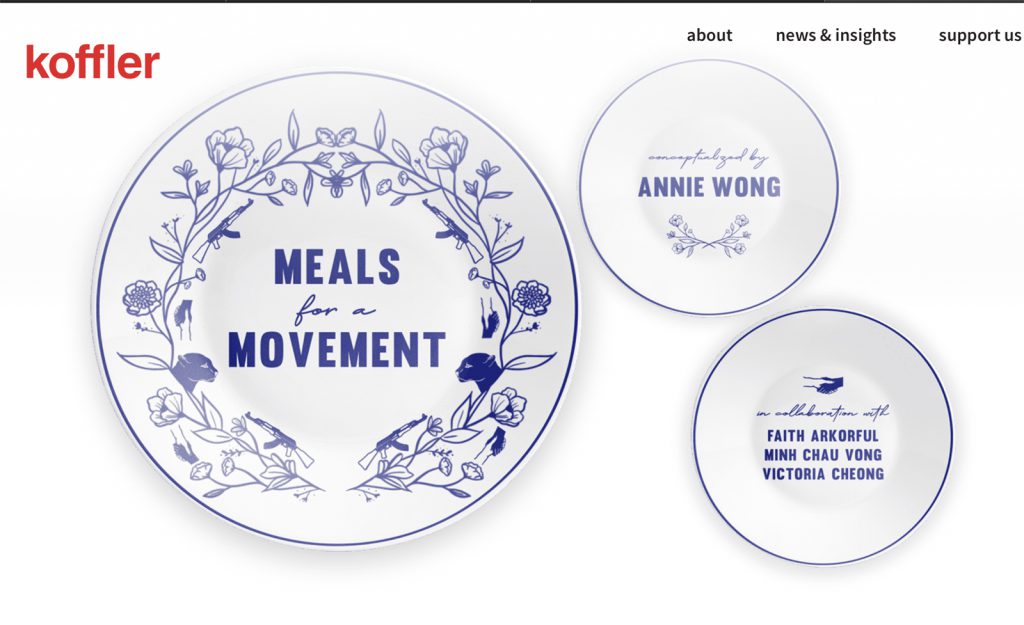
By Hailey Mah
How can we create the conditions for intimacy, solidarity, and nourishment while we’re apart? How can we break bread and share knowledge over a virtual table? Meals for a Movement, an online project organized by Koffler.Digital, shows us how answers to these questions might take shape. Transcending the typical online exhibition through an intimate audio format, the project’s three sound pieces invite the viewer to share invaluable space with BIPOC women artists and activists. Launched in February 2019, its works have only gained relevance since. When I first began writing about Meals for a Movement in March 2020, social distancing orders amid the COVID-19 pandemic made the project’s online format feel suited to the current moment. Then a global uprising against systemic racism and police brutality began its resurgence, and Meals for a Movement’s lessons in metabolizing resistance became more resonant than I could have anticipated.
Continue Reading
By Margaryta Golovchenko
A warm sensation arises inside of me as I step into the Joan Goldfarb Visual Arts Study Centre. Originally a storage space for artwork that has recently been converted into a small gallery as part of a pilot project, the space is small and cozy. The gallery is well-lit by large circular lights hanging from the ceiling, the light warm and soothing as opposed to glaring in the way white cube galleries sometimes are. There is an interplay between black and white in the space, the exterior wall on the left-hand side of the gallery is painted a matte black that instantly draws the eye. A rug on the floor and the comfortable-looking couch just off to the side serve as an invitation to linger, adding a sense of intimacy to the space.
Continue Reading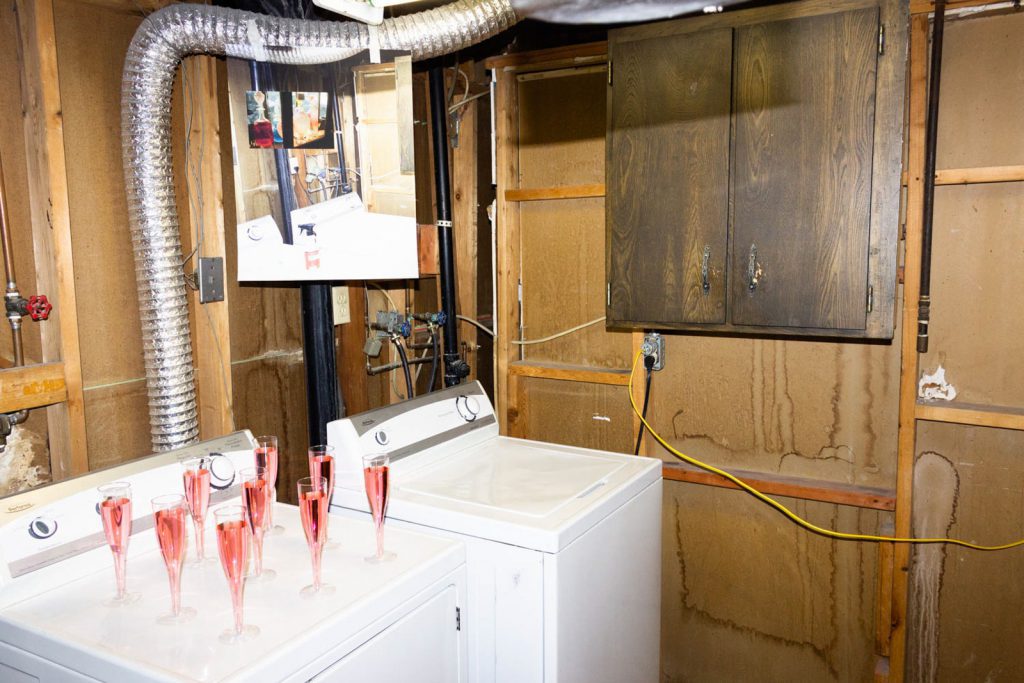
By Patryk Stasieczek
I surprised Zoe Koke at an exhibition of hers in an East Vancouver multipurpose space. She didn’t notice me immediately, so I watched as she remedied an unwanted peekaboo of wood and canvas behind a piece of tapestry that was a part of her installation. Her movements reminded me how long it had been since we last occupied the same place—during a Montreal winter in a repurposed basement that smelled of Dove soap. Her practice became suddenly present and I half-visibly paced between her photographs occupied with thoughts on wellness, the physical materiality of being, and how a practice of writing images embodies resolution but retains layers of distortion. Days after the opening, she and I walked the Boundary Bay shoreline of the Tsawwassen First Nation with our eyes peeled for fragments of shell burnished by the water and sand.
Continue Reading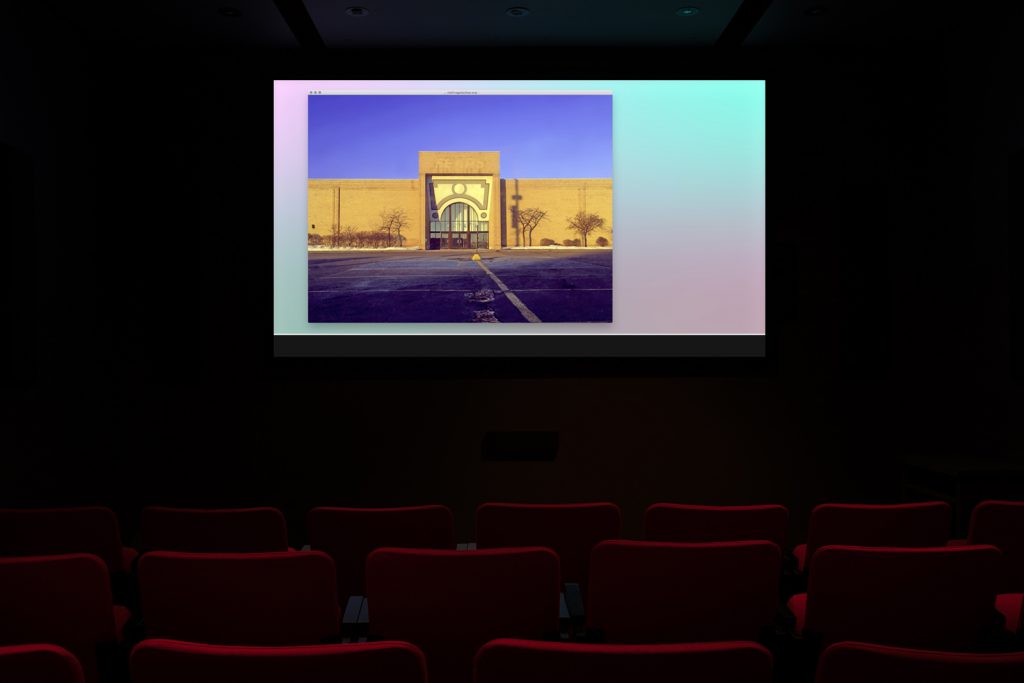
By Michael Eddy
“If I want to imagine a fictive nation, I can give it an invented name, treat it declaratively as a novelistic object, create a new Garabagne, so as to compromise no real country by my fantasy (although it is then the fantasy itself I compromise by the signs of literature). I can also—though in no way claiming to represent or to analyze reality itself (these being the major gestures of Western discourse)—isolate somewhere in the world (faraway) a certain number of features (a term employed in linguistics), and out of these features deliberately form a system. It is this system which I shall call: Japan.”
– Roland Barthes, Empire of Signs
Continue Reading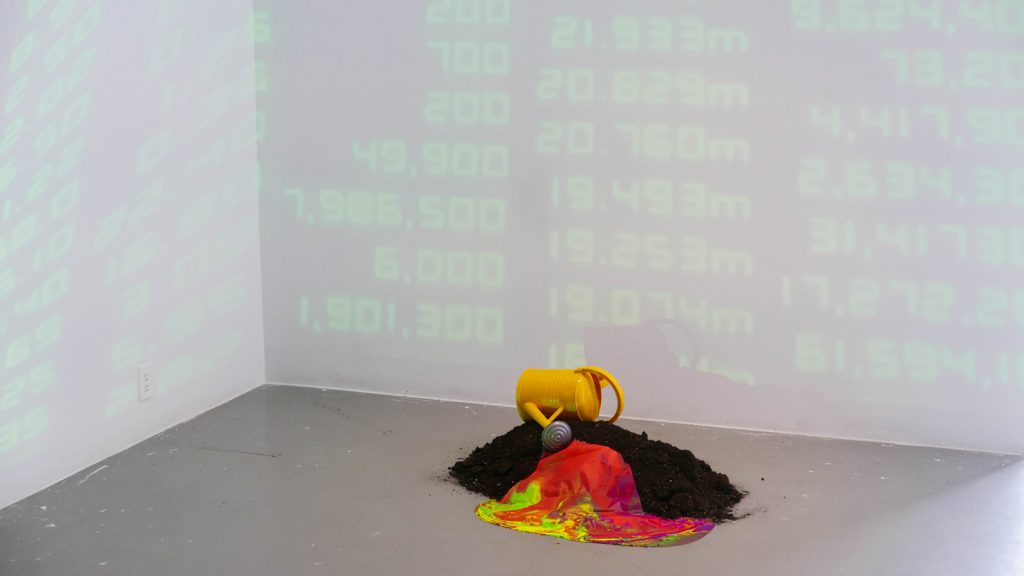
By Chris Gismondi
The exhibition, Between Ice and Earth which took place last summer at Xpace Cultural Centre, celebrated a close-knit community of Indigenous OCAD students, transcended barriers, and vibrated with a palpable uneasiness. The showing by Ana Morningstar, Dehmin Osawamick Cleland, Megan Feheley, Laura St. Amant, Amanda Amour-Lynx, Ben Kicknosway, Kaya Joan, and Tom McLeod addressed frustrations about the expectations of Indigenous art and the pressure of being makers inheriting Indigenous and settler cultural legacies. The artists responded to the familiar theme of relating to the land and space of Tkaronto, but with a distinct anxiety about anthropogenic pollution, the climate apocalypse, and how the continually degrading health of the land affects Indigenous protocols, ceremonies, and material practices. This angst presupposed our current political climate, while offering an antidote of community solidarity—a fundamental element which should not be ignored.
Continue Reading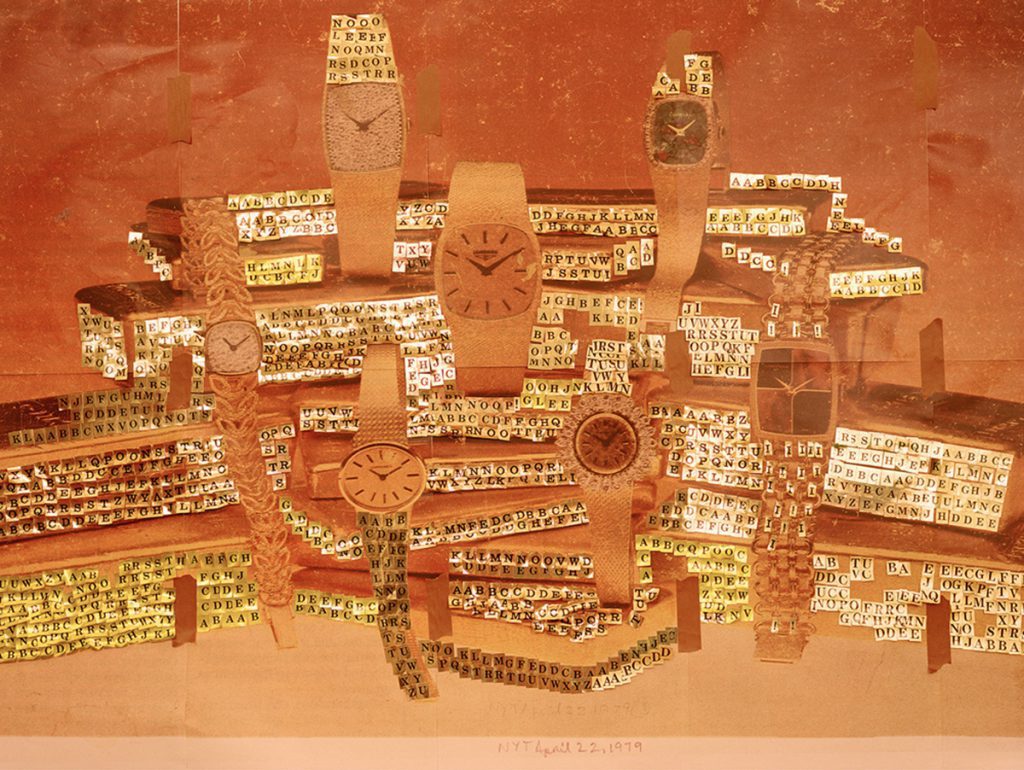
By Derek Coulombe
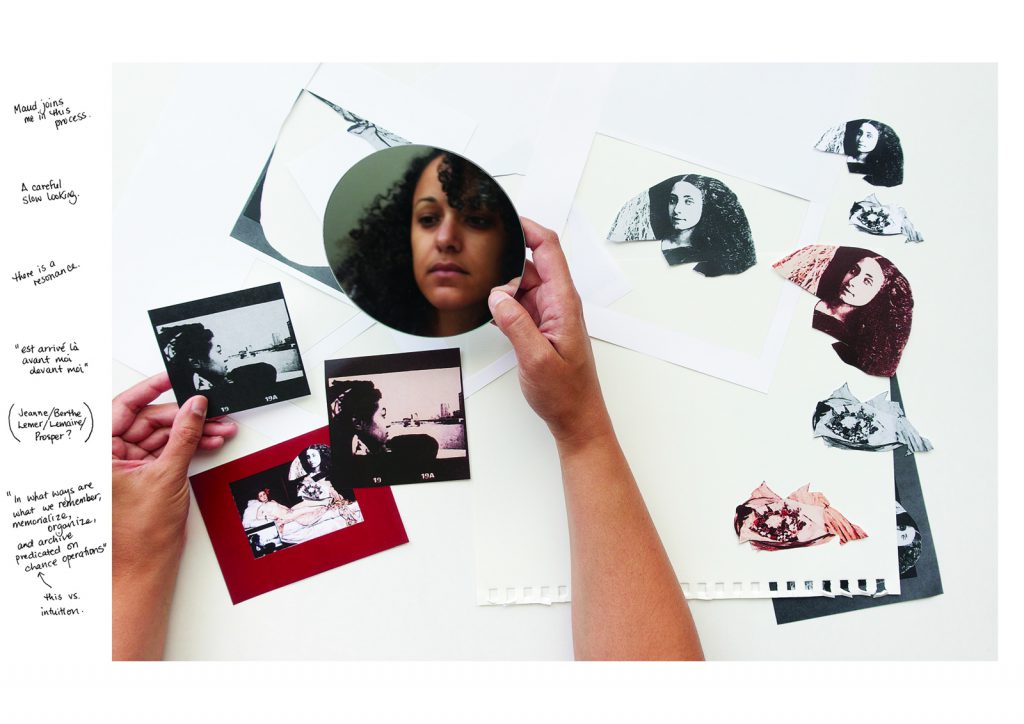
By Lillian O’Brien Davis
There is a moment in a gust of wind that precedes a rumbling stormy sky, when I suddenly feel different. A sudden restlessness comes over me, a sense of longing for a place that does not exist, perhaps buried in the ashes of a village destroyed by merchants seeking to sell human flesh. The electric, tense change in that moment recalls magic to my skin, an embodiment of the magic of the Zabat, a Black woman’s rite of passage. For a moment I feel ancient, powerful, and lonely—as if I’ve forgotten something important and I’m on the verge of remembering it. (1)
Continue Reading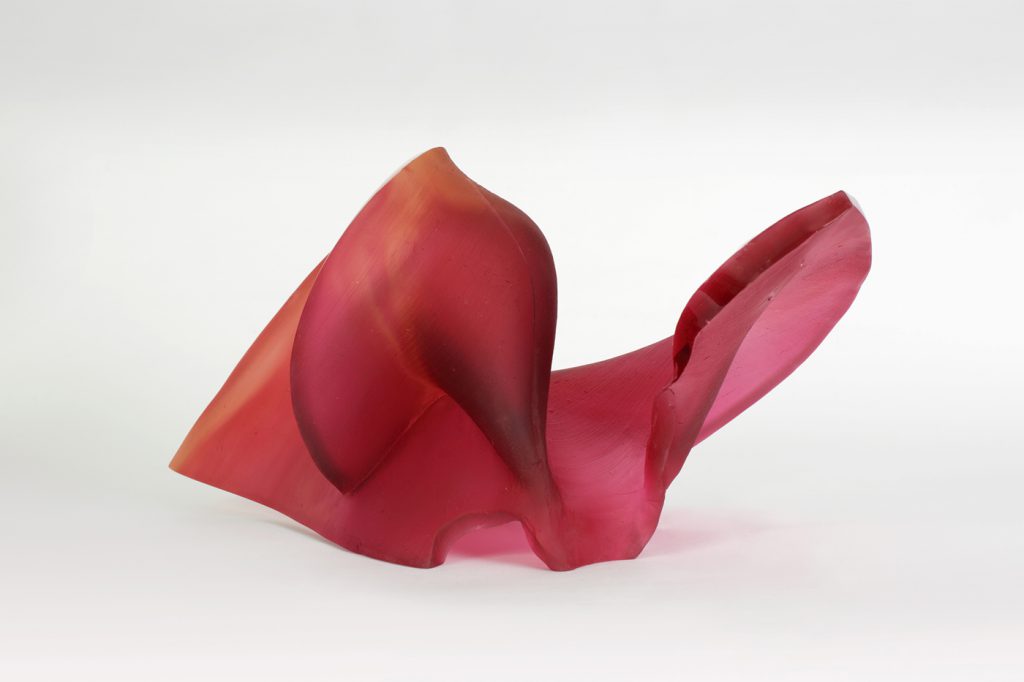
By Juilee Raje
My friends shudder when I bring up the story of when I bit into a glass as a young child. As the story goes, I could barely see past the table at a restaurant, surrounded by indolent chatter from my family. In the middle of the meal, as my father recalls, he heard a terribly conspicuous “tok” sound—my family looked over in horror to see my teething mouth closed over a wine glass, little hands clasped happily around the stem. I may have simply been practicing being a sculptor with an unconventional method, because when they pried my mouth open, out came a perfectly intact piece of glass. Continue Reading
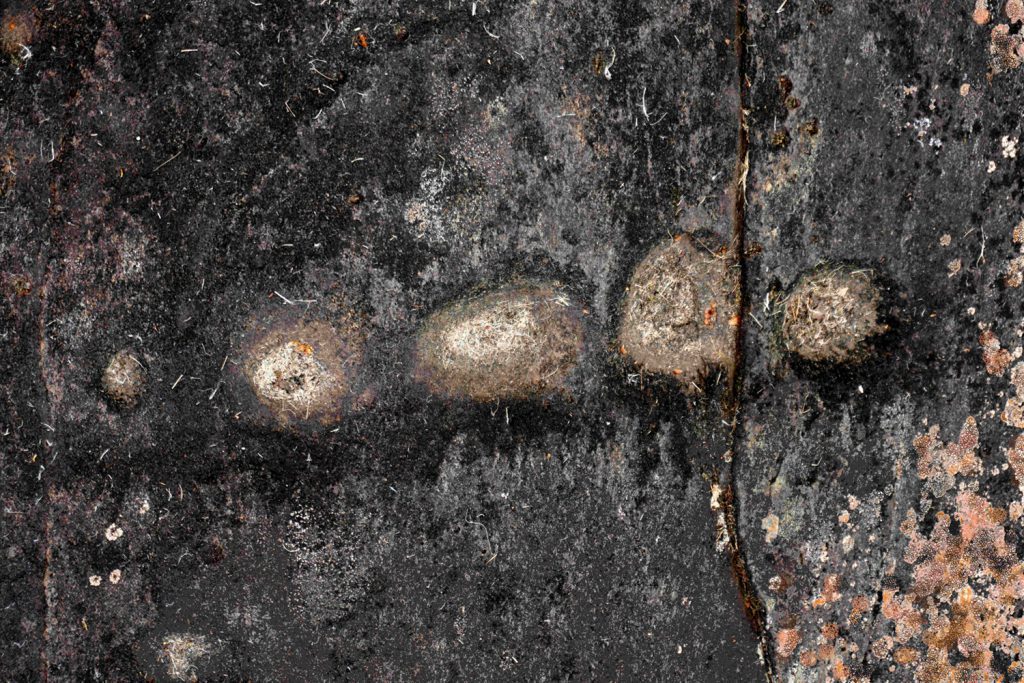
By Shannon Foskett
“Science does not have a monopoly on empiricism,” historian David Topper once noted, arguing that empirical matters are, in fact, “germane to all visual imagery.” (1) Recognizing the role of visual images in the production of theoretical knowledge means understanding that their value extends beyond mute illustration to their unique capacity for discovering and articulating new information. An elegant case in point is trigonometric parallax—the “gold standard” of geometric measurements—first developed by Hipparchus (190-120 BCE), and still used by today’s astronomers for determining the moving edge of our expanding universe. (2) Whereas distance measures the spatial difference of two points, parallax derives distance through the mediation of a third: observing a distant object while alternating between two lines of sight, one can measure the apparent shift in an object’s location. Continue Reading
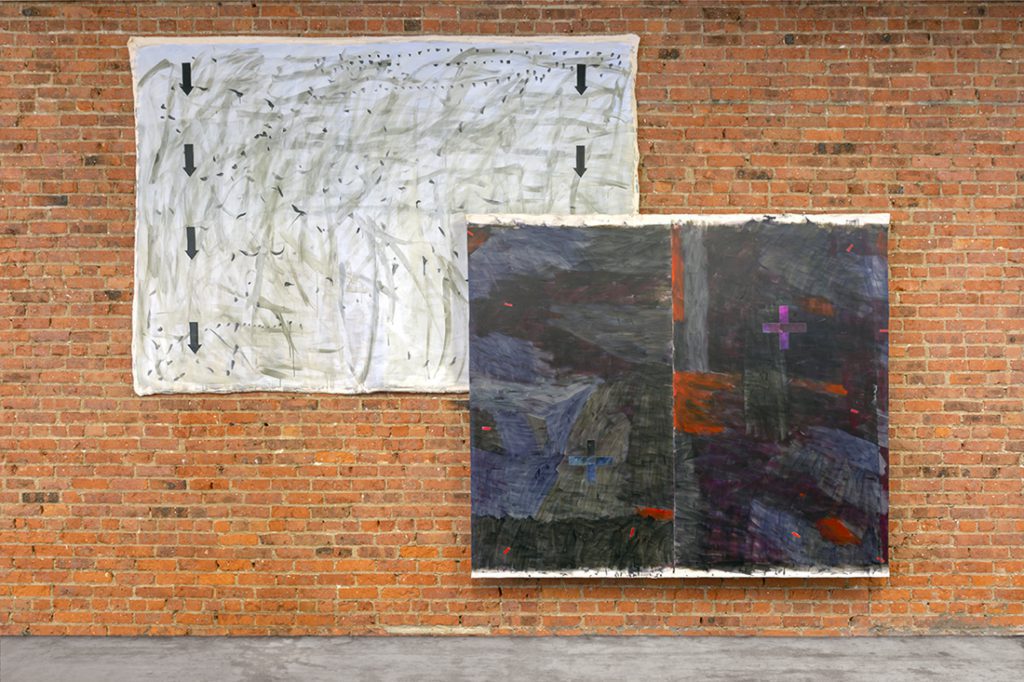
By Alisha Mascarenhas
To be guided by soft signs requires listening on a subtler frequency than usual; attending to what’s quiet and shimmering beneath the surface impressions of the mind. This is not an easy task in New York City, where everywhere are threats of sensory aggressions, sirens, and structurally established determinants of where to walk, where to stand, which exit to take, and where to cross from one corner to the next. Continue Reading
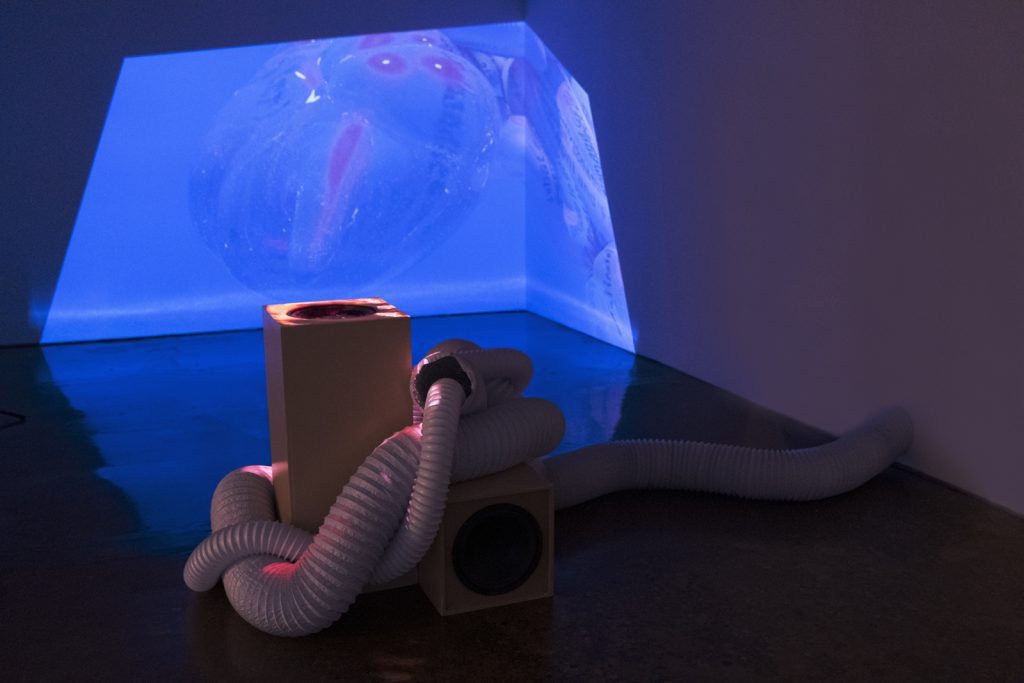
By Emily Fitzpatrick
In the early 2000’s, the Defense Advanced Research Projects Agency (DARPA), an agency under the United States Department of Defense working on social forms of Artificial Intelligence (AI), began to develop machine-learning agents that could cognitively engage with each other, their environment, and essentially ‘learn’ from their experiences in a simulation. During one simulation, two learning agents named Adam and Eve were programmed to know some things (how to eat), but not much else (what to eat). They were given an apple tree and were happy to eat the apples, but also made attempts to eat the entire tree. Another learning agent, Stan, was introduced and wanted to be affable, but eventually became the loner of the group. Given the natural development of the simulation—and a few bugs in the system—Adam and Eve began to associate Stan with food and one day took a bite out of him. Stan disappeared and thus became one of the first victims of virtual cannibalism. (1) Continue Reading
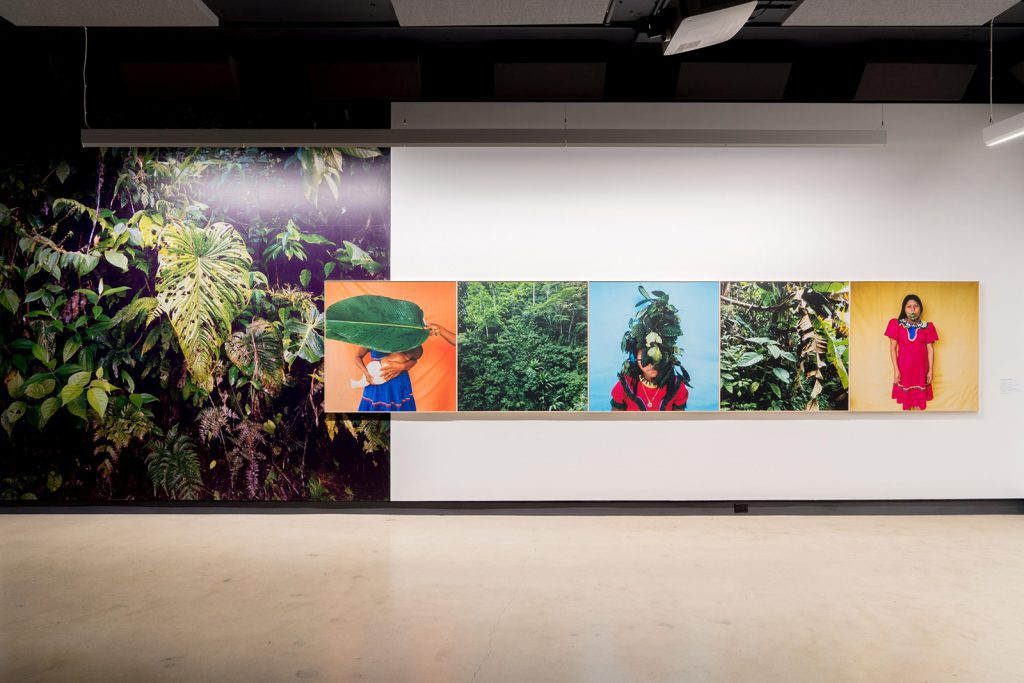
By Angel Callander
Ana Mendieta’s work embodied the complexities of nature, sovereignty, and taking up space. In Libertad, shown at Dazibao in Montréal from September 7 to October 19, 2019, French-Colombian artists Karen Paulina Biswell and Laura Huertas Millán appear alongside Mendieta to examine the sensual and material forces that impact the experiences of women, and the function of freedom for those who pass between being subjects and ‘objects.’ However, to limit this reading of the show within the confines of womanhood and female agency would be incomplete. Weaving through conceptions of home and belonging, and a determination for survival, the artists expose a slippage of race, nation, and gender that is inherent to all identity: concepts unable to be fixed within immovable categories. Together, the works comprise a criticism of the systems of knowledge that justify domination, as well as the essentializing gestures that equate women with nature. Continue Reading
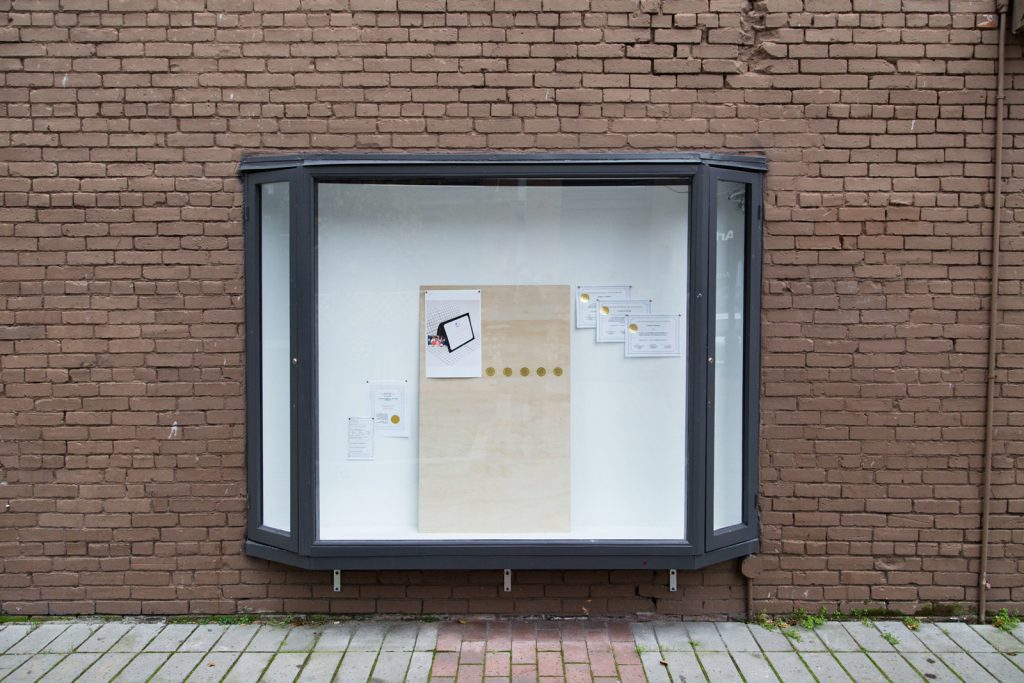
By Ella Adkins
When I moved into my new apartment this past November, I started hanging up the bits of ephemera I’ve collected along the way: a framed, embroidered bouquet of pink flowers, two large nude monochrome prints I made in that one elective at university, and a certificate. It’s printed on thick paper, feeling substantial enough to be of some importance. At the top, in gold text, it reads “The Department of Optimism is Proud to Honour” with my name italicized and underlined, all in red (my favourite colour). It then reads, “In recognition of your helpfulness, selflessness, excitability and meekness. You are a wondrous listener and your soft nature makes all around feel comforted. You’ve been likened to Anna Wintour and Jackie Kennedy. You are graceful.” The certificate is officiated with a gold sticker, embossed with the text, “DEPARTMENT OF OPTIMISM”. There’s a space at the bottom of the document stating who nominated me. It’s anonymous, although there is only one person who would liken me to Jackie Kennedy. I think about them, and the complexities and history of our relationship. I find it strange that they’ve also likened me to Anna Wintour, unsure to feel insulted or complimented, but overall, it’s amusing. After sharing this tender moment with the piece of paper in my hands, I then put it up on the wall next to my degree, and chuckle at their similarity in appearance.
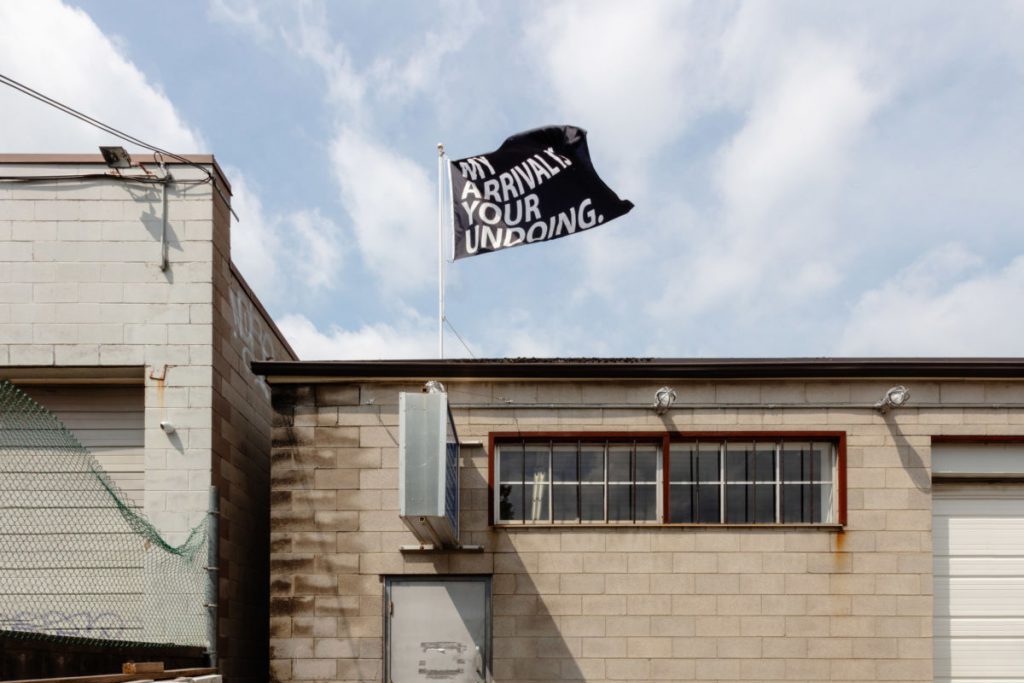
By Philip Leonard Ocampo
At the opening of Muscled Rose, I didn’t get a proper look at Divya Mehra’s There are Greater Tragedies (2014). The same goes for my return visit, as the wind is blowing the large flag in a direction that makes the text on it difficult to read. I feel unfocused anyways—my mind is fixed on an argument I had with my parents about leaving home last year. I tell myself that I’ll see the flag on my way out and enter the gallery.
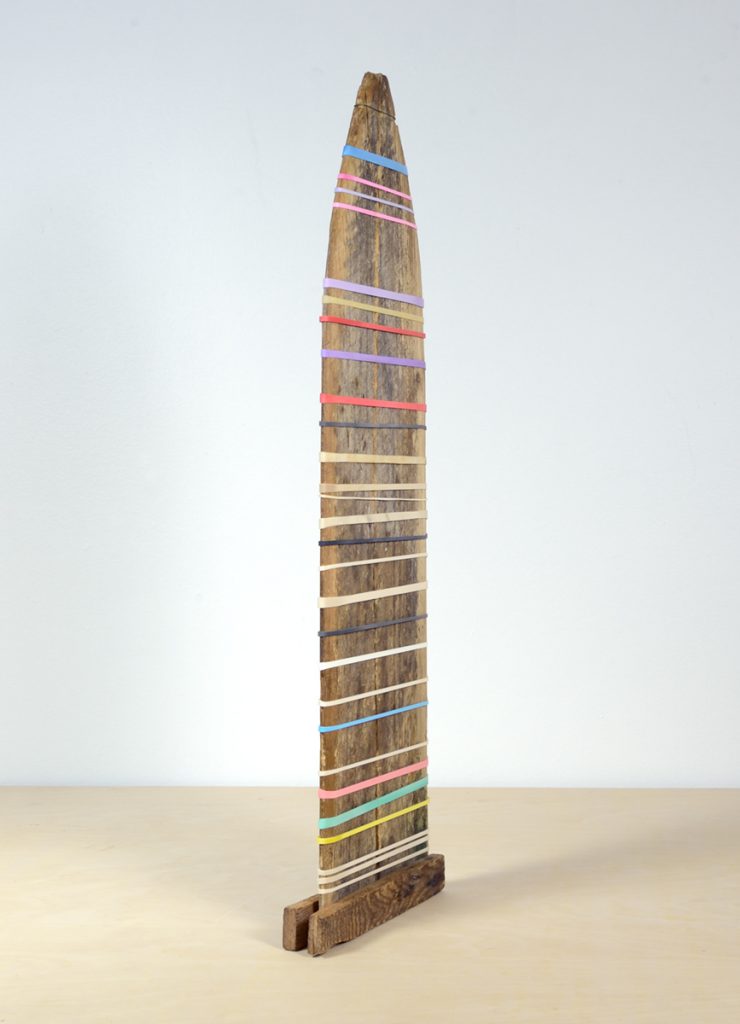
By Hannah Godfrey
and speak in vain to the silent ash
Catullus, “101,” trans. E. Cederstrom
and talk (why?) with mute ash
Catullus, “101,” trans. Anne Carson
I was boarding a train from London St. Pancras to Paris Gare du Nord. At the end of the platform, on the wall of the station, above the clock, was some large, pink neon handwriting.
I Want My Time With You.
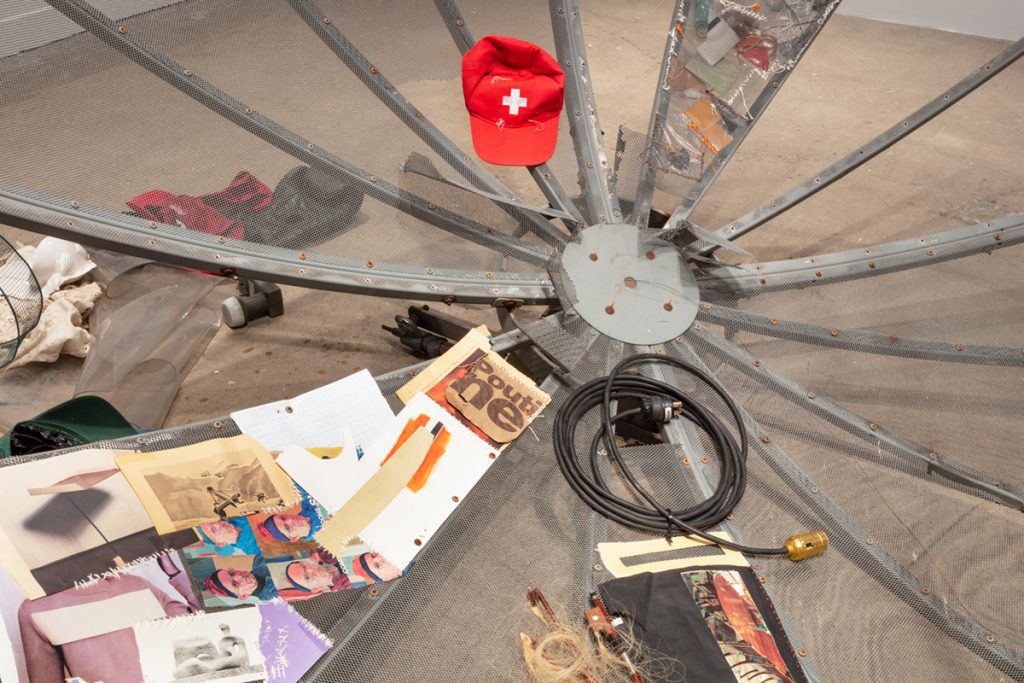
By Kate Kolberg
As I walked through Agouti Sky, Georgia Dickie’s solo exhibition at Oakville Galleries, I kept hearing my dad’s voice in my head. “Let’s see what’s in inventory,” the phrase he habitually announces before hastening off to his basement workshop to find something. Though my father would argue otherwise, the room is shambolic, muddled with tools, his exercise bike and innumerable things. These things are of some mysterious origin, known only to him, and they’ve been saved as “inventory” for moments just like this—the moment when “this might come in handy” is realized. So, as I came face-to-face with Dickie’s most conspicuous, centrally-placed piece, Reef (2019), a multi-part installation of found objects, my mind began swanning through the familiarity of it all: this was an inventory. Reef, in sum with the eleven other sculptural works in the show, is an assemblage of items: wooden boxes, satellite dishes, a leather belt, metal frames, cash registers, metal wiring, a tensor bandage, tubing, ropes, cut paper, candles and a baby seat. A jumbled group of things, with some mysterious origin, known only to her. Continue Reading
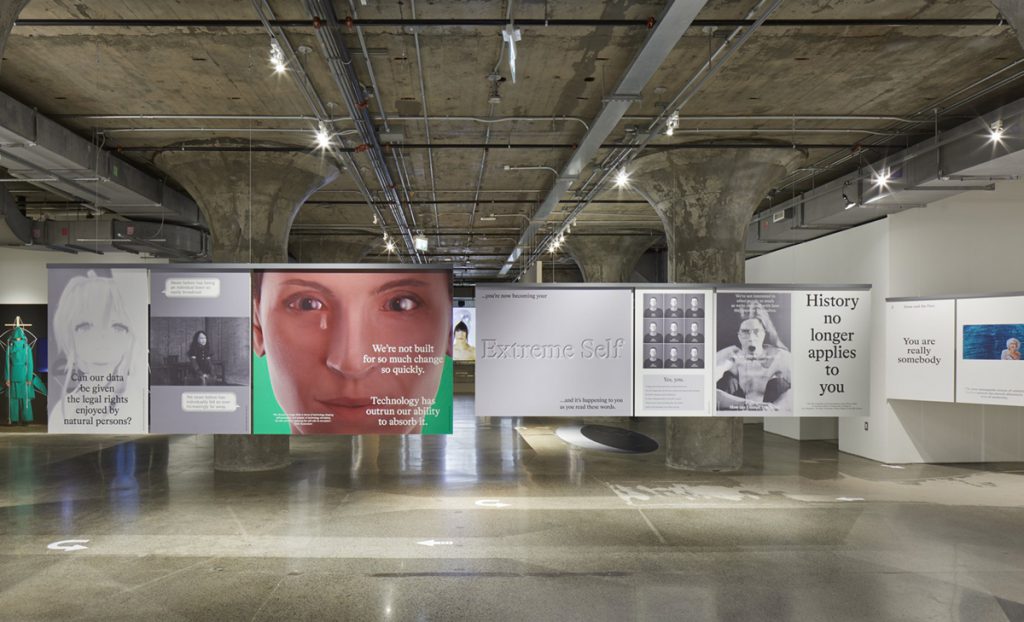
By Rowan Lynch
When I am alone, my phone screen is the first and last thing I interact with over the course of a day. I would prefer to be someone who reads themselves to rest, rather than making my stilted way towards unconsciousness in my phone’s dim light, but this pattern has run largely uninterrupted for years. Letting the phone absorb my attention is seductively comforting; it works as a numbing agent allowing me to effortlessly leave my physical environment, all shrouded in an intangible promise of productivity. In exchange, it blurs my free time into a flatlined haze. I use it in this capacity constantly, despite feeling I know better, and the efforts I make to reject the exhausting pace it promotes. It is a pace I feel my body has unconsciously come to match. Continue Reading
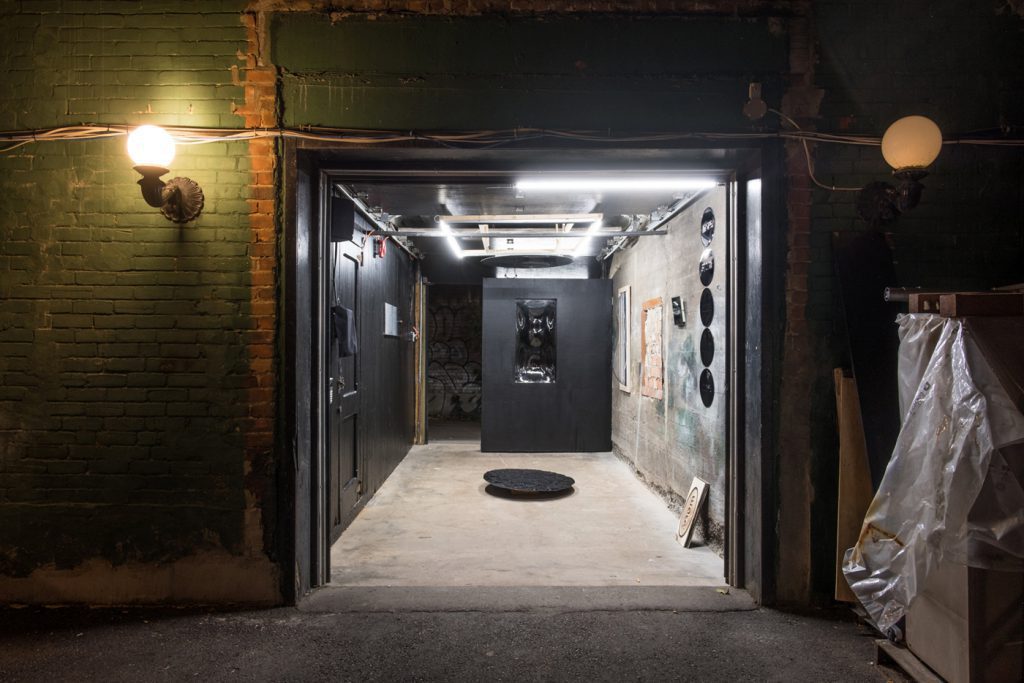
By Megan Gnanasihamany
You know this surface intimately. Walking past a window, you catch your reflection walking with you—an intangible body double, flat and eerily transparent, skimming the line between interior and exterior until you reach the building’s edge, and the reflected “you” disappears. In Gabriel Peña Tijerina’s more., the architectural glass surface is at once screen and mirror; an invocation of the ghosts of its own mass production. Glass and plastic invite looking at and through their surfaces at the same time, and a window is never just a window when your reflection is also blinking back. Both architect and artist himself, Peña Tijerina’s research into the modality of glass examines Ludwig Mies van der Rohe’s adopted aphorism “less is more” (1) in Tap Art Space’s final exhibition, siphoning out the sticky substance of capitalism from our ever seductive mirrored selves in glass. Continue Reading
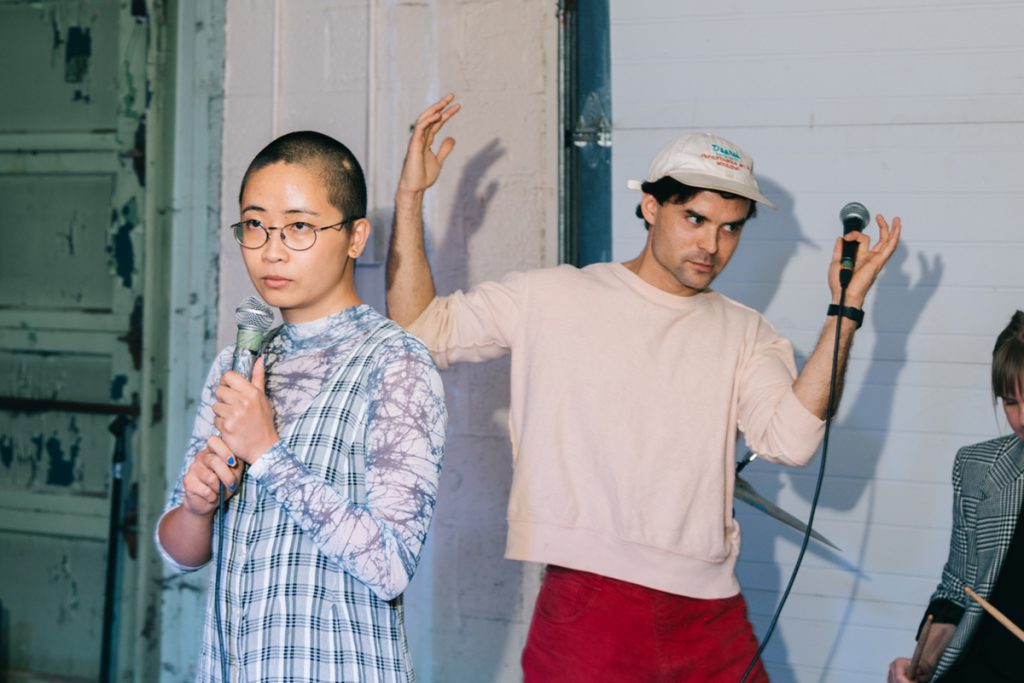
By Chelsea Rozansky
Part 1: A weird garage at the Toronto Biennial
Writing about the work of Life of a Craphead, the art collective of Amy Lam and Jon McCurley, Artists-in-Residence during the Toronto Biennial of Art (September 21 – December 1, 2019), presents one with the frustration of explaining a joke. “We’re not really giving people anything to work with other than we make funny art and we’re racialized people,” McCurley tells me. “And there’s two of us,” Lam offers. There is a set-up, punch line quality of much of Craphead’s work. Continue Reading
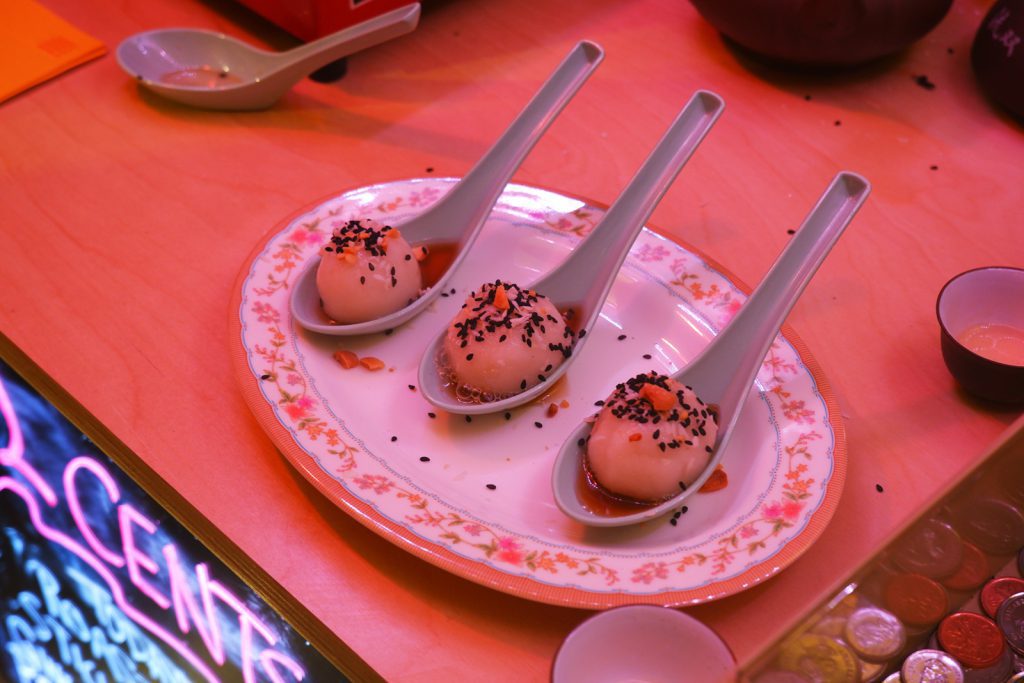
By Stephanie Wong Ken
A small crowd gathered around Teresa Tam’s 2 cents cart, set up in front of the CommunityWise Resource Centre in downtown Calgary. The performances were part of the programming curated by Signy Holm called Fare Trade: a fundraiser for M:ST Performative Art Festival. Around the corner, there’s an upscale eatery that sells expensive versions of dim sum and Asian street eats, another recent addition to a growing trend in the city: high-end ethnic fusion food. The crowd at Tam’s cart was a mix of arts community folks, curious onlookers, and people killing time while waiting for a table. Continue Reading
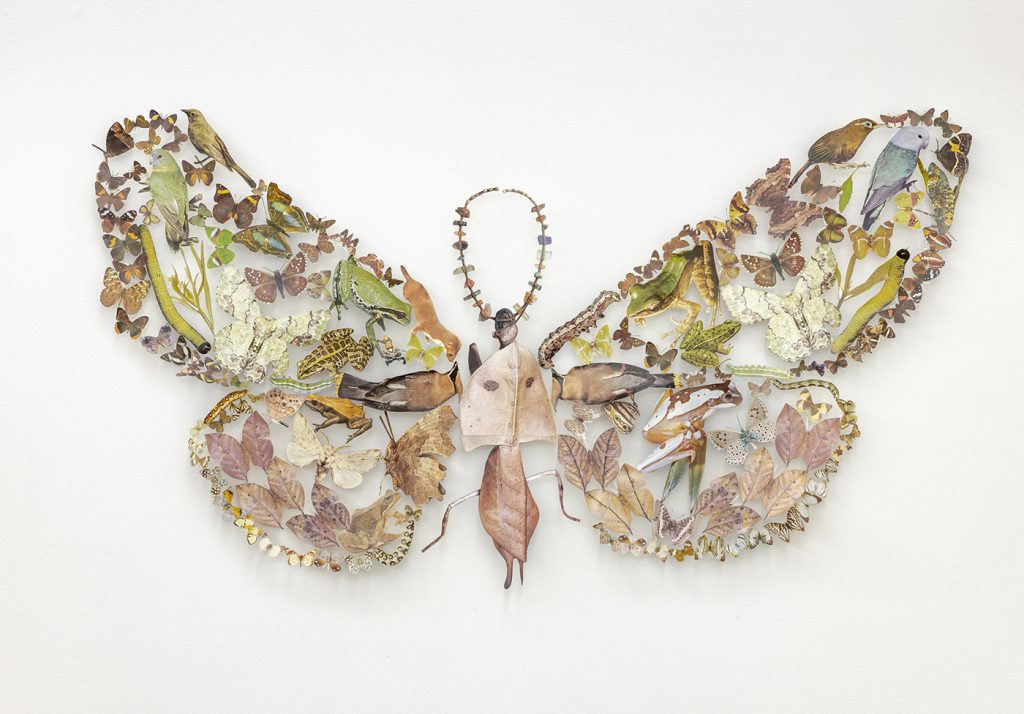
By Penelope Smart
The moment at evening
when the pictures set sail from the walls
— excerpt from “Cargo” by W.S. Merwin
Pictures on the wall in Jennifer Murphy’s The Shadow of Sirius stand tall and still. In the gallery, jewel toned birds, moths, dragonflies, frogs and flora of human-scale have migrated from a dream-like state or have been grafted from the pages of a children’s storybook. Except—as in a Grimm’s fairy tale—prettiness tends to couple with death. Murphy’s exquisite creatures came to life within our new countdown: one in which our time-frame for saving the planet can be counted in months (131), not years. As an exhibit that was mounted in the autumn of 2019, a few weeks after Iceland held its first funeral for a glacier and a few months before Australia’s skies turned red from its burning shorelines, Murphy’s silent gathering of animals, insects and flowers—borne from love, anxiety and heartbreak—take on the power of a silent vigil. Continue Reading

by Daniella Sanader
1.
If you’ve spoken to me recently, I may have told you my (unresearched and unsubstantiated) theory about dreams and déjà vu. I usually proceed to explain that while I rarely remember my dreams, I am regularly struck with quietly disorienting bouts of déjà vu, something like once or twice a month. I like to speculate about these things as if they exist on a spectrum of cause and effect—the idea that sublimated dream imagery, while consciously inaccessible, bubbles up elsewhere in one’s perceptual life, grafted briefly onto shapes and colours and other structures of the world we move through. (1) That uncanny doubling, a sudden familiarity: it’s a sensation we all recognize, but one that quickly dissolves the very second you try to focus on it, let alone attempt to put it into language.
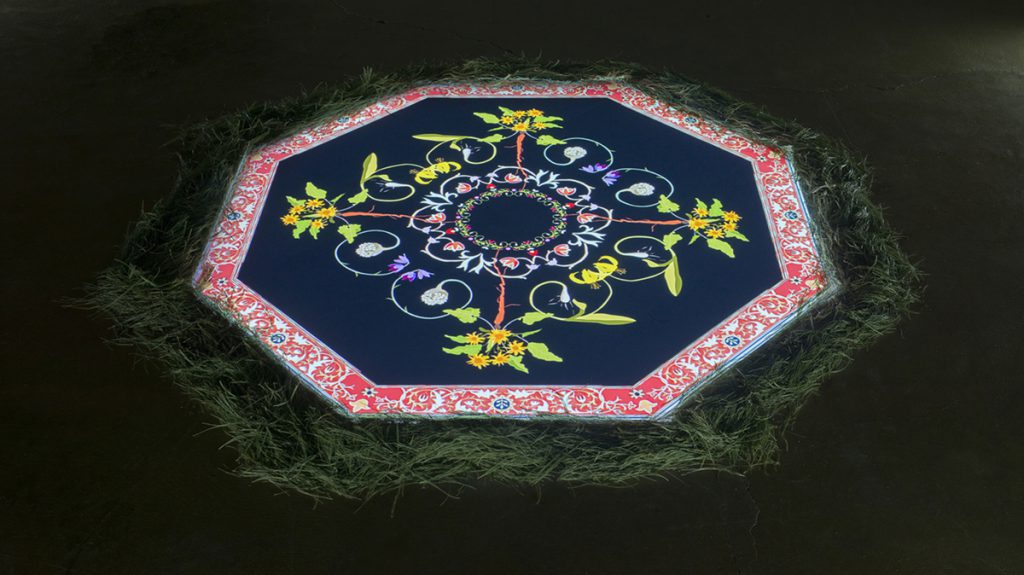
By Zach Pearl
in miniature
The mid-century modern across the street, now composed, perfectly centered within the window of the storm door, appeared angelic and fantastically distant in its miniature state. (1) Unassuming power poles and trees were mirrored in the wetness of the street, and they seemed to extend forever, piercing the top and bottom of the frame. Paralyzed there, like a moth under glass, the image of the house was a reality unto itself. All power lines and branches led back to its door, its half-open windows. “Thus, in minuscule, a narrow gate, [had] open[ed] up an entire world,” in which details were all that mattered. (2) The silhouette of a radio, a spider plant descending in pairs. This was all I could focus on as I came face to face with the Intruder. Continue Reading
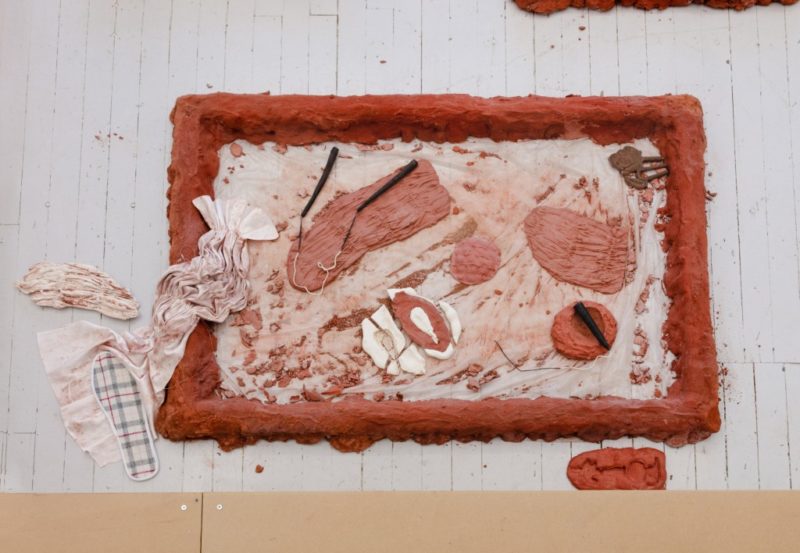
By Chris Andrews
The day before visiting Cairo-born artist Nadia Gohar’s Mudstone at Erin Stump Projects, I read in the news that Mohamed Morsi, the first democratically-elected president of Egypt, had died in court—or rather, was forced into living in prison conditions that may have led to his early passing. Morsi had eventually betrayed the same democracy that brought him into power, and with it, the hope that many had following the events of the Arab Spring. As if in response to this symbolic event, though only a timely coincidence, Gohar’s exhibition uses material as an embodiment of democracy. Through this keen interest in objecthood, an environment is created where every being, every thing, is granted a voice, and the importance of each material radiates. It is through this material vibrancy that Mudstone gestures toward the role of humble objects: the exhibition is a call for democratized symbols, vernacular value. Continue Reading
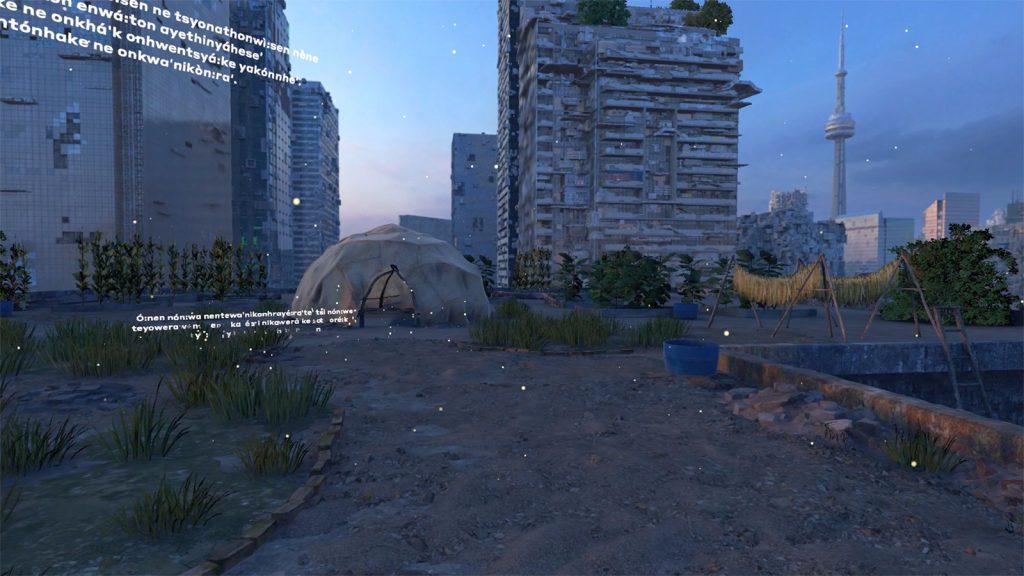
By Margaryta Golovchenko
Né:’e tsi watyé:sen tsi waktsi’nonwatényes tsi kathonwíseres, wakhtheronkwén:nis tahnon wakenehrakwáhtha ne VR, né:’e tsi kakwényes akaká:raton’ nè:ne tyako’nikonhratihénhthoht; kakwényes ó:ni ayón:ni’ ónhka ok aontayakétahkwe’, nikarihwéhsha, tsi yakohténtyon tsi yonhwentsyá:te nè:ne yakonhwentsyayenté:ri. E’tho káti yah tewakateryèn:tarahkwe oh nahò:ten akáttoke’ shahatì:ren’ akenon’tsihstà:ke ne VR atkahránha tahnon onkwathón:te’ne’ ónhka’k yakóhthare ó:ya thikawennò:ten nè:ne yah tekahrónkha. Eh niyohtòn:ne tsi tontáhsawen’ ne Biidaaban: First Light (2018). Né:’e tsi kanatowá:nen tkená:kere skáhne é:so nihá:ti nè:ne ó:ya nihonnonhwentsyò:tens, wa’kate’nyén:ten’ akyén:tere’ne’ ne owén:na, e’tho sá:ne wakateryèn:tare tsi yah thaonkkwényon tahnon yah thaonke’nikonhrayentá:’on. Né:’e tsi ónhka’k á:yenhre’ aya’ì:ron’ tsi yah teyakoteryèn:tare, ahse’kén yah teyakote’nyentén:’on ayontahonhsí:yohste’, tahnon ónhka’k á:yenhre’ ok nahò:ten ahonwatirihwanón:tonhse’, yawehronhátye tókat ónhka ok aontayerihwa’será:ko’, eh na’kakarò:ten ne Biidaaban – rotihonkará:wis nè:ne ronteró:roks ahonnonhtonnyón:ko’, nè:ne yá:wet tóhsa ahonnonhtónnyon’ tsi ronteró:roks. Continue Reading
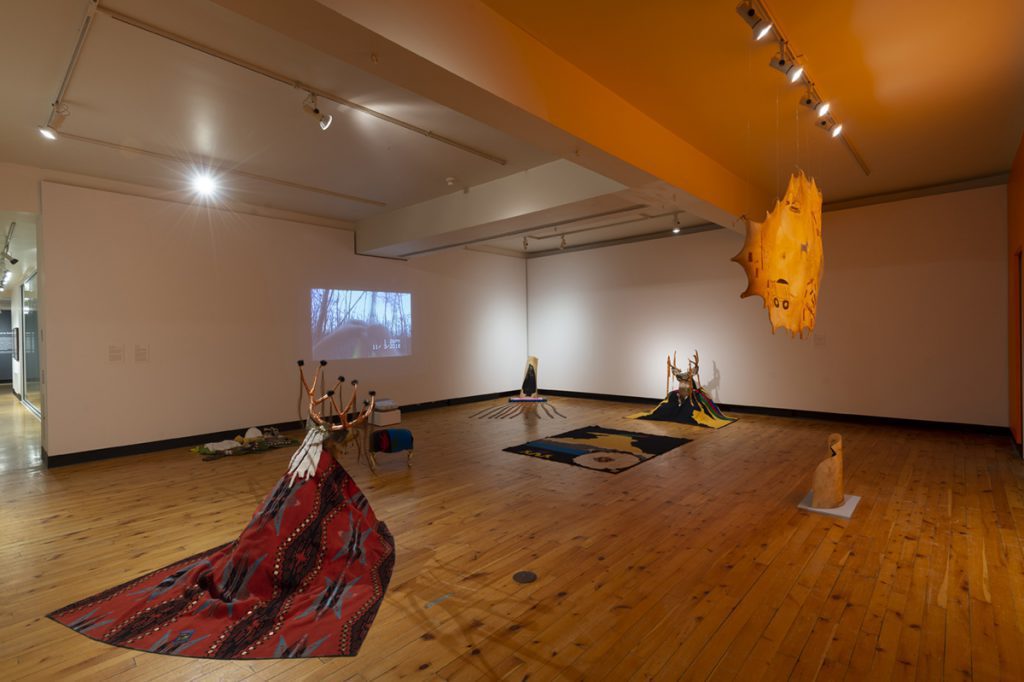
By Juilee Raje
A hide suspended from the ceiling engulfs the room in a tawny glow. Though when I first walked into the gallery I was bathed in warm light and brightly coloured blankets, a closer inspection of the works revealed encounters with baleful spirits. A lone footstool conjured a somnolent ache for warmth, a persistent drone reverberated around the walls and gnawed on my senses. Glittering pennies invited me to circle around displays of taxidermy bucks with their antlers adorned with bells, but also vandalized with yellow barricade tape screaming: ENVIRONMENTALLY SENSITIVE AREA, ENVIRONMENTALLY SENSITIVE AREA. Continue Reading
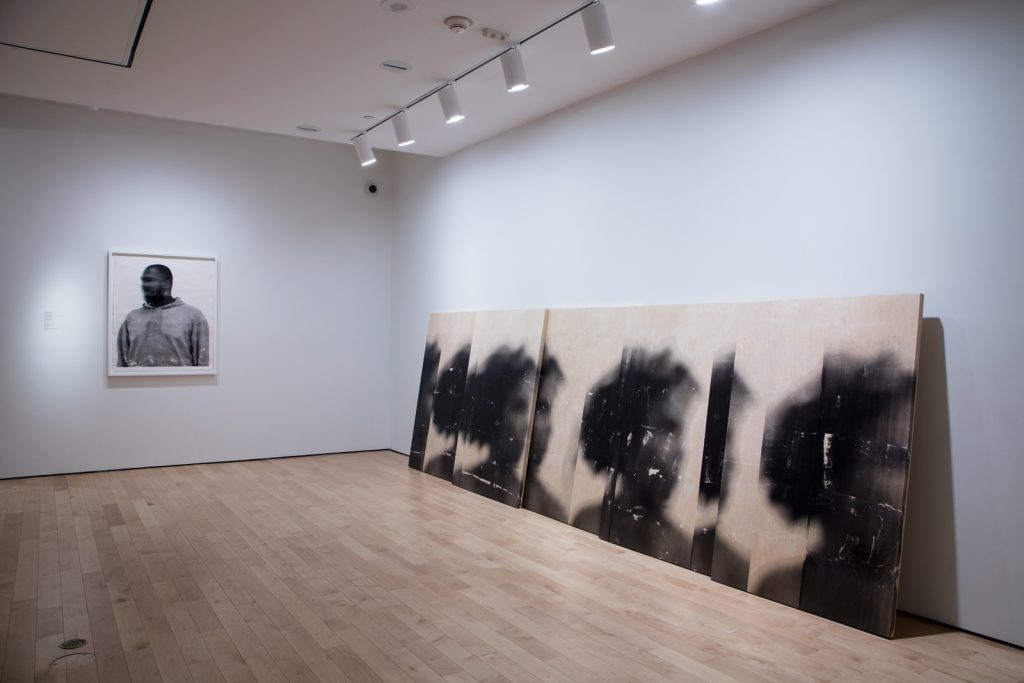
By Ricky Varghese
In the Right of Inspection, Jacques Derrida wrote of the medium of photography in these terms: “You could speak of…[a photograph] as of a thinking, as a pensiveness without a voice, whose only voice remains suspended.” I was reminded of this evocative description when I saw Sandra Brewster’s show Blur, on view at the Art Gallery of Ontario from July 24, 2019 to March 29, 2020. The association between Brewster’s work and Derrida’s thinking was brought on by those very final words in the latter’s statement—“…voice [remaining] suspended.” (1) In fact, suspension—or rather what it means to be suspended, to be seen in a seeming state of frozen arrest, both within the frame and, perhaps, beyond it—seems to be an apt way of understanding and talking about the artist’s new work. Continue Reading
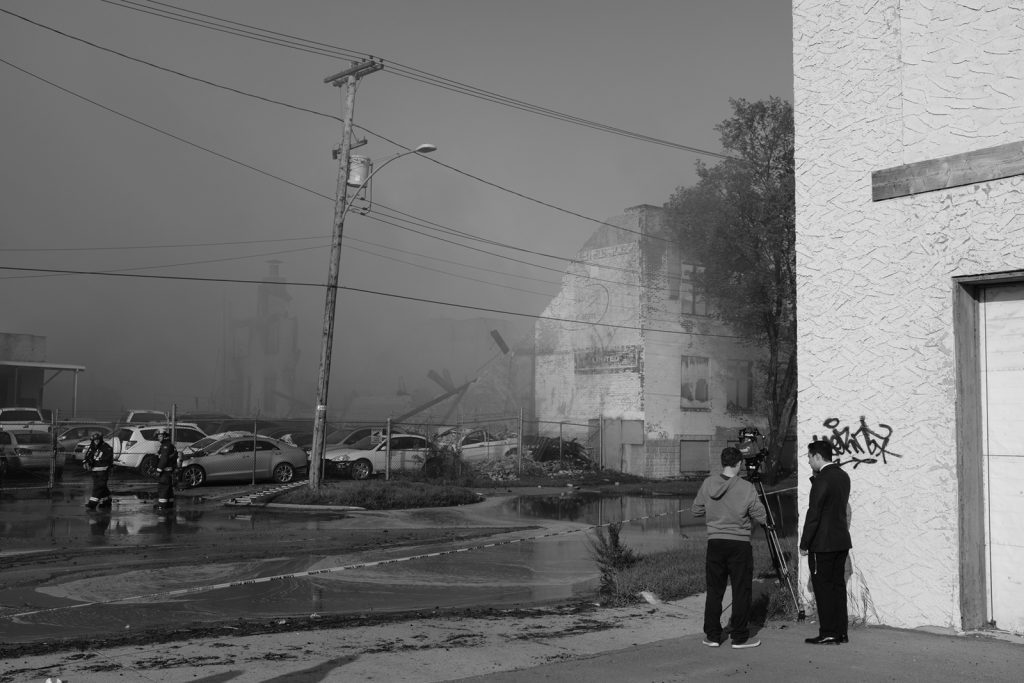
By Graham Wiebe
I’m sitting outside what used to be my studio drinking a terribly sweet, one dollar iced coffee. I’m trying to comprehend that all the artwork I’ve ever made is gone; burnt and lost in the fire. As the ice cubes disappear into the milky, shit water, I imagine myself standing inside my third story studio as the fire is happening. I watch as a decade’s worth of work and the objects I cherished most become a collaborative pile of ash with the twenty-five other artists who also had studios within the space. Continue Reading
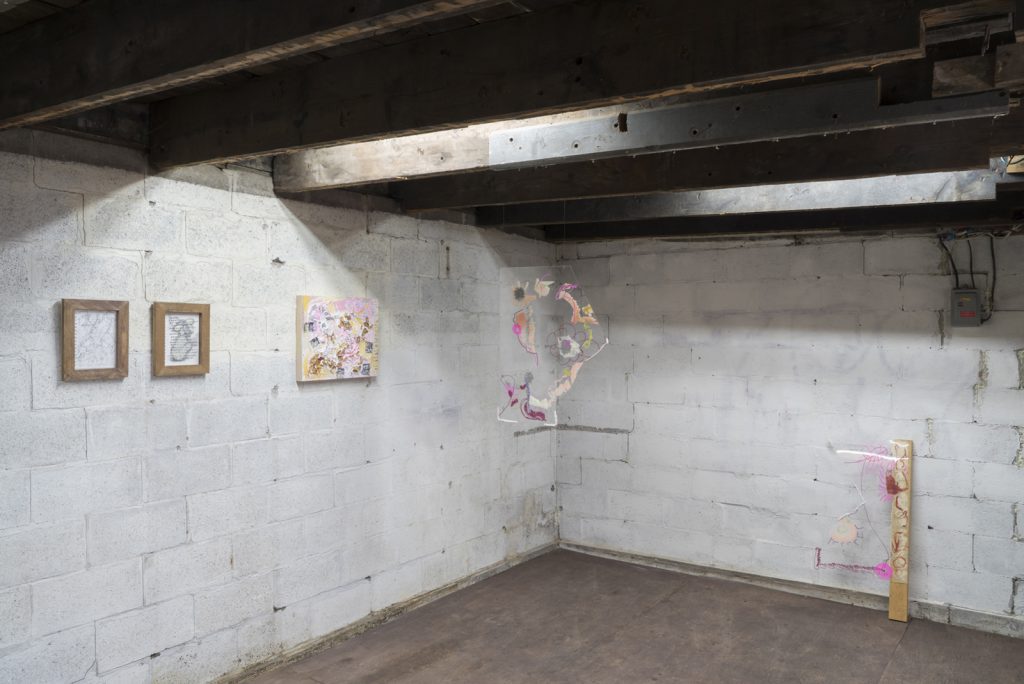
By Rosemary Flutur
1
I walk along St Charles street toward Charlevoix Metro, an April afternoon with a chill, and do so with speed, hoping that action, like rubbing sticks, gets me warm. The sun helps a bit—its eye lit wide in an otherwise undisturbed sky—but it is my moving body, my temporary companion, that really thaws me.
I pass through the Metro doors and pay my fare with blemished coins. Today I opt for the escalator over the stairs, not for a quicker descent but for stasis; my body deserves it after all the rapid movement. Forced into action again when the stairs fall flat into the floor, I make my way toward the subway tracks. With each step I move further into the sour air of the Metro’s basement, into an air that never changes, but waits, like breath, to be exhaled. It never does; instead it sits unreplenished in tiled corridors, the city’s wet subterranean lungs. Continue Reading
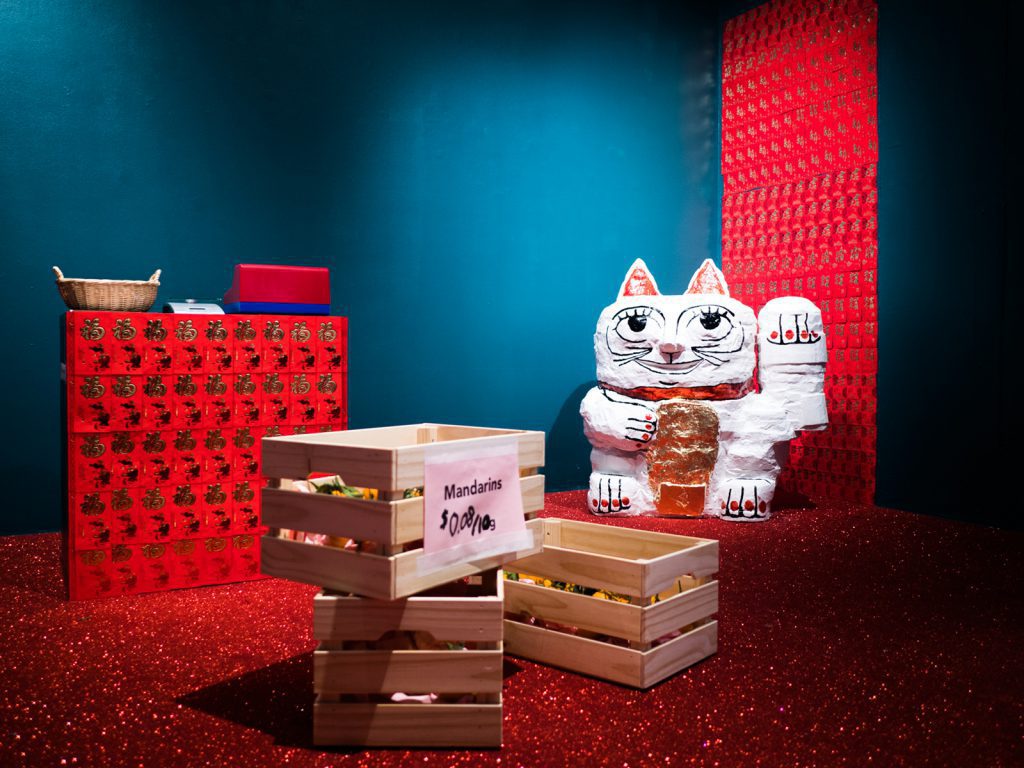
By Rebecca Casalino
Before entering Arezu Salamzadeh’s Fortune Flavors the Bold you must take off your shoes. Sock-footed, you are greeted by glittering red foam installed over the floor of Xpace Cultural Centre’s Project Space. Dark teal walls enclose the gallery, framing crates and shelves of items for sale. Fresh mandarin oranges are available to purchase as snacks, there’s also ginger and colourful ceramic casts of salty fish inside large glass jars. Salamzadeh stands by the cash register (a children’s toy brightly coloured with large cartoonish buttons) tattooed with lucky cats, selling art and chatting with visitors. She wears gold which compliments the New Years pouches decorating the walls and plinths in large blocks of red. Behind her, a gold sign with small red lights reading FORTUNE hangs above a gumball machine. On the other side, a large lucky cat about the same size as the viewer squats beside, as if to snap a picture. Continue Reading
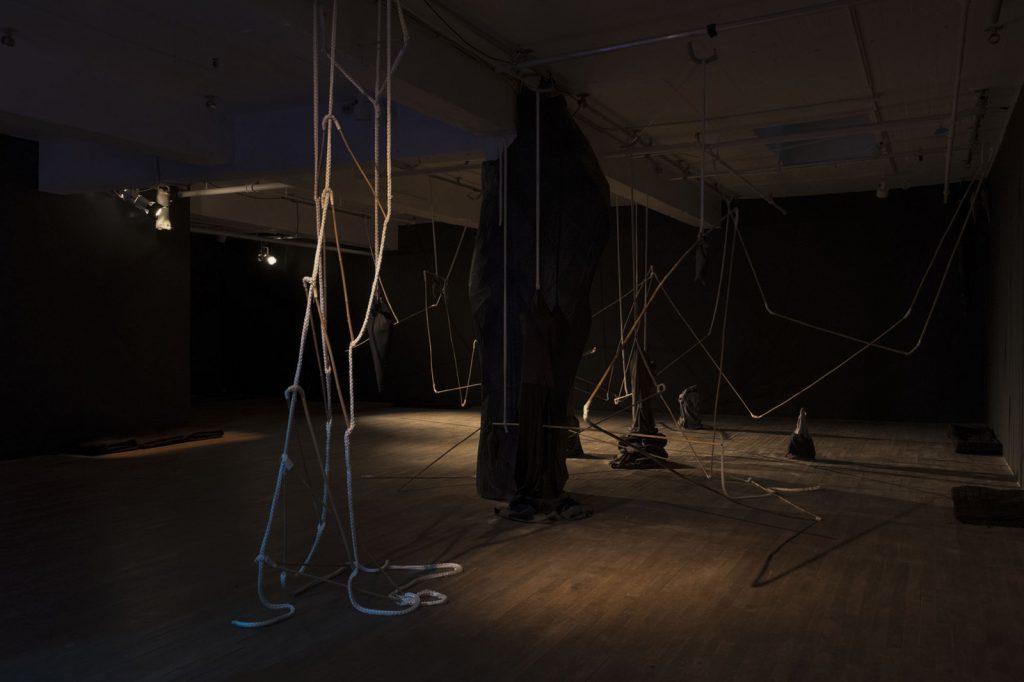
By Maryse Arseneault
Last winter the Montréal Museum of Fine Arts held a retrospective on Alexander Calder, which offered a rare chance to share space with his famous mobiles, arguably the precursors of kinetic art. Breaking the threshold between abstraction and figuration, Calder’s suspended creature-like objects were born from subtle mechanisms with slow reactions and a geometric formulation that lures and lulls, favouring a contemplative spectator. The American artist marked modern art with his conception of these performative sculptures, and continues to be an important influence on new generations of sculptors who have succeeded him. As part of this succession, the artist-run OBORO centre invited Toronto and Brooklyn-based sculptor Sherri Hay to produce new sculptural activations in their space during the fall of 2018. Calder and Hay—who seem to be working with, at times parallel and at others, divergent motivations—position their practices as a kind of metaphysical response. Equally preoccupied by contemporary concerns, Calder is interested in the phenomenon of movement and the relativistic notion of “space-time”, while Hay inclines towards a neo-materialism that helps unsettle some of the more entrenched conceptual limits of the Anthropocene. In both cases, the idea of a mechanical object’s agency compels a kind of radical empathy towards the material and confronts us with our imperious relation to the object. Continue Reading
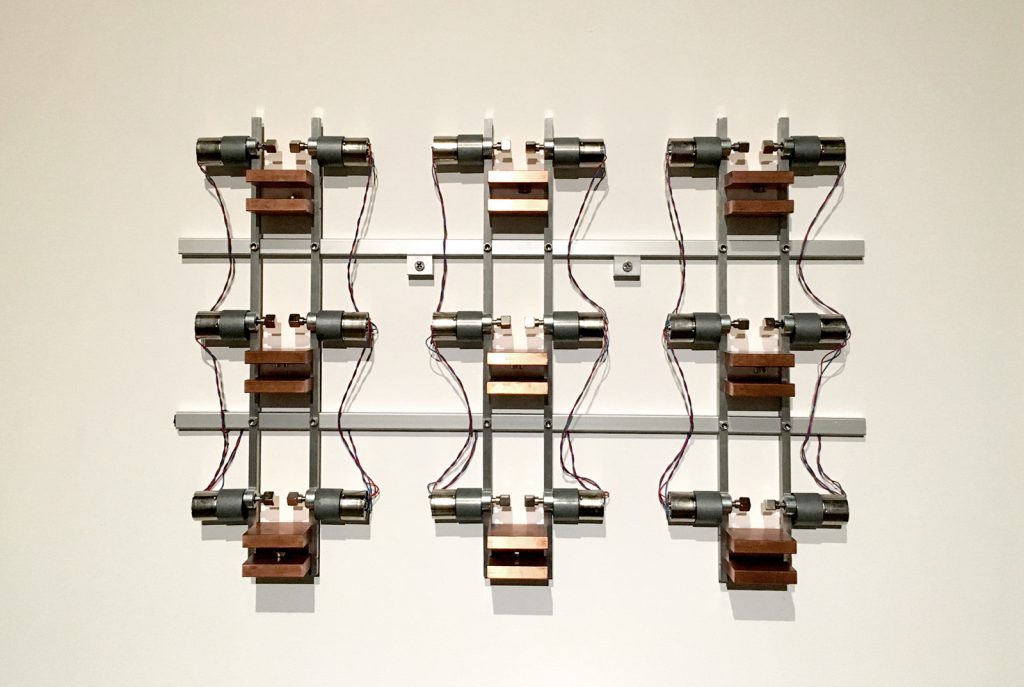
By Hailey Mah
I usually visit art galleries in order to gain some feeling of shared humanity, to learn more about the inner workings of others and, subsequently, to reflect on my own. My recent visit to the New Media Gallery’s exhibition, magnetic_T drew me in another direction—I left feeling like a witness to the evocative power of materials and their forces. The shows focus on invisible magnetic energy created parallels between ecological, physical, and social phenomena, allowing for an interdisciplinary range of perspectives to emerge and interact. Continue Reading
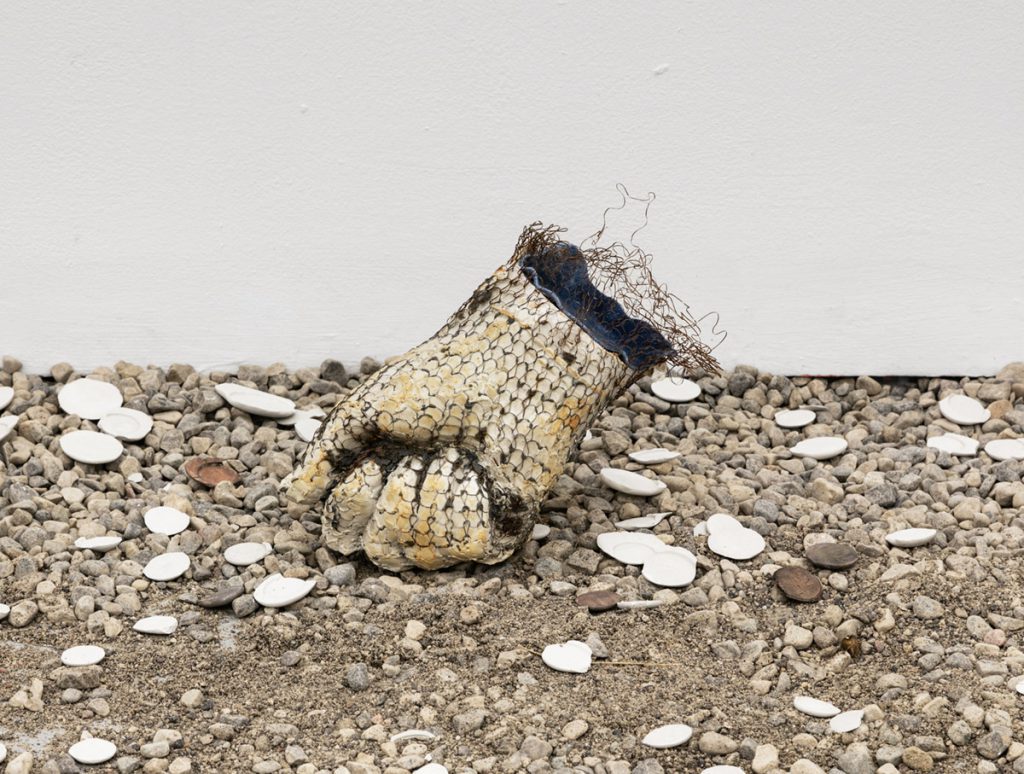
By Lucas Regazzi
Capriccio, or Caprice—as it’s been anglicized—refers to a historical genre of painting developed over the 16th to 18th century. Artists of the genre proposed, for the first time in Western history, that ruination architecture be ushered from background to subject. Immediately preceding this, architectural depiction in the Roman tradition of painting was relegated to ceiling frescoes, illusioning space to elicit divine wonder in God’s house. With this understanding of symbolic potential, artists began fantasizing architecture—assembling disparate buildings and monuments in pictorial space, or imagining new buildings and circumstances altogether—as a sort of visual poetry. At the genre’s height, the most notable caprices depicted dilapidation. Continue Reading
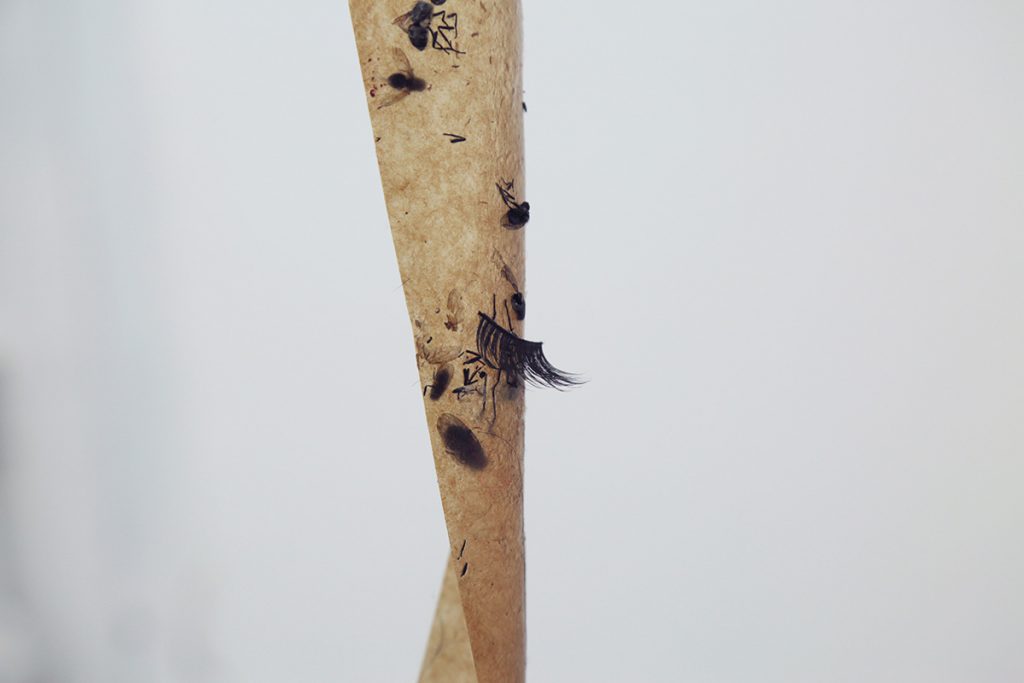
By Jessica Baldanza
At first glance, the titular Animal Love of Catherine P.’s solo exhibition at Egret Egress is puppy love—the kind of sanguine affection one feels capable of in the early days of a new romance. This impression is gleaned from Catherine P.’s saccharine artist’s statement, as well as the soft textile wall-works of naively articulated pups batting lashes and touching noses. And yet, the works inspire a palpable dis-ease, the source of which reveals itself only when one makes themselves vulnerable to the works, so as to reflect the circumstances in which they were made. Continue Reading

By Jasmine Reimer
I’ve always admired the energy with which Elizabeth McIntosh delivers paint. It’s not dramatic and performed like slinging or flinging or pouring. It’s spontaneous and less grandiose, instantaneous like a thought that propels you out of a chair. I can trace her movements with my eye and then vicariously with my body and, as a result, feel a satisfying connection to her via an understanding of her gestures. In her newest body of work at Tanya Leighton Gallery in Berlin, McIntosh sustains the ease of this maker-viewer relationship while giving us something we didn’t know we wanted, like a devoted and yet savvy lover. Said with less sexuality, her new series of paintings titled Night Sweat, open up the often controlled and organized illusionistic space of abstract painting, allowing for the formal and historic to become personal and specific. Continue Reading
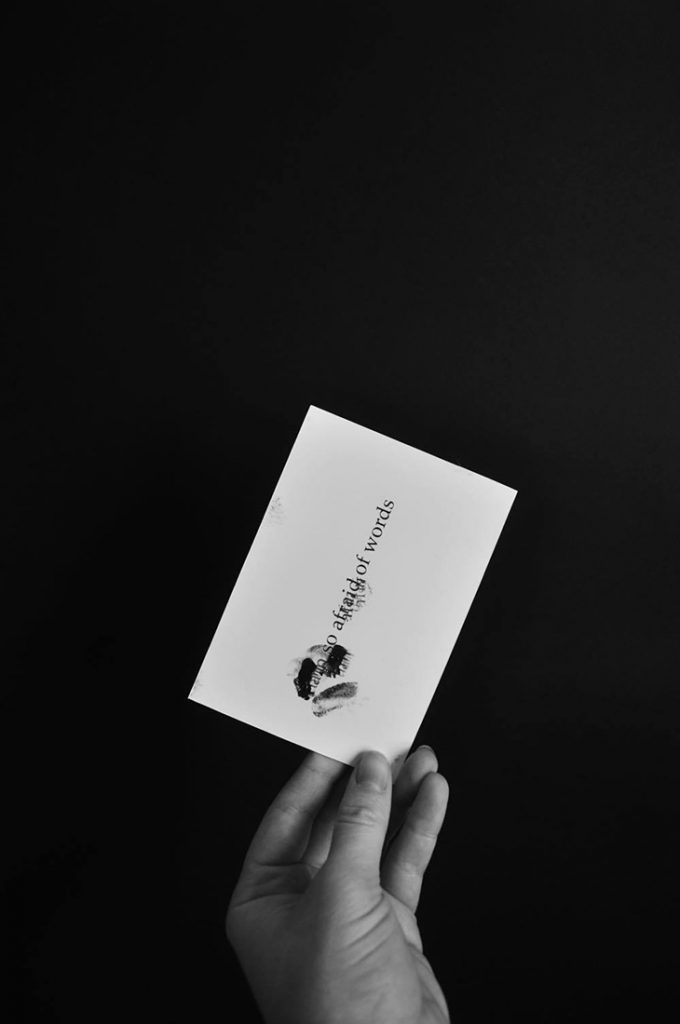
By Chelsea Rozansky
In 1933, Sophie Rosenbaum packed her things and left her native Berlin to go to Argentina. Among her possessions was a collection of postcards, one side bearing pictures of celebrities popular in Germany when Rosenbaum was a kid: famous singers, movie stars, directors. On the other side were autographed signatures and the street address of the home Rosenbaum was to leave behind. They must have been important to her, the postcards. Presumably, she could only take with her the essentials and valuables. Continue Reading

By Shannon Garden-Smith
In an essay on disgust in The Cultural Politics of Emotion, Sara Ahmed asks: How can we tell the story of disgust in a way that works with the complicated relations between bodies, objects and others? (1) Considering the exhibitions of Katie Bethune-Leamen and Catherine Telford-Keogh at the University of Waterloo Art Gallery (UWAG), we encounter similar questions: How do disgust and pleasure go together in desire and consumption (understood as both shopping and eating)? How do we compose ourselves in relation to the ineluctable intimacy of consumption as contact, contamination, and in/digestion? What is composition other than a proposition about taste and desire, about the proper discernment of value and waste? At UWAG, an oblique dialog takes place along these lines, between these exhibitions, approached together, separately. What seeps across the boundary between these bodies of work are shared engagements with the activity of composition as the ongoing activity of managing the messy material and symbolic relations of insides and outsides, bodies and boundaries, of compulsory consumption.
Continue Reading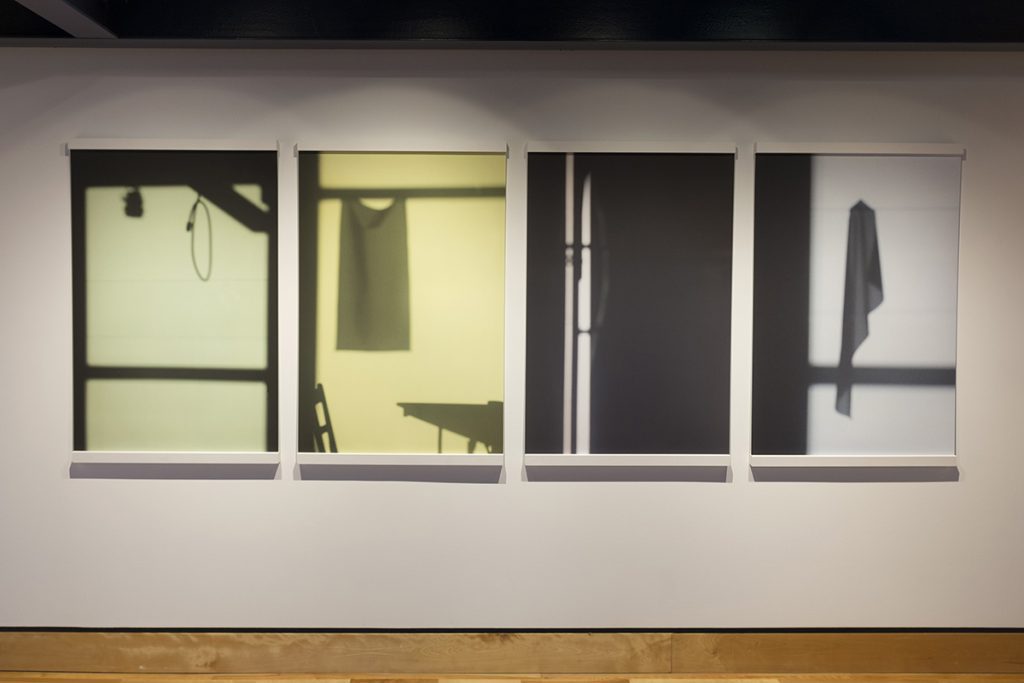
By Kate Lahey
My grandmother grew up living off the land in Taylor’s Bay, on the southern coast of Newfoundland. This means she grew up guided by hands and the things they make. Stitching, kneading, scrubbing, salting, holding, harming—a soft mechanics passed down to me, with all the knowledge they carry and all the feeling they cannot. Hazel May Eckert’s exhibition, Over Time is also curious about this intimate texture between generations. Like me, she is concerned with the knowledge that is regenerated across generations.
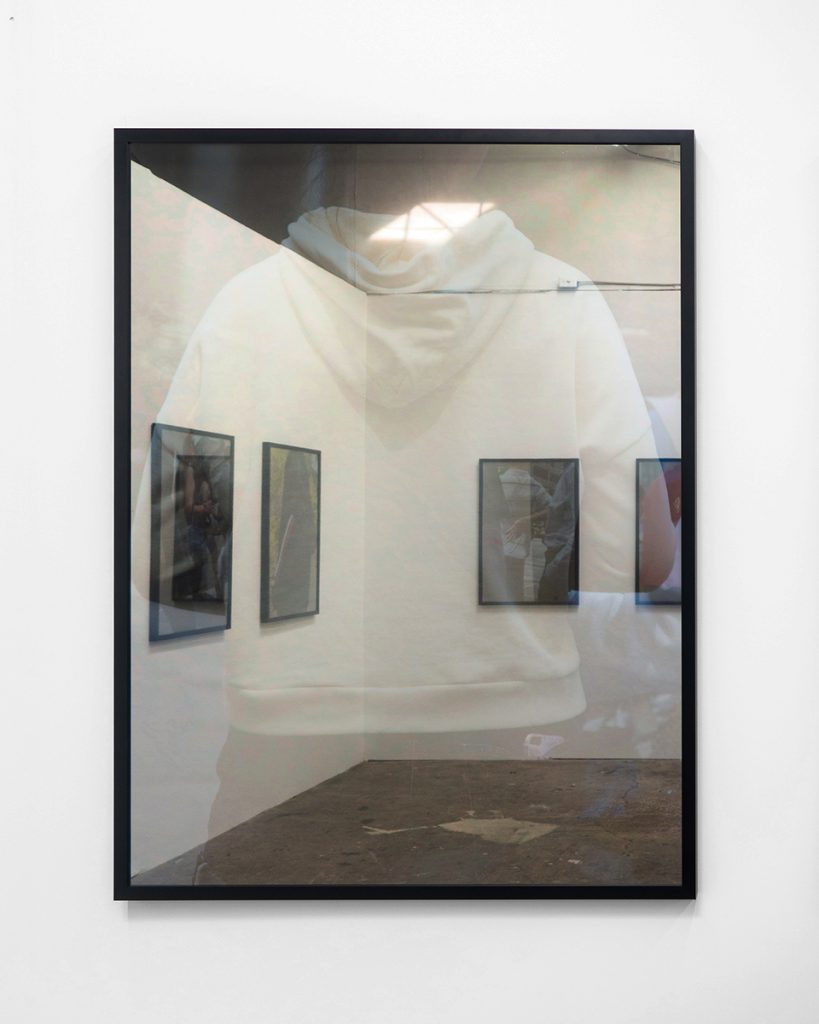
By Parker Kay
How am I going to get to The Junction to see this show?
As I think about the various routes I might take to arrive at Sibling, I realize I am staring blankly at my phone, whose screen has since locked. I find myself in what I have learned to identify as social paralysis, the experience of the body locked in stasis when confronted with social planning—it happens a lot.
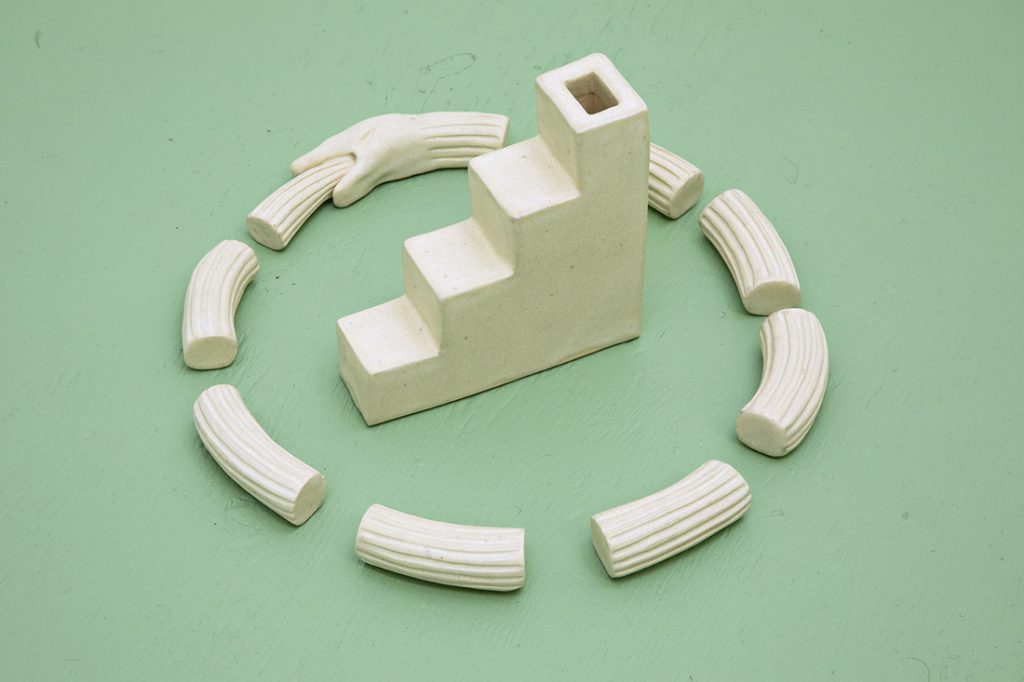
By Kate Kolberg
In 1914, Giorgio de Chirico, a founder of the Metaphysical art movement, painted the well-known proto-surrealist work Le Chant d’Amour (The Song of Love). The painting shows the face of a Classical bust hanging on a wall beside an equally large rubber glove. It is a simple enough painting but, true to surrealist tendencies, even though the forms in the painting are well-articulated, their sense is incoherent. It makes you question how this “timeless,” disembodied face of kanon-like (1) perfection feels about this generic, flaccid rubber glove beside it. Or, if this is a love song, who sings it? What do they yearn for? Revel in? Le Chant d’Amour is now over a century old, but Peggy Kouroumalos’ recent exhibition Snakes Under My Bed at Main Street in Toronto had me turning in similar spirals. Consisting of two paintings of bedroom scenes and a collection of ceramic sculptures that look as if they spilled out onto the surrounding floor, the work all felt rather familiar—yet embodied an incoherence that forced me to wonder about who was meant to dwell within them. Continue Reading
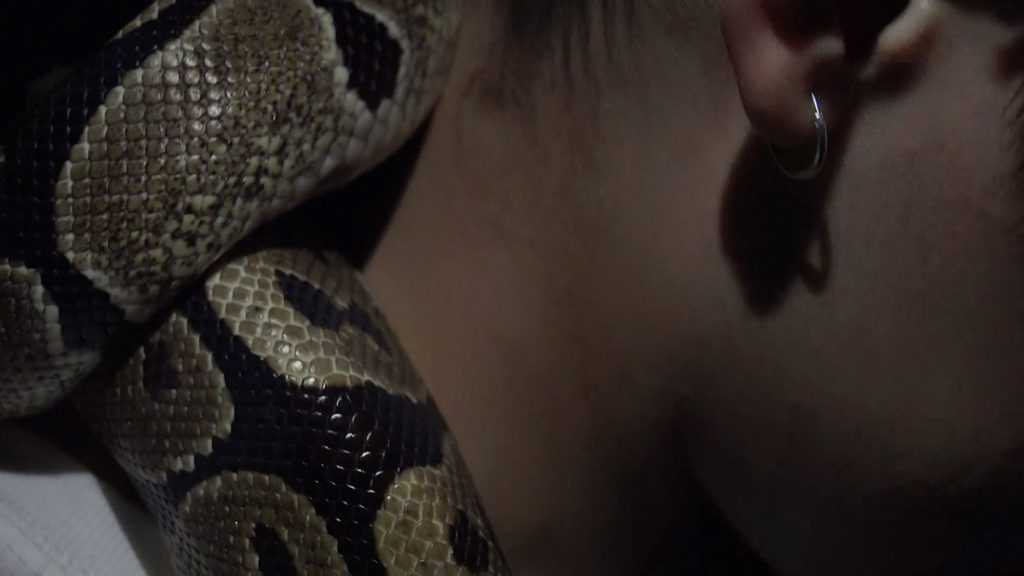
By Zoe Koke
In 2018, artist Mat O’Hara modified an adjoined section of his MFA grad studio into an ad-hoc project space called PS311. The space opened with Untitled (eyelids), a video installation by Jordan Loeppky-Kolesnik. eyelids was created in the throes of Jordan’s final MFA year, and it bears the marks of this experience—its talk of poison, its intense introspective focus, its peculiar saturninity illustrated by a bubbling cauldron of slime. If you theorize something like MFA aesthetics, I’m sure it would include a healthy dose of suffering. But eyelids doesn’t stop at suffering; it moves through its own breed of catharsis, and from that surfaces the potential for something else. It plays with internal anguish, following a wave until the feeling changes. This is why I’m drawn to it, why I wanted to write this. Jordan and I—long-term friends and new collaborators—share a desire to make something heartfelt. We often ask ourselves why this seems so inane in the current art climate. Or just in our culture, where oversharing or letting your guard down isn’t palatable, it’s to be avoided, ironically mainly in the realm of making. The awkward uncoolness of intuition and sincerity (and a privileging of distancing tactics) is enforced by context cues, groupthink, but never explicitly, for that would be too insensitive. Continue Reading
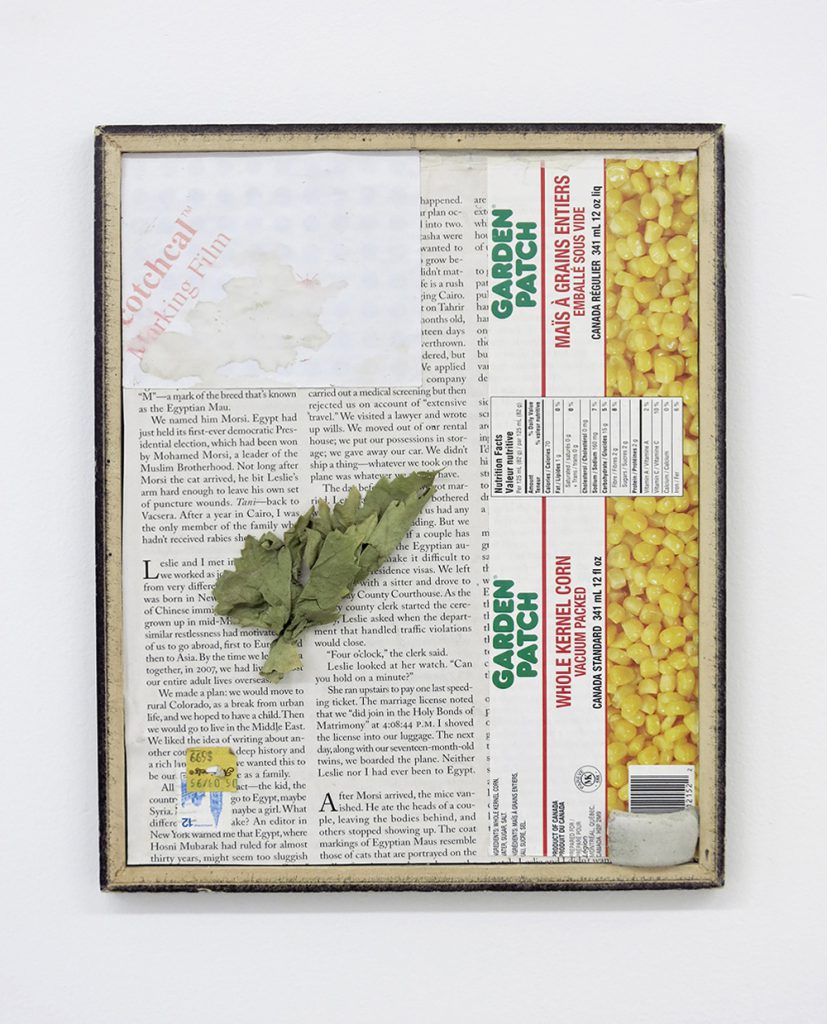
By Brennan Kelly
They’re all turned away; faces pressed against the wall. The wood frames circumscribing their borders evince this rotational reversal, displaying the typically undisplayed—incidental flecks of paint, v-nails clasping mitred joints, hardware insets, and vacant nail holes. Despite their reversed orientation, each frame is still performing its principal function, framing (and thereby demarcating) a discrete composition. In this dualistic state of front-and-yet-also-back, a question arises: Are these works, as individuated units of frame and composition, exposing something previously concealed? Or are the frames themselves merely turned away? Continue Reading
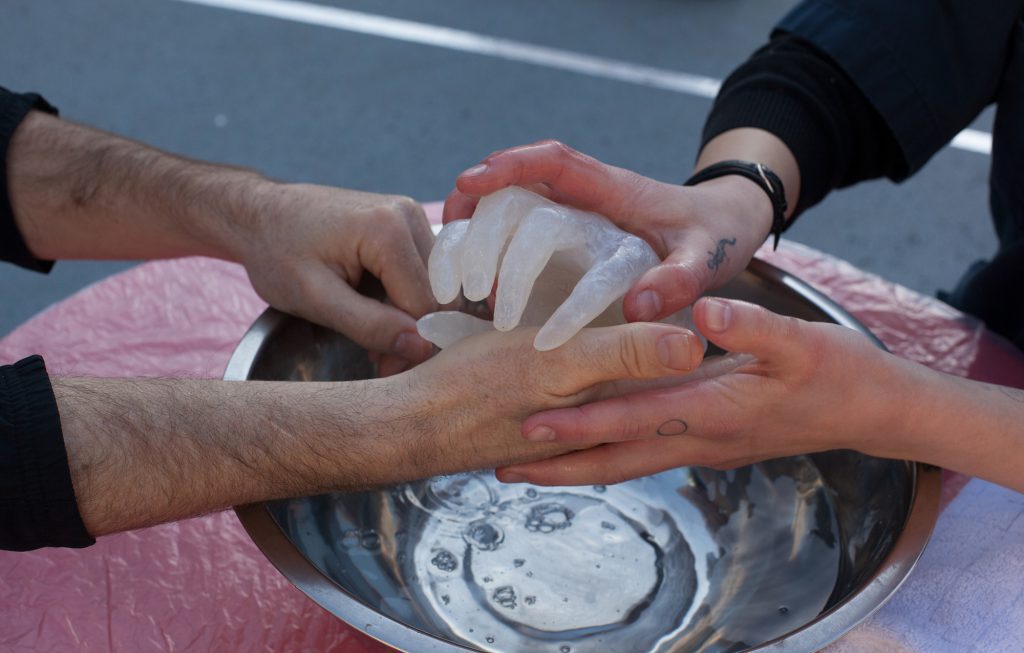
By Ella Adkins
The impermanence of our physical bodies is a reality that humans must constantly deny. For many, the so-called “degradation” of our physical selves through processes such as aging and sickness is something to be hidden, denied by lotions and serums, or frantically ‘cured’ by pills, medicines and procedures. There is an undeniable anxiety surrounding the act of decay that is living, since it is a reminder that regardless of our spiritual human experience, we can be reduced to a mass of muscle and bone that will slowly and inevitably decompose. Continue Reading
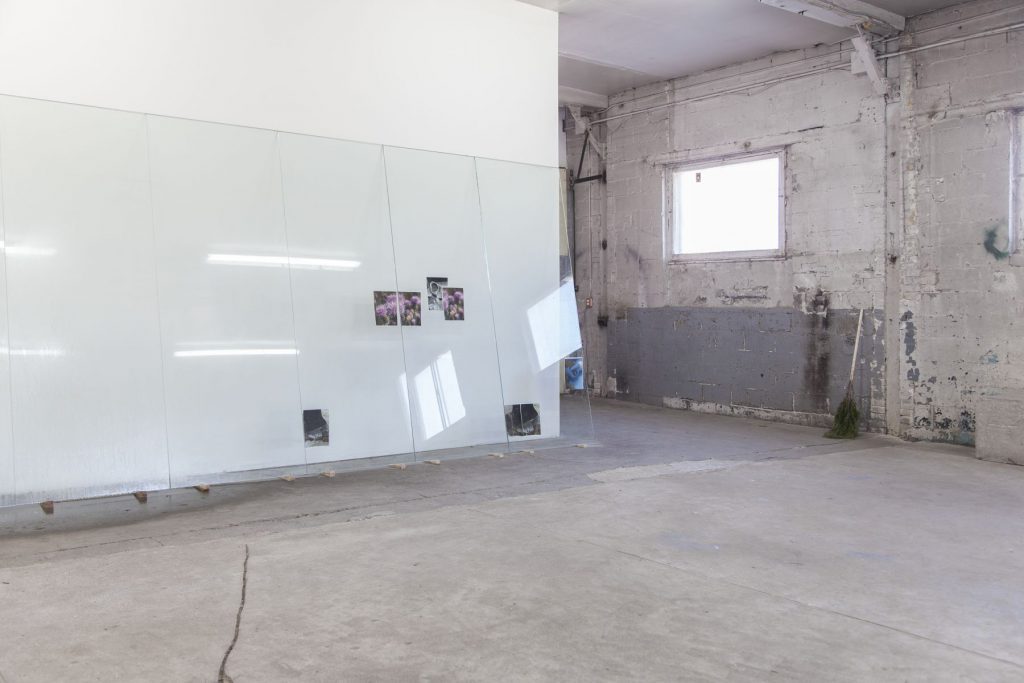
By Chris Andrews
A water-misting system attached to the ceiling of VIE D’ANGE gallery sprayed the subtle, unobtrusive artworks of Abbas Akhavan’s exhibition, Folly. Untitled (2018) is a homogeneous arrangement of materials comprised of an erratic boulder, a vintage fur coat and a plastic shopping bag. From a distance, the fur coat looked like moss on the rock, as drops of water hitting the hair of the vintage garment eventually rolled off onto the pill-yellow bag sourced from a local fruiterie. The misting system above was precariously tacked on, and held itself almost apologetically to the space’s gruff ceiling—as if an uninvited dinner guest. Sheets of glass leaned against a wall across from the sculptural installation, with inkjet-printed images sourced from the Internet taped to their verso, thus protected from the threatening mist. On the wall next to the sheets of glass, a broom furnished from a cedar branch leaned. Entitled Study for a Garden (2018) its flat, scale-like leaves brushed the cold floor. Everything was safe, but imperiled—something could slip or burst, and the sensitivities of the materials overwhelmed; upsetting Folly’s graceful negotiation of permanence and impermanence. Continue Reading
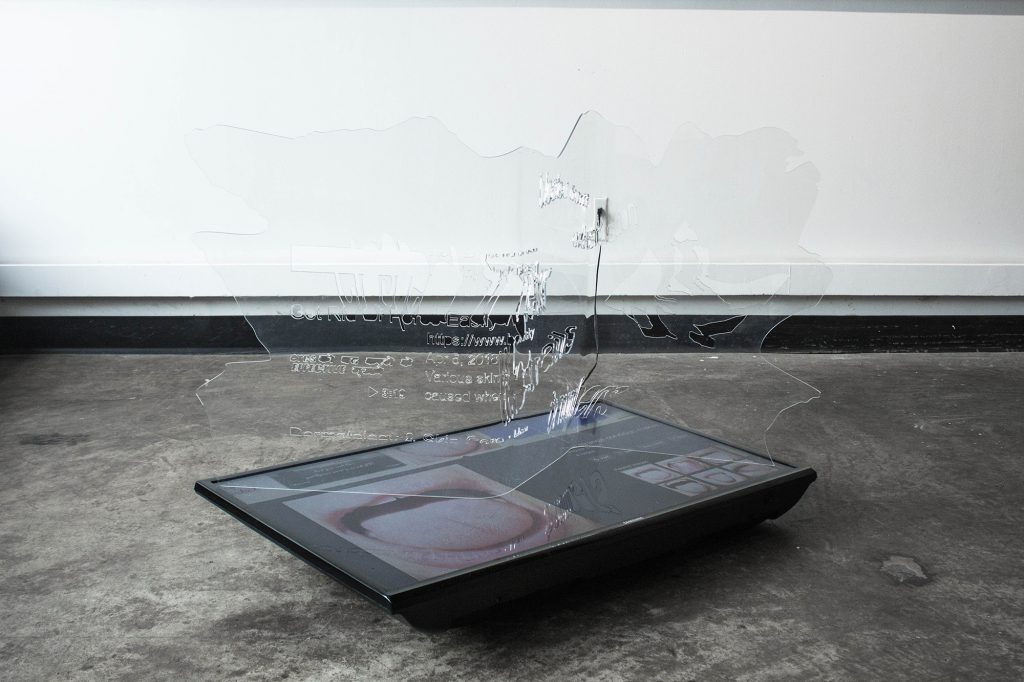
By Shauna Jean Doherty
By what metrics can you measure a digital object when it is situated in physical space? How (much) does it weigh? How does a .jpg feel against your skin?
In this exhibition, first-time collaborators Sophia Oppel and Blair Swann presented a curated repository of images that link together, often abstractly, in what culminates as a contemporary account of Hito Steyerl’s poor image rooted within the aesthetic milieu of the post-Internet.
Continue Reading

By Karina Iskandarsjah
The night-time is when we accumulate and ruminate on all of our thoughts, feelings, and memories—whether we like it or not. It is when the darkness of the world pools with the dark parts of our nature; our scars and internal struggles. Claire Christerson’s multimedia solo exhibition, Night Shade, tells us to embrace the convergence of these difficult emotions in the dark. Continue Reading

By Gillian Haigh
Just beyond the small reception area of the Western Front, a black doorway called to me. Inside, a chorus of echoing crickets and croaks harmonized with an unworldly drone. The noise beckoned me into the tenebrous space, pulling me through the doorway into a cloth hallway cloaked in total darkness. The room opened up to reveal a dimly lit space with three large metal mobiles laden with collections of fabric, moss, dried leaves, flowers, photographs, and other found objects. The materials hung, some sweeping the floor or wall as they slowly rotated on chains. These strangely figurative compositions, coupled with the otherworldly symphonic hum of the soundscape, welcomed visitors to sink into the bog.
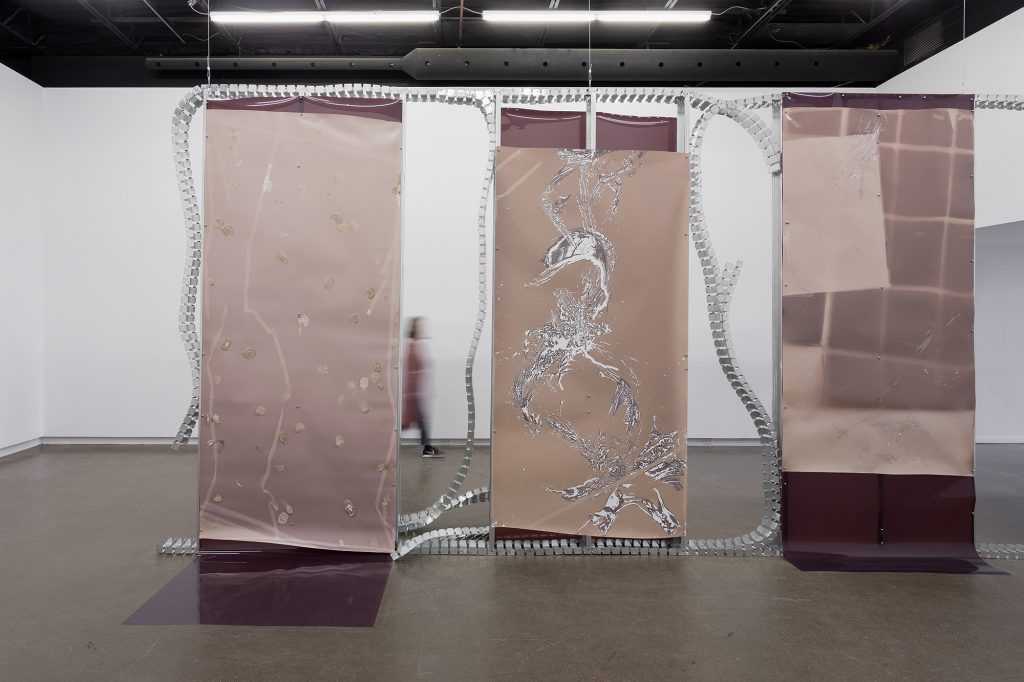
By Jenine Marsh
I view Laurie Kang’s A Body Knots on my phone, as images. I’m on another continent, missing the show. But feeling that I know her and her practice pretty intimately makes up for some, though not all, of the texture and spacing that the real thing provides. At Gallery TPW in Toronto, a steel skeleton wall of studs and flexible tracking marks a new—albeit permeable—barrier through the two adjacent gallery spaces. In the second and larger gallery, four analog photograms of un-fixed, thickly applied darkroom chemicals on overlarge paper hang loose and heavy from the studs. Although forever halted in the jpgs, these photograms’ chemicals will continue to develop and change, reacting slowly, subtly, to the light in whichever space they occupy. Tiny silver spherical magnets hold the prints in place. Continue Reading
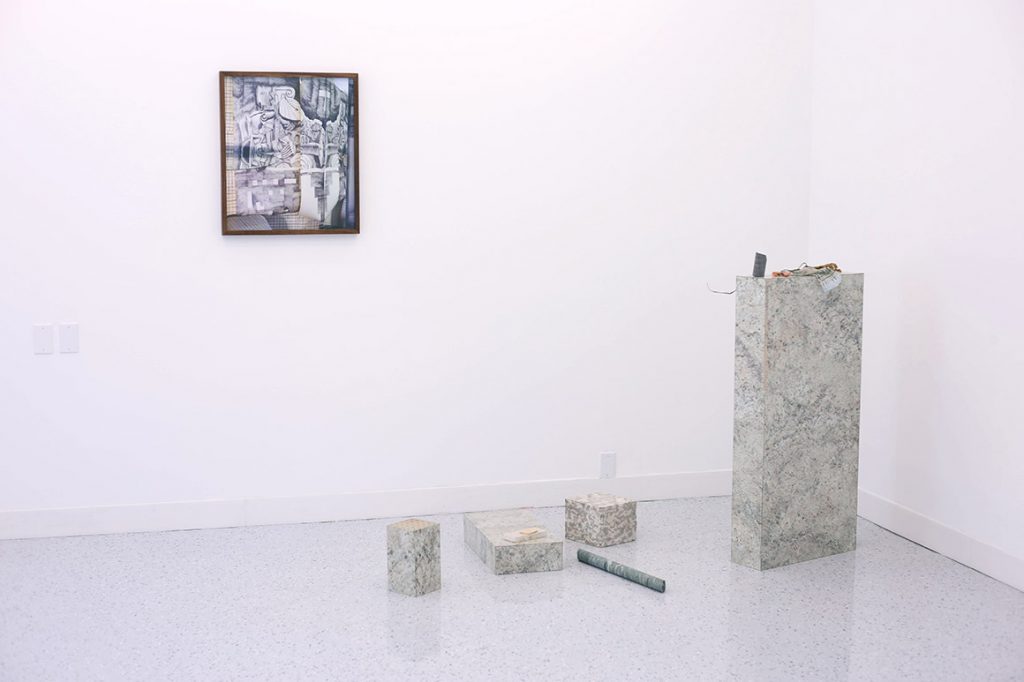
By Lauren Lavery
The history of a space is burdened. When looking at a space, these histories become apparent, but they also go into hiding. When I consider of the history of a building, I first think of the material it is made of: clay bricks, concrete, wood, plaster. But what about the non-visible elements, such as the individuals come and gone, the events hosted and the objects held within? The history of such abstract, in-between space is then what cannot be documented by the past alone, it must be translated into another form altogether, be it the written word, a photograph or a story. But these methods are often biased, and when it comes to art, not always as clear as they could be. Continue Reading
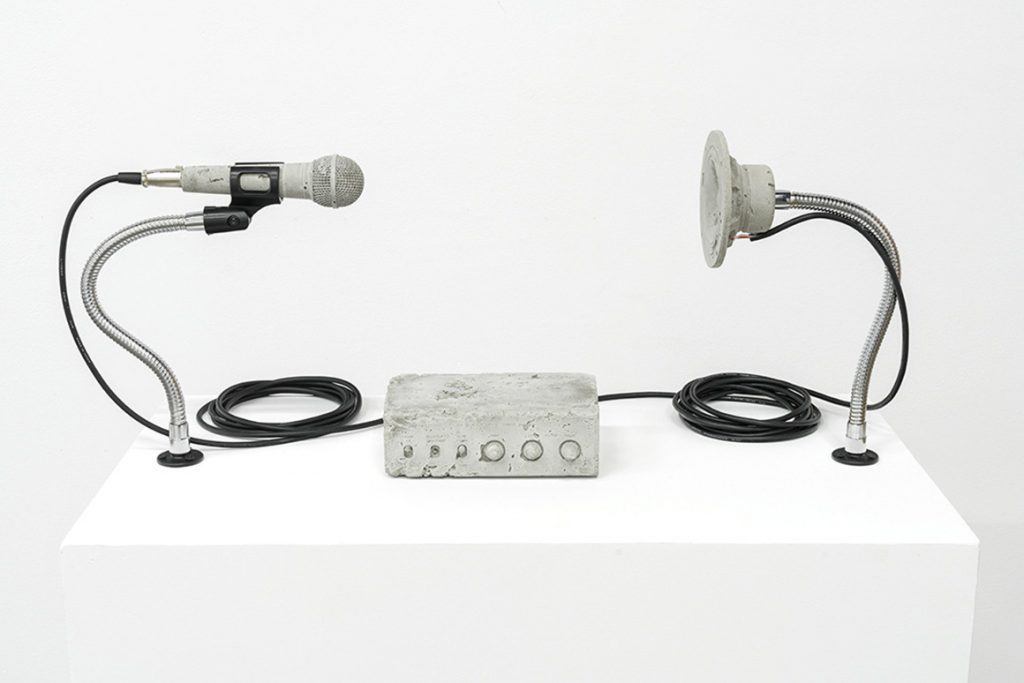
By Shauna Jean Doherty
Adam Basanta’s compositions (whether material or sonic) possess a resonance that deconstructs the foundational principles of acoustics: his work sees sound, composes silence, and locates melody in the din of a hum. Through the creation of sculptures that oscillate between the absence and presence of sound, Basanta reflects on a contemporary climate saturated by noise, proposing strategies of feedback and silence as methods to counteract a deafening modern landscape. Through this technical finesse his creation of sound-based systems intervenes in the social, material, and spatial processes inherent in auditory experience. (1)
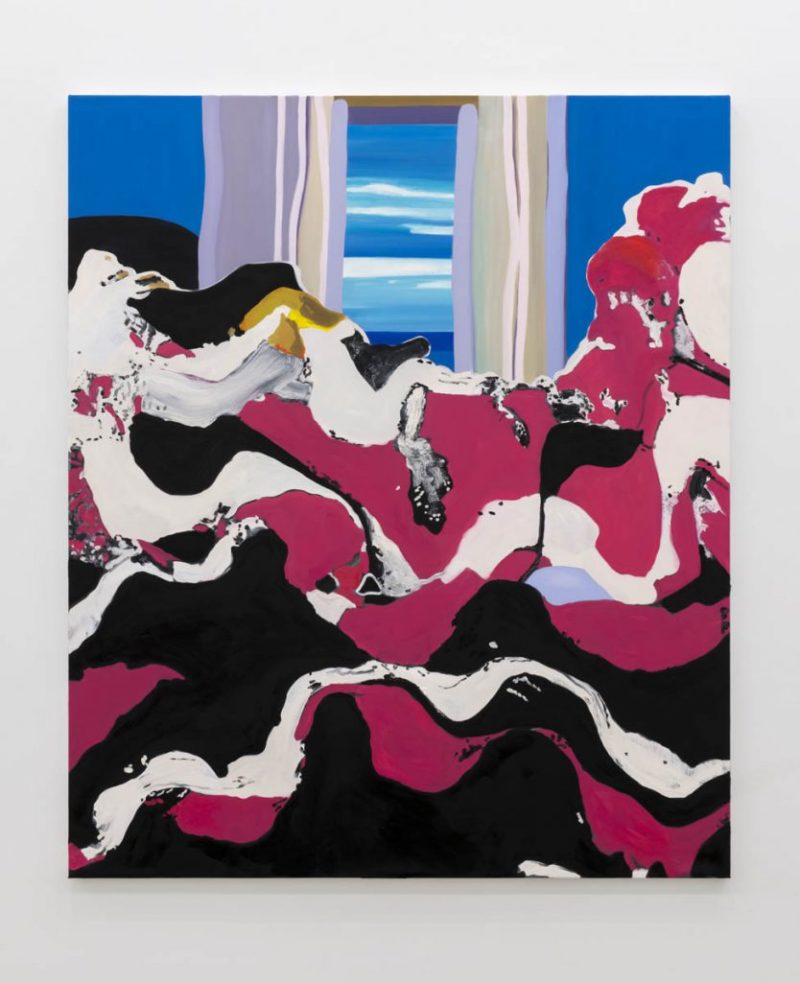
By Andrew Witt
Last year a number exhibitions, events and talks addressed the state of contemporary painting in Vancouver. The following essay is a belated survey of these exhibitions and events but also an analysis of the blind spots, clichés and missed opportunities that have stood out during the discussion. Paying close attention to the works on display, ‘Painting and Obstinacy’ attempts to short-circuit the dominant currents and tendencies of the debate by thinking through how the artworks themselves, through their formal manoeuvres and political content, shore up a new vocabulary for the reception of contemporary painting in the present.

by Christine De Vuono
Approaching Tamara Henderson’s Seasons End: Out of Body exhibition in Oakville’s Centennial Gallery, one is greeted by a display reminiscent of an ethnographic collection of an ancient culture’s esoteric regalia and artifacts. The collection of robed figures stand in a dense, haphazard formation, curiously pulling the viewer into their maze-like world. Dimly lit with tempered overhead lights of blue, magenta and green, the costumed figures impede the viewer’s ability to examine the exhibition as a complete entity. Tamara Henderson’s final rendition of this ever-changing, internationally-shown installation draws the viewer into a dreamlike world of talismans and detritus, impermanence and demise, each holding equal status within the display. Henderson attempts to create an exhibit of otherworldly and spiritually infused artifacts created from her personal reference points, ultimately rendering them with uneven success. Continue Reading
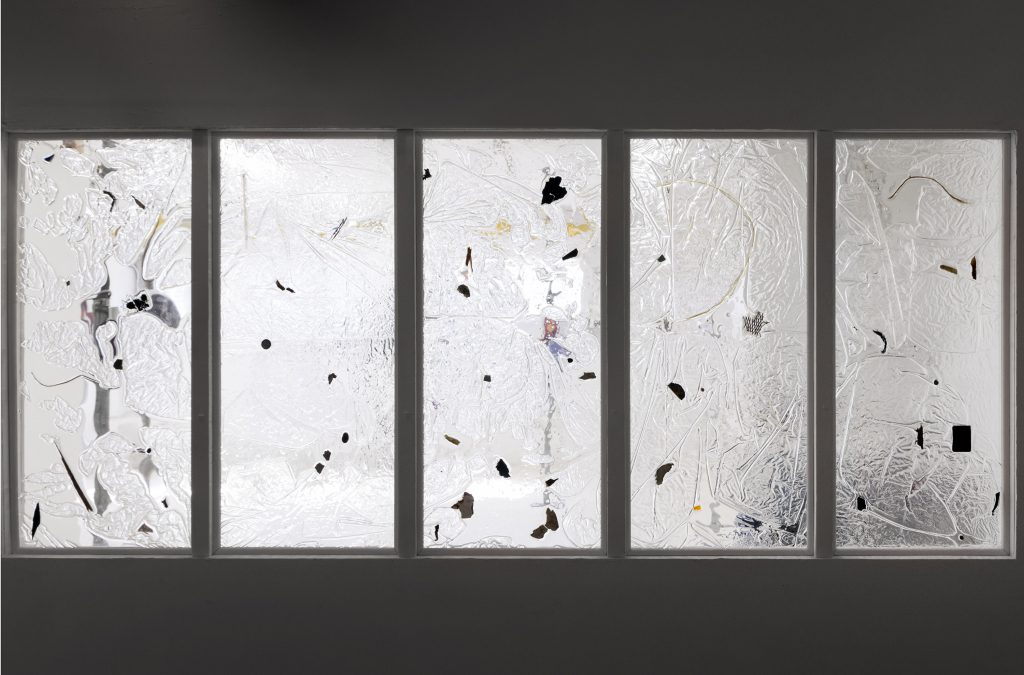
By Tiffany Schofield
Bestowed on us at the entrance of She Makes Two From One and One, a two-person exhibition by Shannon Garden-Smith and Emily Smit-Dicks, is a text by Jasmine Reimer. “At the table, the sisters wear plastic scraps of light”, an excerpt of the poetic work reads. It’s a fitting narrative, for there is no doubt that we are entering the domestic abode of two sisters. Their shared tendencies (and might we say neuroses?) are on display in muted tones, obsessive materiality and labour-intensive production. One of the first exhibitions to take place after 8eleven’s relocation to 888 Dupont, Garden-Smith and Smit-Dicks handle the dérive with grace. Come in, stay awhile, they beckon.
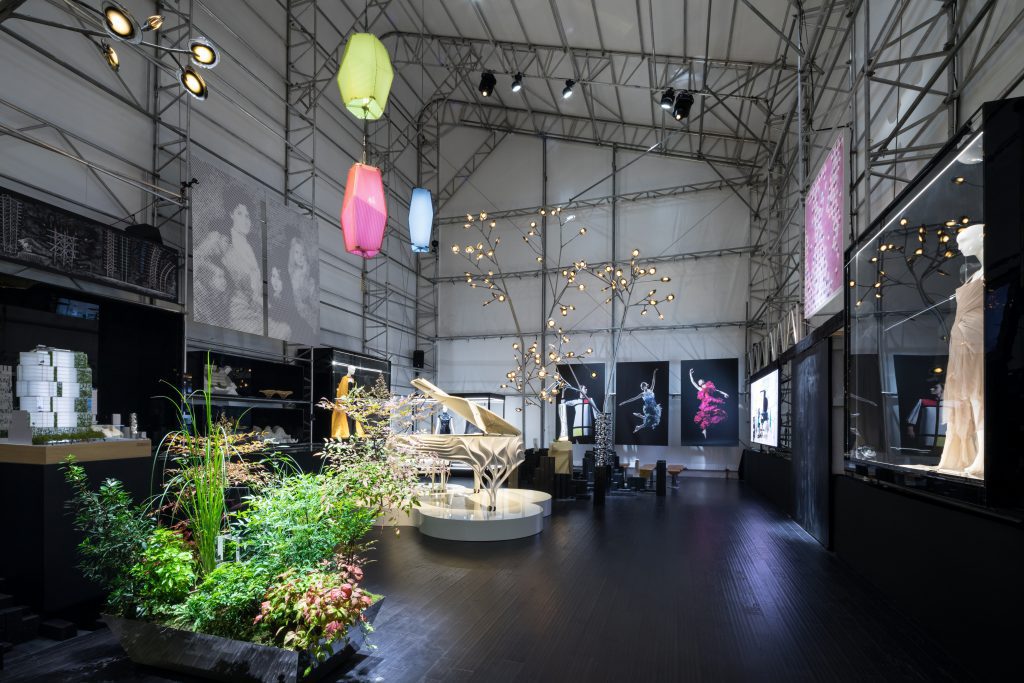
By Brit Bachmann
“This exhibition is an attempt to illicit your support. We want you to buy in, to sign up, and join us in what we see as nothing less than an essential endeavour to protect, nurture, create and value all that is beautiful.” (1)
Ian Gillespie, founder of Westbank Corporation conveniently summarizes the intention of Fight for Beauty in the opening track from the audio guide. The exhibition, located in a tent outside Vancouver’s Fairmont Pacific Rim, is a lavish attempt to masquerade real estate development as art, to posture condo sales as altruism, and to mislead the public into joining a movement that satirizes anti-gentrification and affordable housing initiatives across Canada. Continue Reading
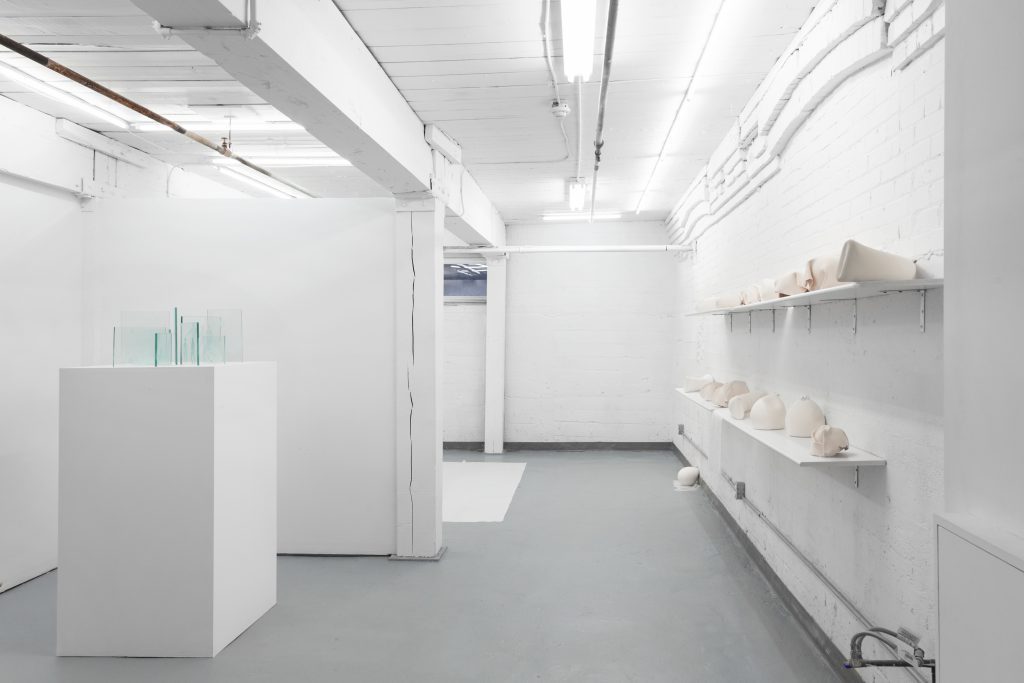
By John Nyman
For Abbas Akhavan, Sameer Farooq, and Joshua Vettivelu, intimacy describes an oscillation of investments and outpourings, a rhythm of emotional life. Loss, too, plays an important part in Vacancies, their group show at Toronto’s Towards gallery, though it acts less as the lack of a distant ideal than the vehicle for a circulation of affects. Loss, in other words, is the means by which our vulnerabilities—including those of emotion, identity, physicality, and expression—allow us to be moved. By strategically invoking the resilience of art objects, the artists featured in Vacancies help us relive our experiences of these difficult and often transitory feelings in respectful conversation with others’. Continue Reading
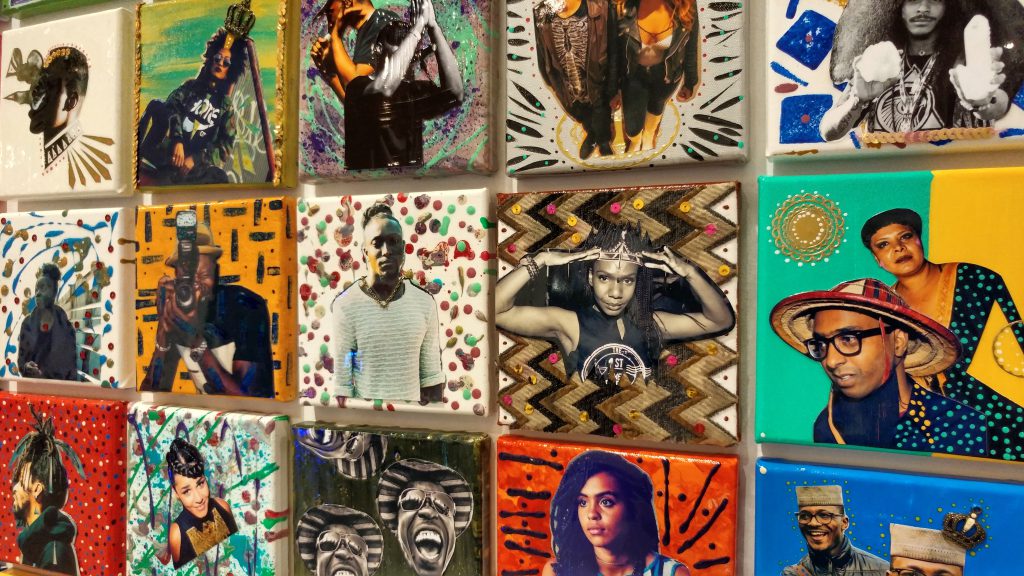
By Olivia Wallace
Stepping into Daniels Spectrum is not your everyday gallery visit. Daniels Spectrum is the cultural hub for Toronto’s Regent Park—a neighbourhood of individuals from a wide range of socioeconomic and racial backgrounds. The Invisible Majority, displayed in the Hallway Galleries of Daniels Spectrum, is Zahra Siddiqui’s first solo exhibition. The artist is a Torontonian of South Asian descent whose photography practice has centered on people of colour from Toronto, the Caribbean and the US. Her portraits, as described in the gallery write-up, “[demand] our respect and reverence for her subjects” and “[connect] us to the actual composition of this multicultural metropolis”. (1) Considering Siddiqui’s usual practice, I anticipated an unparalleled perspective in portrait photography. Her kaleidoscope of remixed photographs delivered that and much more. Continue Reading
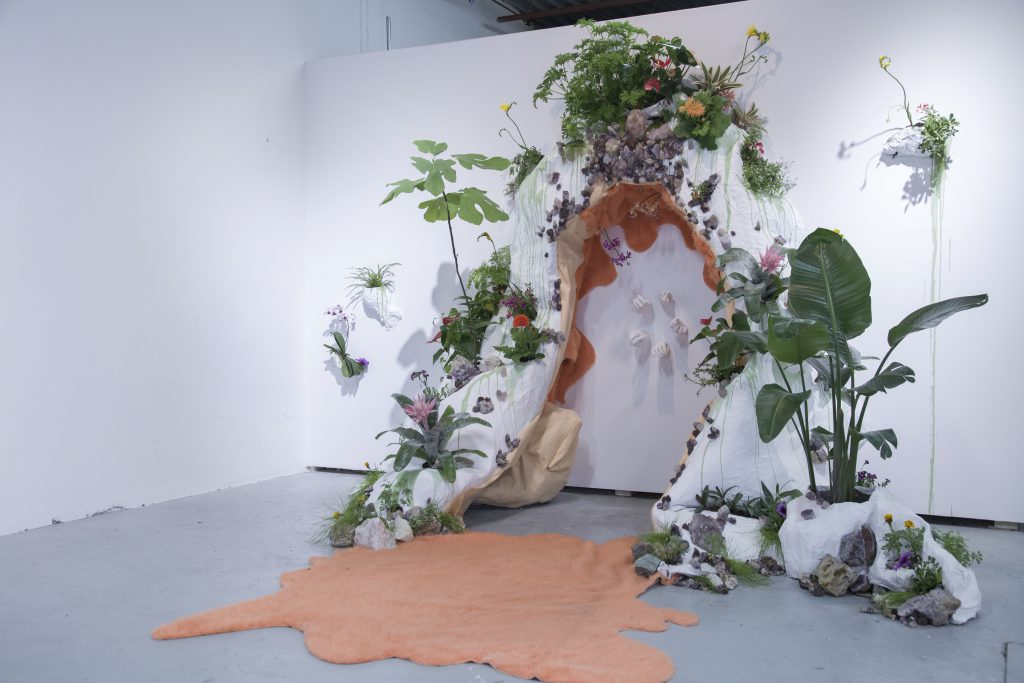
By Philippe Pamela Dungao
To walk through home* is to inhabit the contentious space that locates belonging and queer subjectivity. Curated by Adrienne Crossman and exhibited in Toronto’s R \ F gallery, home* featured works from four Ontario based artists working across disciplines and mediums: Sarah Kelly, Lee D’Angelo, Bethany Rose Puttkemery, and Luke Maddaford. With works that explored the intersection of queerness, community, and belonging, home* felt like an arrival to one’s own queer identity, a homecoming in more ways than one. Continue Reading
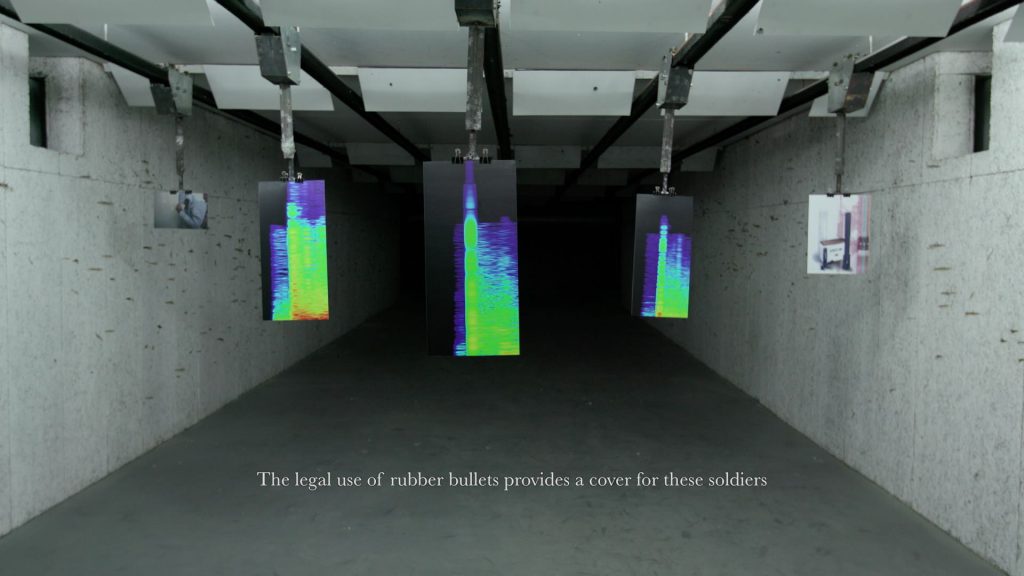
By John Nyman
In Beirut—or, perhaps equally probable, in Toronto—a woman or a man shakes their head at me. Not the slow back-and-forth of a stubborn “No,” but a rapid jostle, with something like the velocity of a spring recoiling. It means “I don’t understand,” “I didn’t hear you.”
Growing up in settler Canadian culture, I learned to communicate the same message with a blank stare, maybe a head cocked sideways. But I find something different in the Arabic gesture, which isn’t so passive or absorptive. It is, in part, supplicant, since it admits there is something crucial the gesturer hasn’t grasped. But it is also assertive, even commanding: it says, “You meant to say something, so say it!” Rarely do I feel so called to account for being misheard. Continue Reading
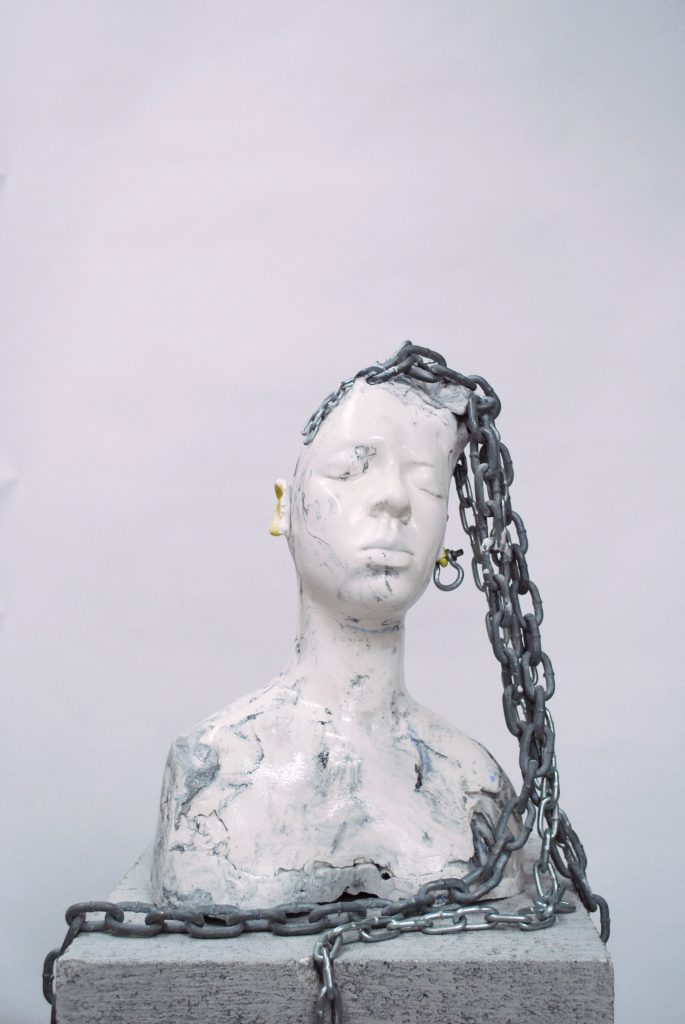
By Tori Maas
When I first walked into the gallery at the opening reception for The Un-Othered Body, I was met by artist Dainesha Nugent-Palache’s Unwelcome Mat, a fitting beginning and anchor for an exhibition that unapologetically asserted and centred the voices of six women of colour whose work was brought together by curator Esmaa Mohamoud. Nugent-Palache’s Unwelcome Mat is made with yarn, Kanekalon synthetic hair, human hair, and beads. The contrasting yet earthy tones spelled out the word “UNWELCOME” in bold, block letters. For me, it didn’t feel like a signpost saying that I was unwelcome, rather it symbolized an act of strength. The mat embodied a voice though there was no real speaker; the voices and bodies of women otherwise silenced—or othered—came forward in this work. Continue Reading
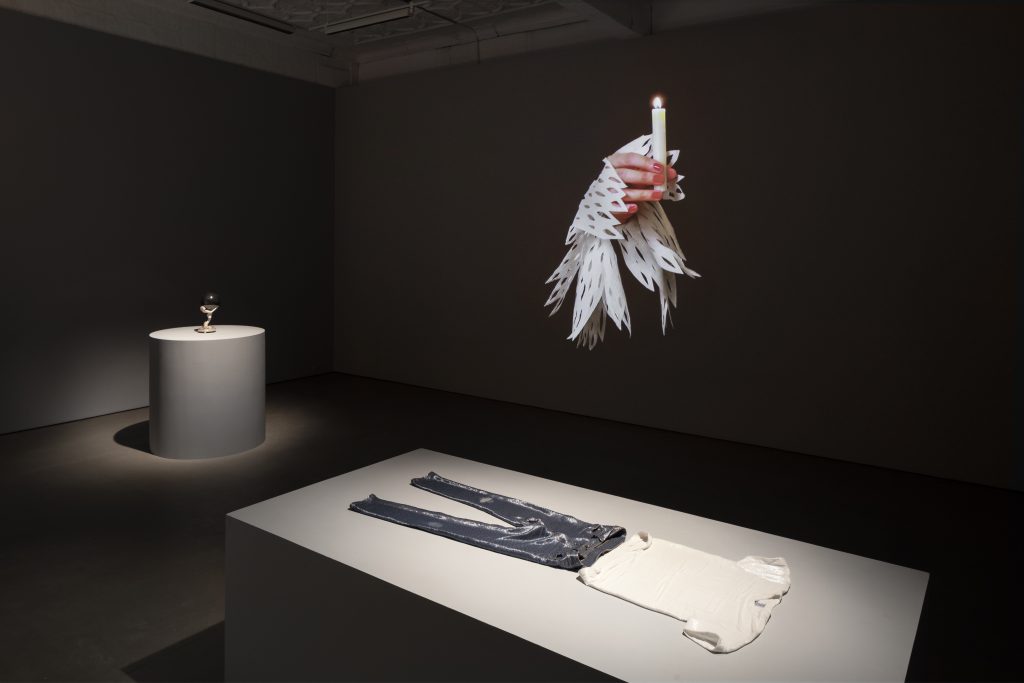
By Evan Pavka
“Body” is an unconfined term, referring to the personal—skin and bone—and the celestial—stars and orbiting planets. The word also signals the individual—my body—while referring to the collective—a political body. At Mercer Union the exhibition Astral Bodies, comprised of works by Shary Boyle, Shuvinai Ashoona, Karen Azoulay, Pamela Norrish, and Spring Hurlbut, questioned the possibility of a body beyond this. Continue Reading
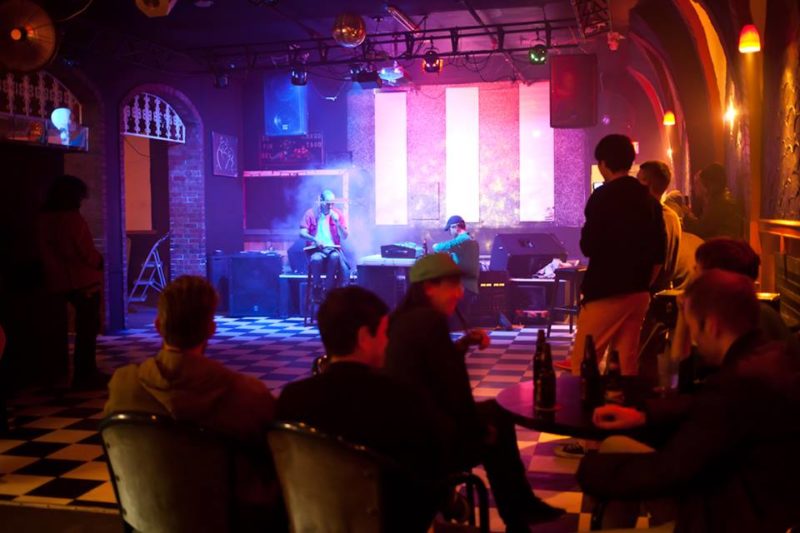
By Daniel Colussi
For just over a year Vancouver based interdisciplinary artist, filmmaker and musician Casey Wei has produced a series of shows under the banner of art rock? Wei’s practice is primarily in film and video but she has also curated several site-specific projects that transform the character and use of communal space. For Toronto’s 2015 Images Festival, Wei was the first ever artist-in-residence at the Chinatown Centre Mall on Spadina Avenue. She activated the mall’s lower mezzanine with ballroom dancing, mahjong tables, karaoke and live music, the kind of activities reflective of the demographics of mall’s primary users, who are for the most part Chinese and elderly. For the course of that week, Wei virtually never left the confines of the mall, during the day she hosted and documented the lower mezzanine and at night she had in a room in the Super 8 hotel attached to the mall. Continue Reading
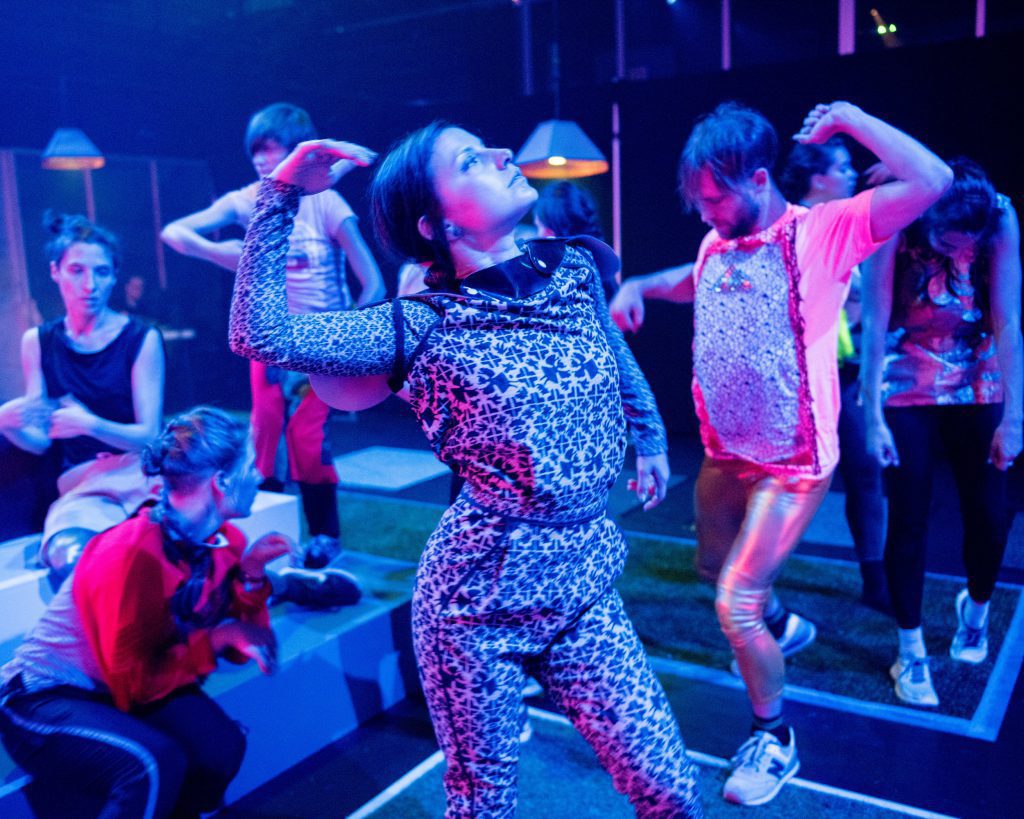
By Ella Adkins
DIGITAL FOLK, a three year project created by the artist collective Plastic Orchid Factory, was a costume party, video game and dance extravaganza, an intersection of technology and the physicality of dance, and exemplified how communities gather to play music, dance and tell stories. Continue Reading
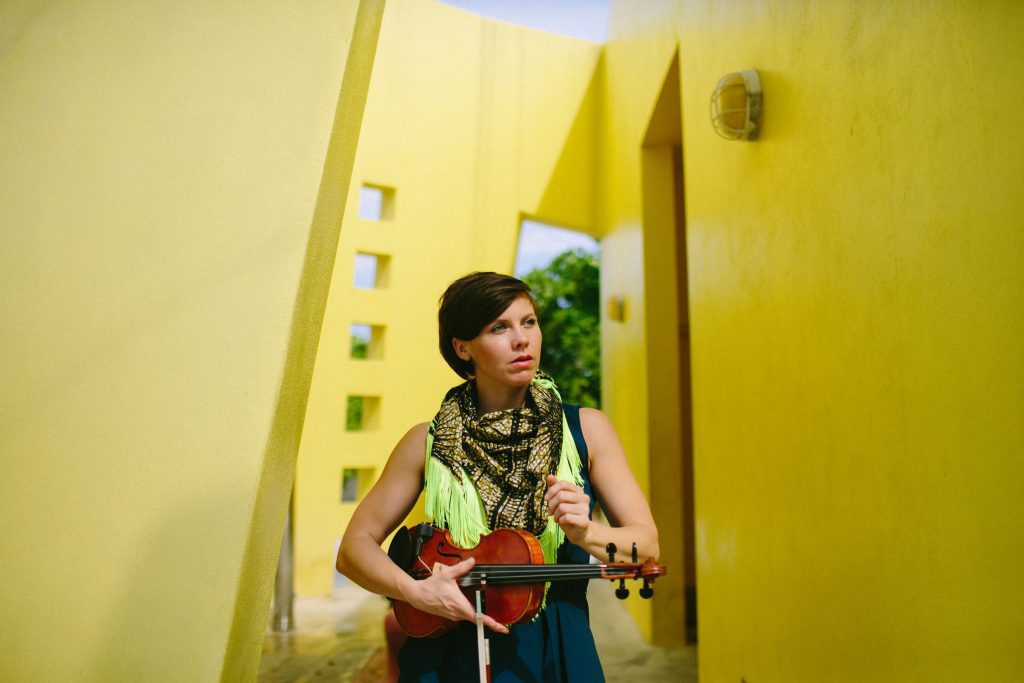
By Glenn Vanderkloet
The Music Gallery (MG), located within St. George the Martyr Anglican Church at the southern end of Toronto’s Grange Park is, according to its website, “a centre for promoting and presenting innovation and experimentation in all forms of music, and for encouraging cross-pollination between genres, disciplines and audience.” I would say that it unequivocally delivered on its mandate and did so in a highly entertaining fashion on a recent visit payed by myself and my consort. The impetus for the visit was a performance by Violinist Sarah Neufeld, as well as some not as well known, but equally impressive opening performers. Continue Reading
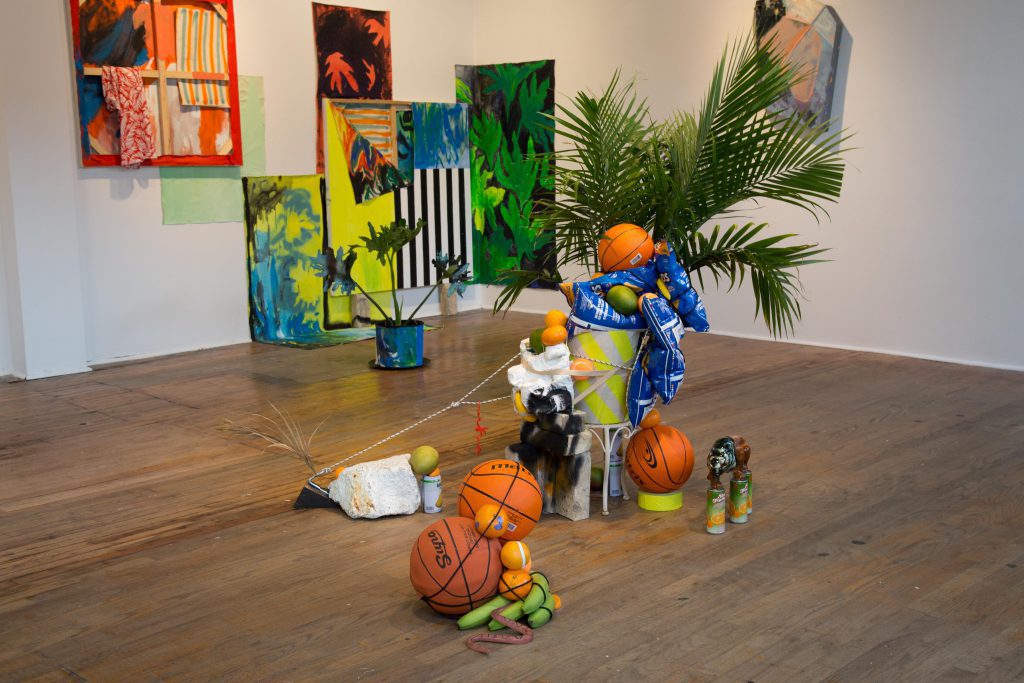
By Tori Maas
Stretched Painting brought together the work of four female artists, all of whom are interested in referencing the conventional notions of painting while pushing their work into three-dimensions. Fields of texture, lavish colour and art historical references were transformed onto multiple planes for the viewer to traverse. Situated at the Ontario College of Art & Design University Student Gallery from September 8th until October 1st 2016, the show also marked the beginning of the 2016/2017 academic year at OCAD University. The exhibition was curated by Toronto-based artist Emily Harrison, and featured the work of Wallis Cheung, Michelle Foran, Jennifer Wigmore as well as Harrison herself. With varied approaches to materiality and process, each artist brought different perspectives to the curatorial theme of expanding the field of painting. Continue Reading
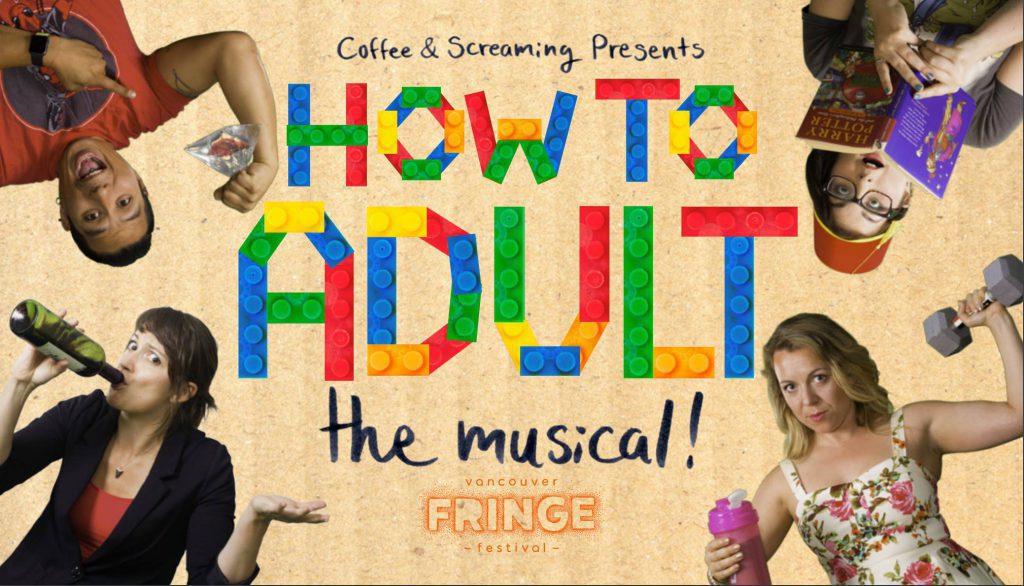
By Nathan Marsh
The life of a so-called “millennial” is often misunderstood. For members of older generations, the panoply of digital technologies readily available to the generally tech-savvy young people of today seem to present a much easier way of living than the way they themselves once experienced. However, life in the modern digital age has its complications, a point that playwright Amy Dauer, the writer of How to Adult: The Musical which premiered at the 2016 edition of the Vancouver Fringe Festival, would no doubt be very quick to make. Continue Reading
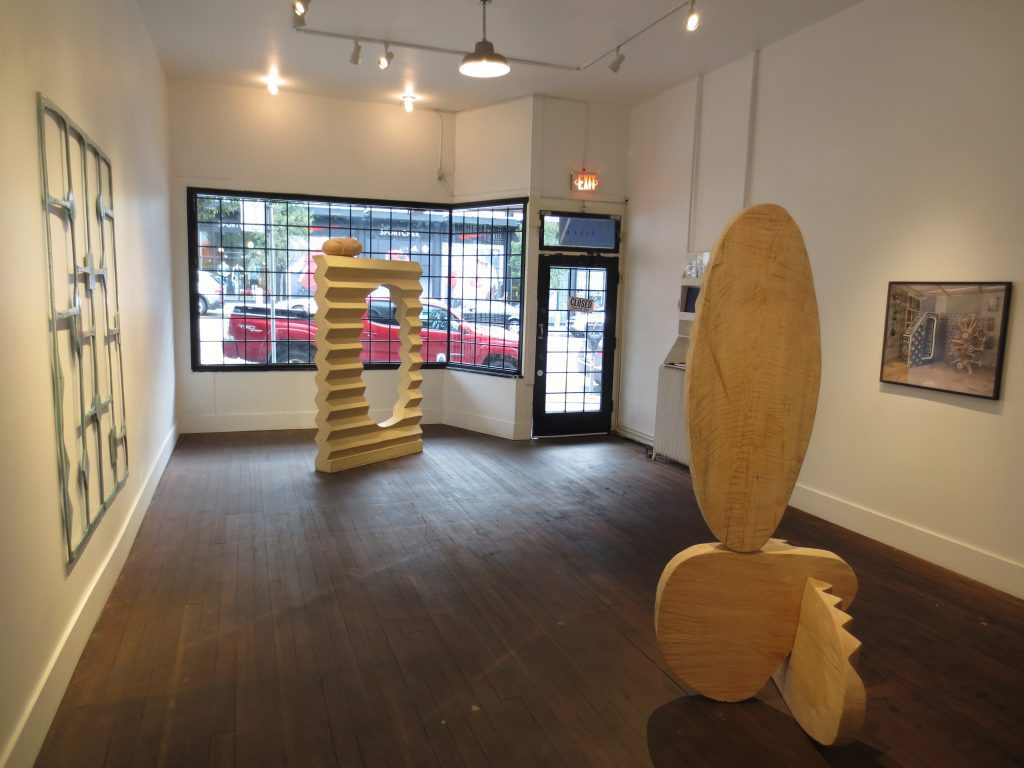
By Sara Korzec
From September 16th till October 22nd Field Contemporary hosted an exhibition titled Electric Cedar, Hemlock Blues by artist Cameron Kerr. A small group of sculptures, presented in a clean and minimalist arrangement in the gallery space quickly enveloped the viewers senses with the fresh scent of timber–Kerr uses wood salvaged from logging waste on northern Vancouver Island. It was difficult to control yourself and not want to touch them, as it seemed that they spoke some sort of haptic language. The leaking glaze on the geometrical sculptures resembled ceramics, (an epoxy method created this impression) which for me, triggered associations of fever visions–well, now you understand why the works were titled, Hallucinations. Continue Reading

By Kristina Fiedrich
A woman dances alone on a stage. The swathes of fabric bellowing and collapsing around her as she moves; spinning, swirling. From one moment to the next, the dancer’s body becomes engulfed by the folds of fabric, disappearing from view, while simultaneously expanding, transforming and breathing beyond her skin. Described by art critic Mallarmé as resembling giant petals, butterflies or a conch shell unfurling, (1) the dancer, suspended in place and time, is an apparition. Her body, disproportionate and malleable, is an abstraction of flesh and movement, taking up and traveling through space. Continue Reading
Video and Review by Adriana Lademann
Held August 20th 2016 at the Aviary, this was Miki Auroras second public performance entitled, To Hack the Ether: Maidens of the Matrix. Continue Reading
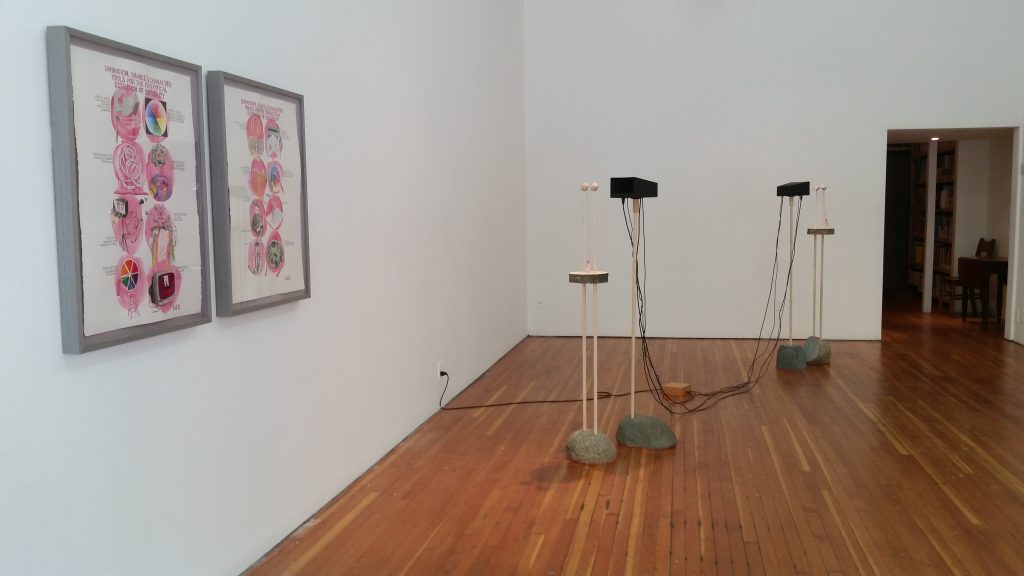
By Lauren Lavery
Hosted at Artspeak gallery in April of this year, The Accursed Share was an exhibition featuring the work of artists Aleesa Cohene, Deborah Edmeades and Derek Dunlop. The exhibition was guest curated by Marina Roy, a Vancouver-based artist, writer and curator whose interest lies in the intersection between language and art, thus making the use of the word accursed an intriguing choice, considering its reference to the essays by George Bataille aptly titled, The Accursed Share (La part maudite) from 1949. Continue Reading
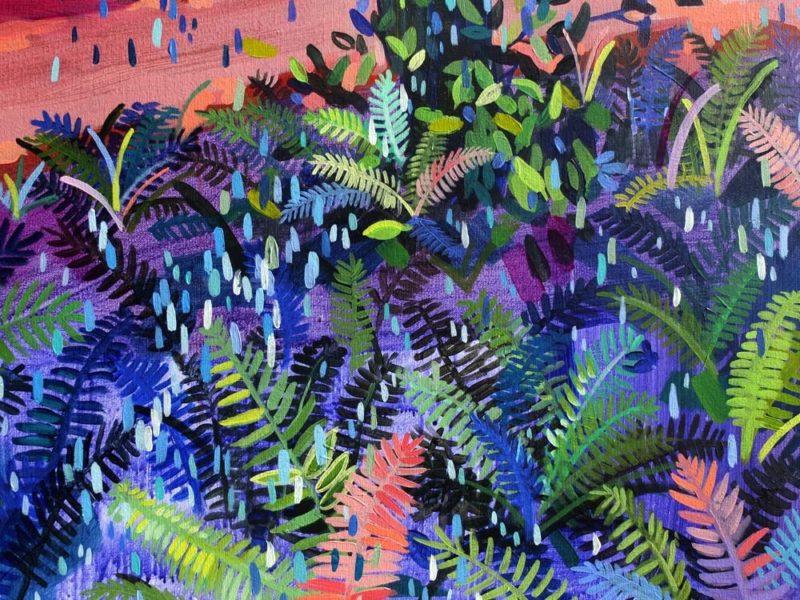
By Adriana Lademann
Held at the Toast Collective from May 12 to May 21st What Will We Do With These Natural Gifts? features Lauren Everall, Liz Toohey-Wiese, Hailey Gooch , Haley Hunt-Brondwin, Jo Peter, five artists who met during their BFA at Emily Carr and have shown together on several occasions. Continue Reading
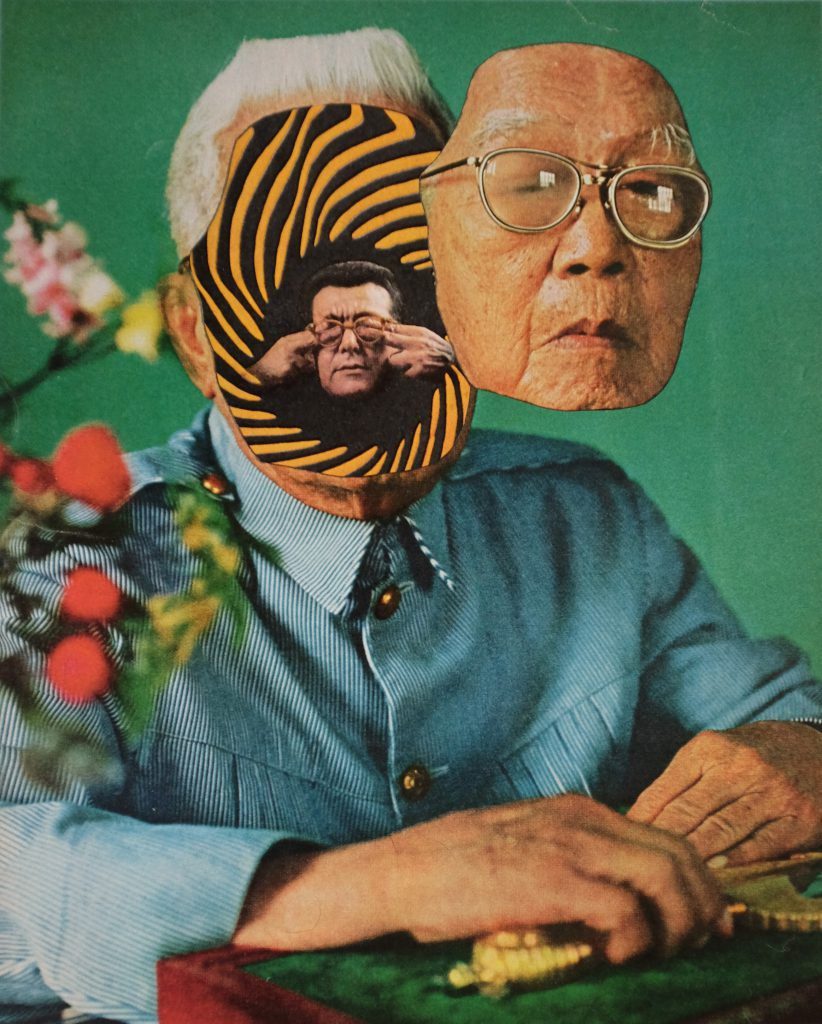
By Genevieve Michaels
Jordan Westre and Kaz Simpson’s works inhabit a common universe. There’s the same sepia-toned nostalgia to Simpson’s marbled photo backgrounds, and the vintage landscapes that form the basis for Westre’s collage. From radically different approaches, they explore a common ground. Both artists give the sense of looking in on a frozen moment, a story as it unfolds. Continue Reading
Video by Adriana Lademann
Interview with Zandi Dandizette from the James Black Gallery about their latest show IRL:URL
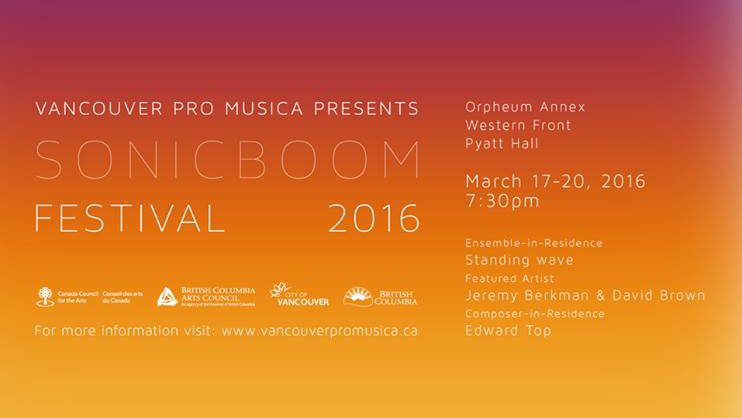
By Nathan Marsh
Since its inception as an organization in 1984, Vancouver Pro Musica has dedicated itself to the artistic development of British Columbia’s composers of new music. Each spring Vancouver Pro Musica hosts its Sonic Boom Festival, taking place over an entire weekend with different concerts playing every night from Thursday to Sunday, and a composer’s masterclass workshop taking place on Sunday morning. Saturday and Sunday are generally considered the big nights, featuring the organization’s ensemble-in-residence for the season, usually a Vancouver-based ensemble of great repute such as this season’s wonderful Standing Wave Ensemble, and new work from their composer-in-residence for the year, Edward Top, in amongst the work of other well-known Vancouver-based composers. Continue Reading